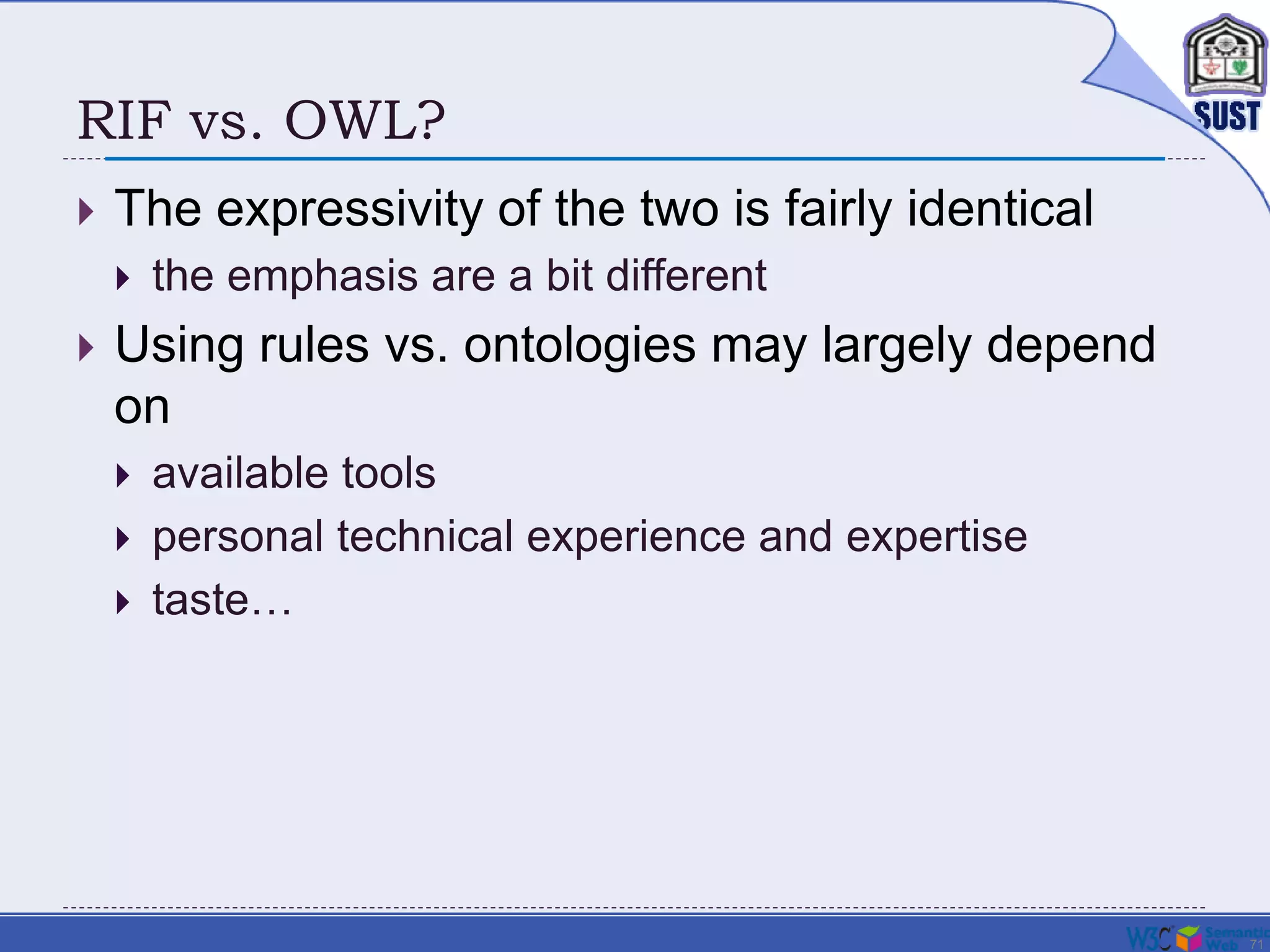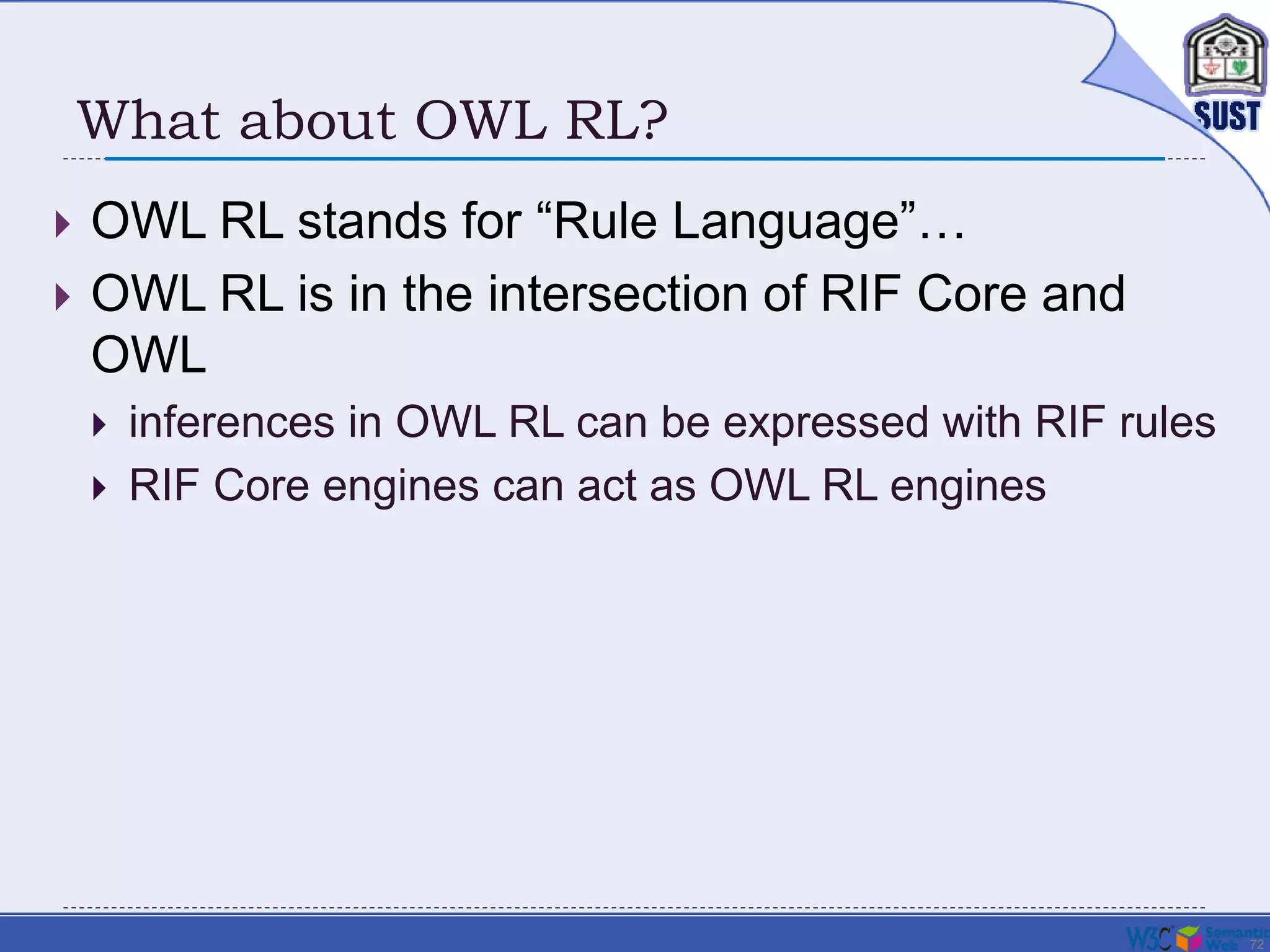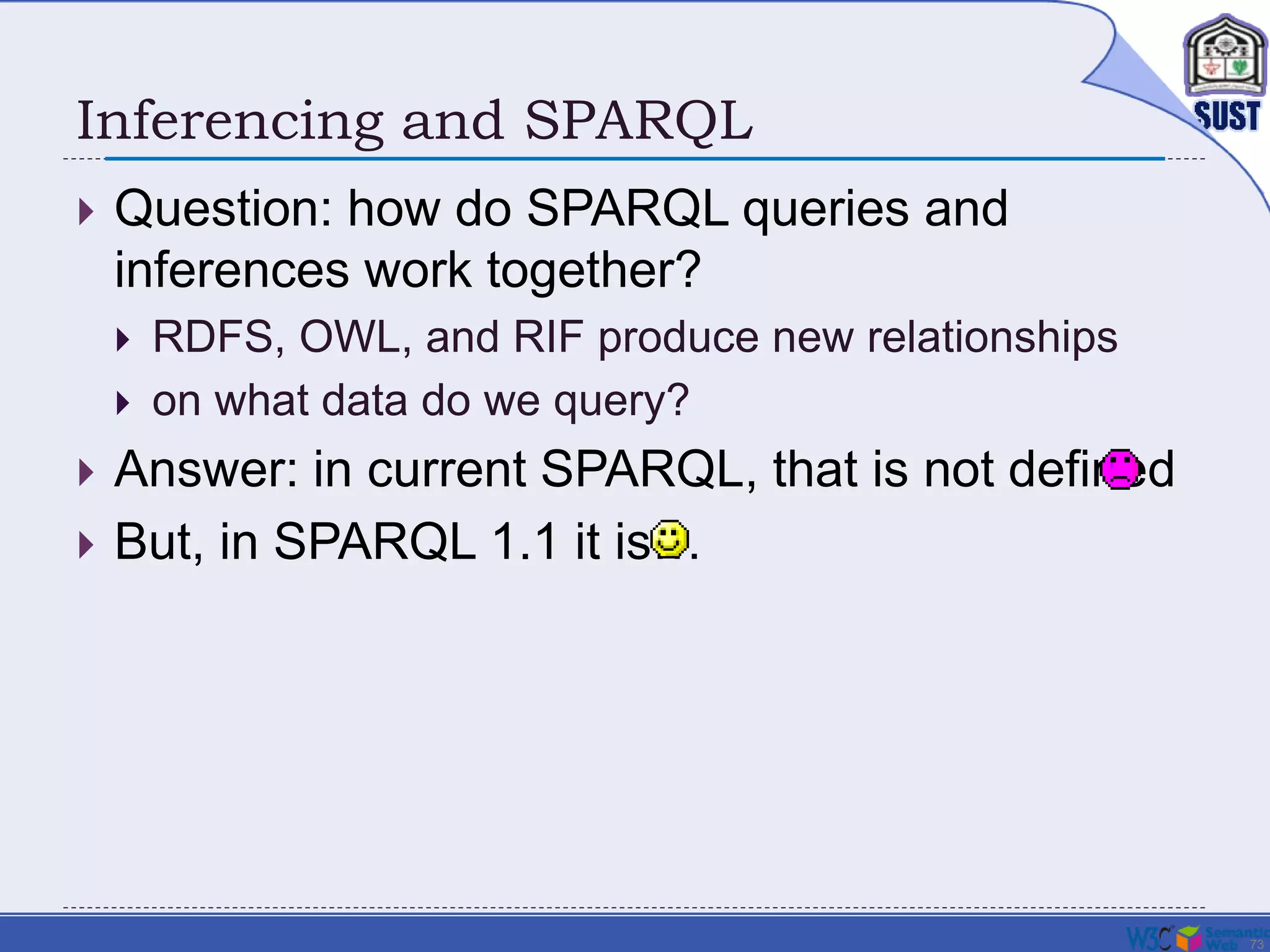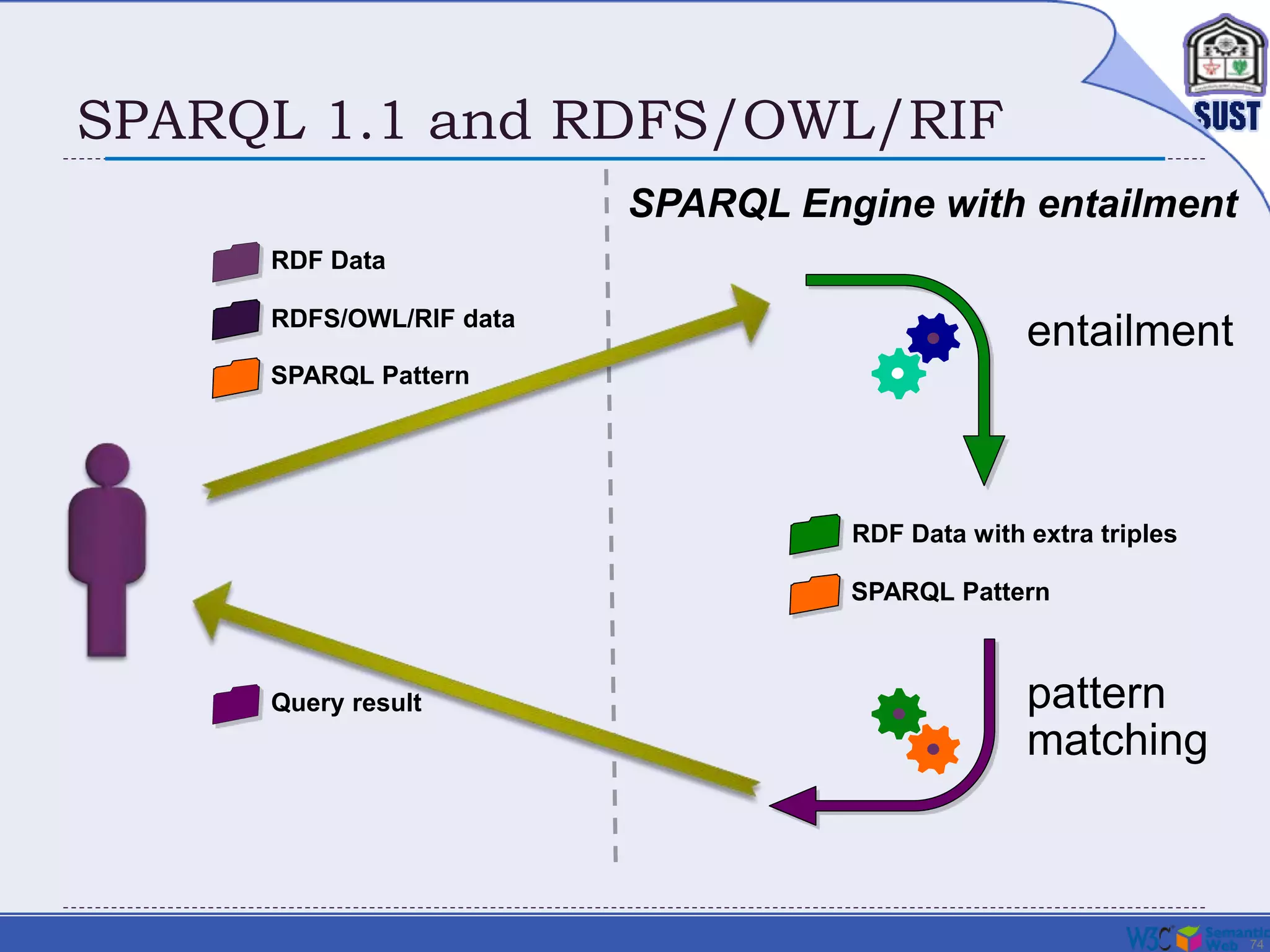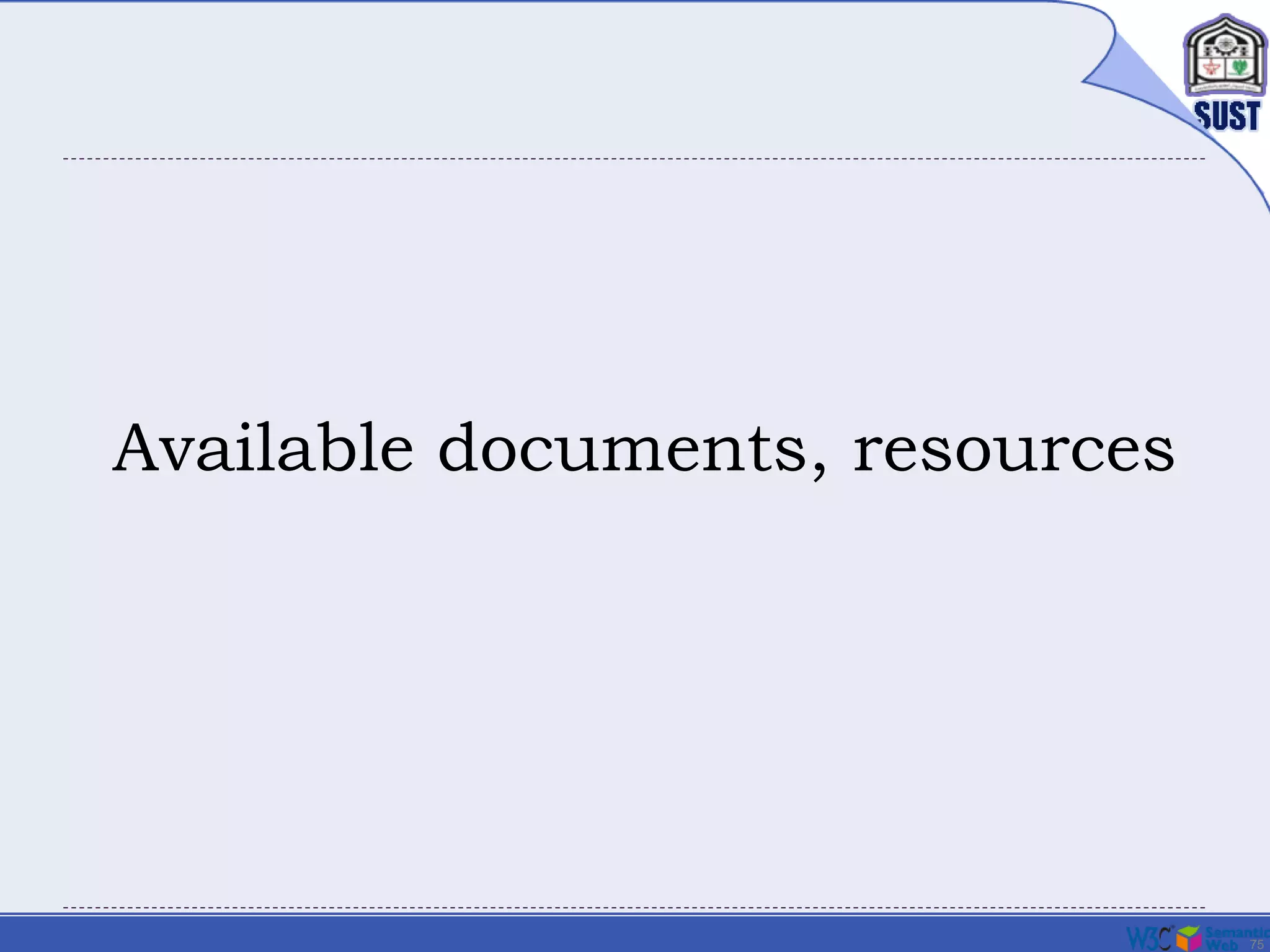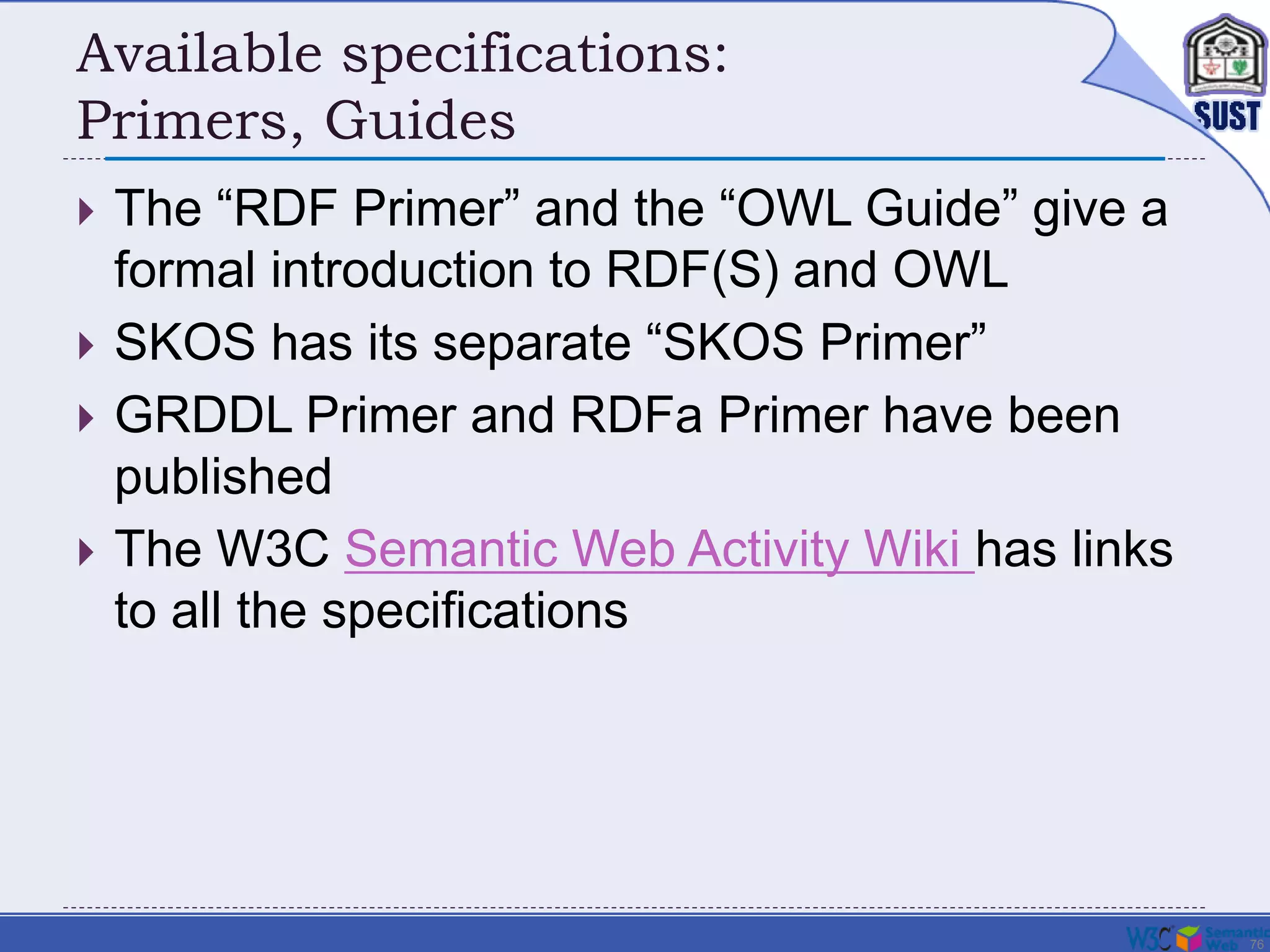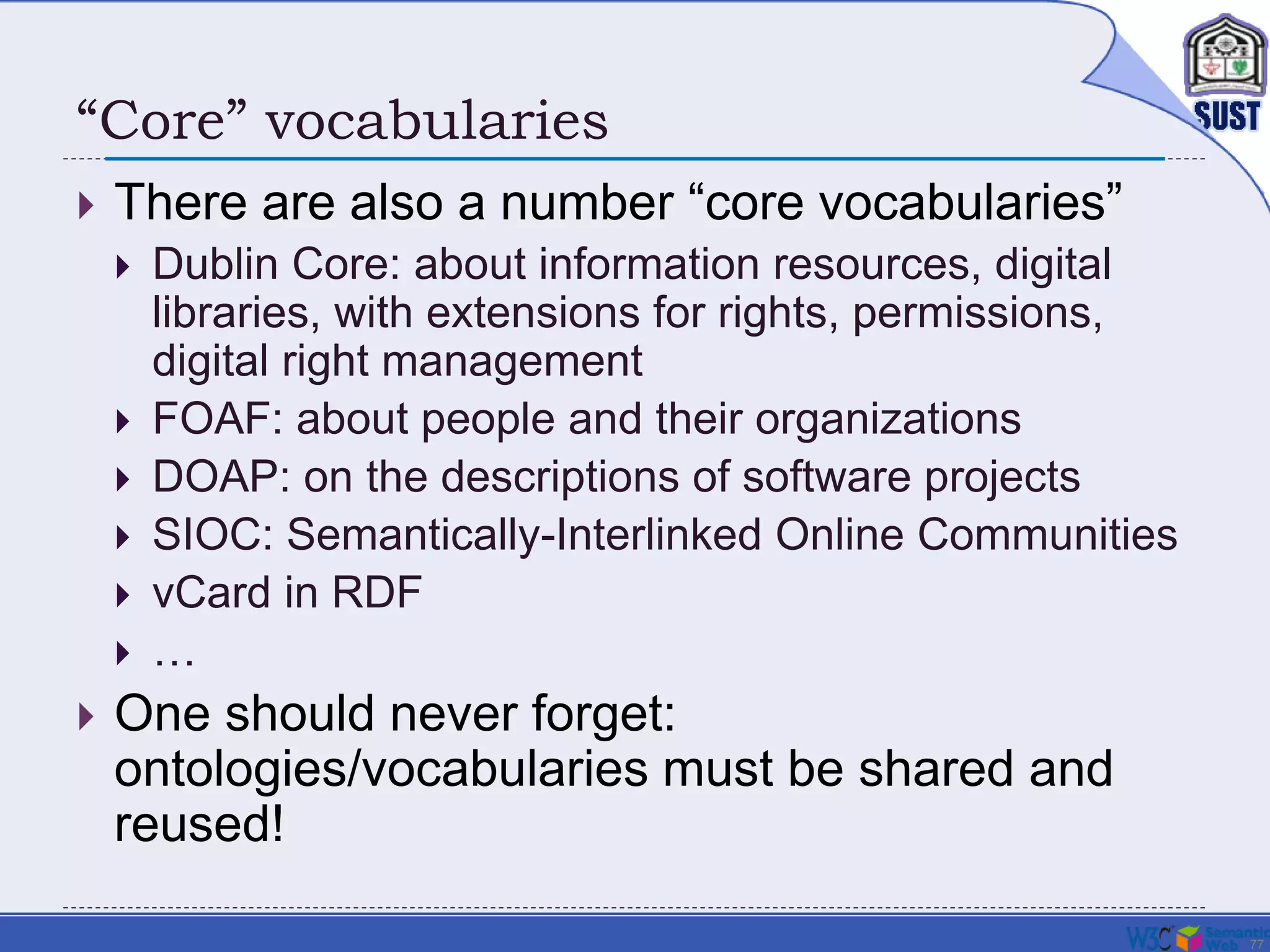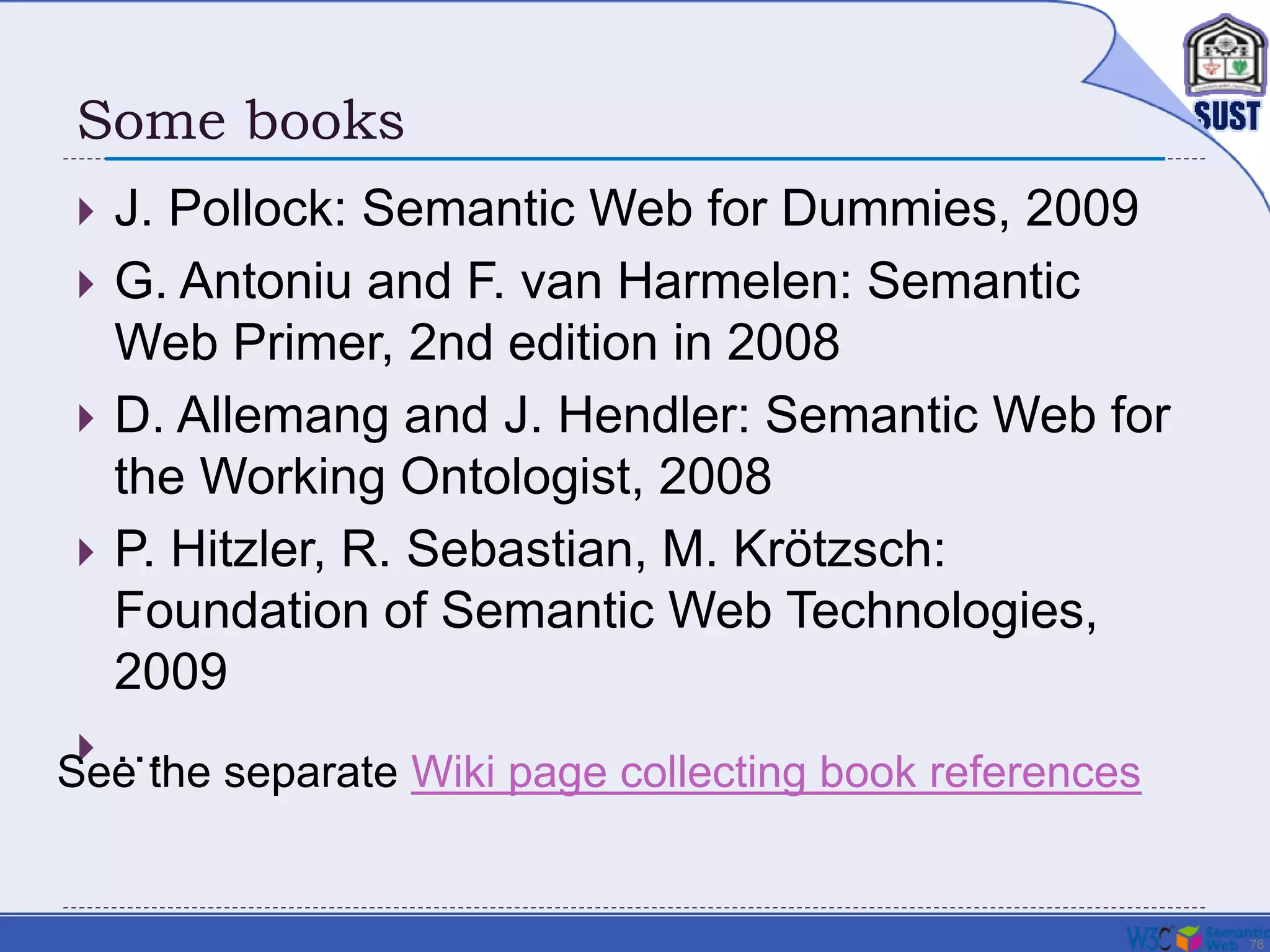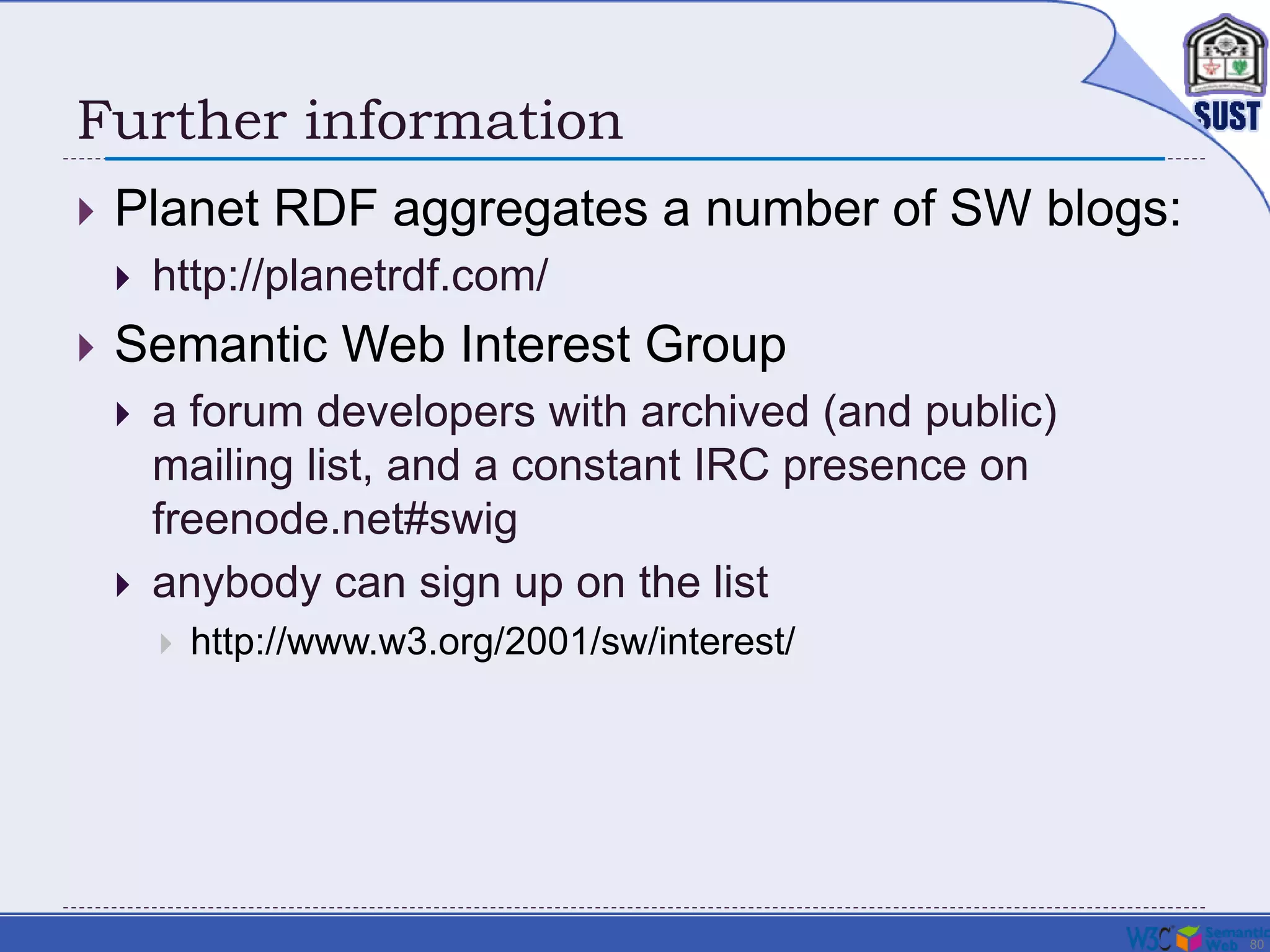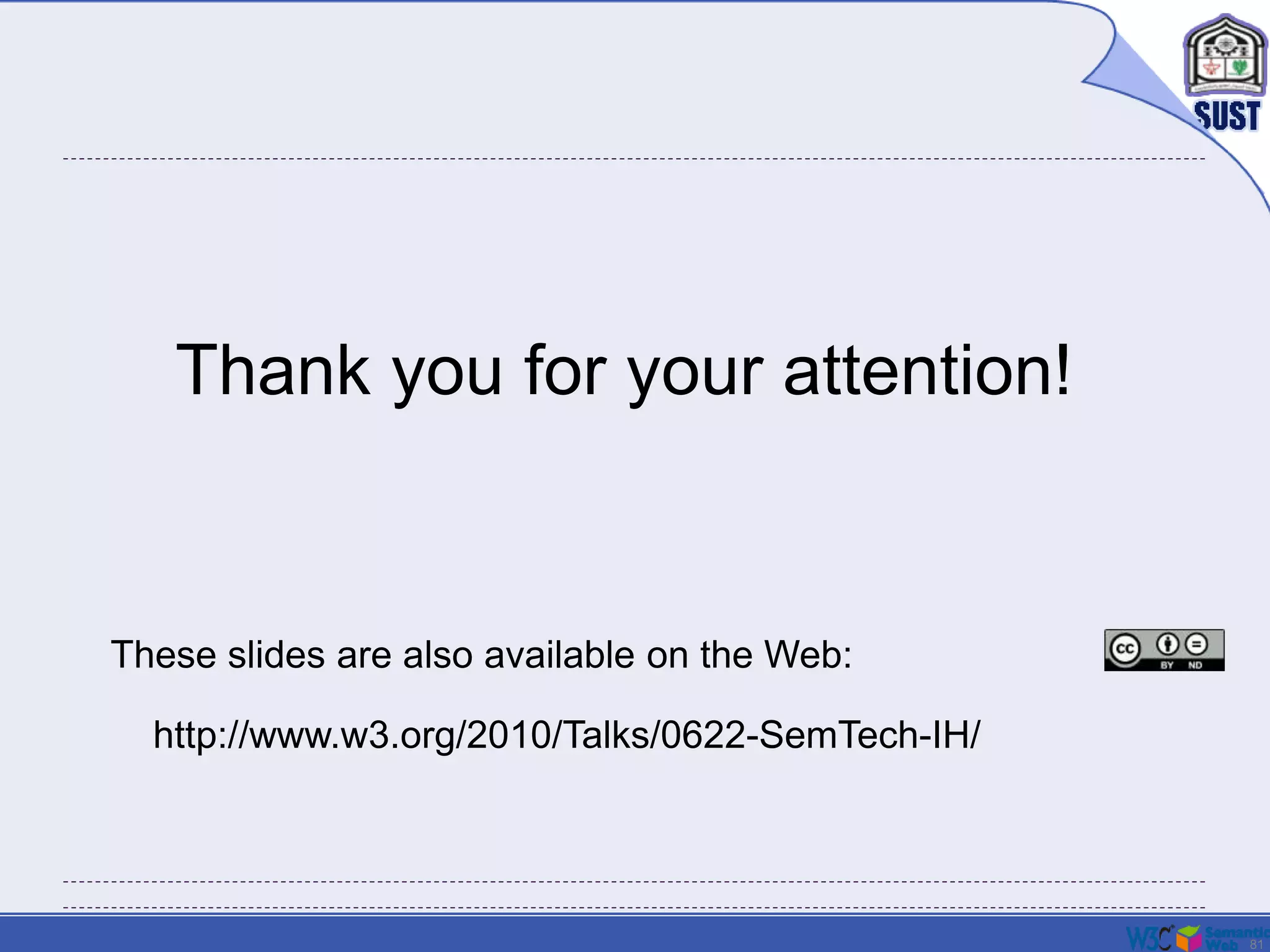This document provides an overview of the Web Ontology Language (OWL). It discusses OWL's purpose in extending RDF Schema to provide a full knowledge representation language for the web. It outlines OWL's key features such as logical expressions, cardinality constraints, enumerated classes, and property characteristics. It also describes OWL's three sublanguages - OWL Lite, OWL DL, and OWL Full - which differ in their expressiveness and computational guarantees. The document concludes by discussing the Rule Interchange Format (RIF) and its role in defining rule languages for the semantic web.
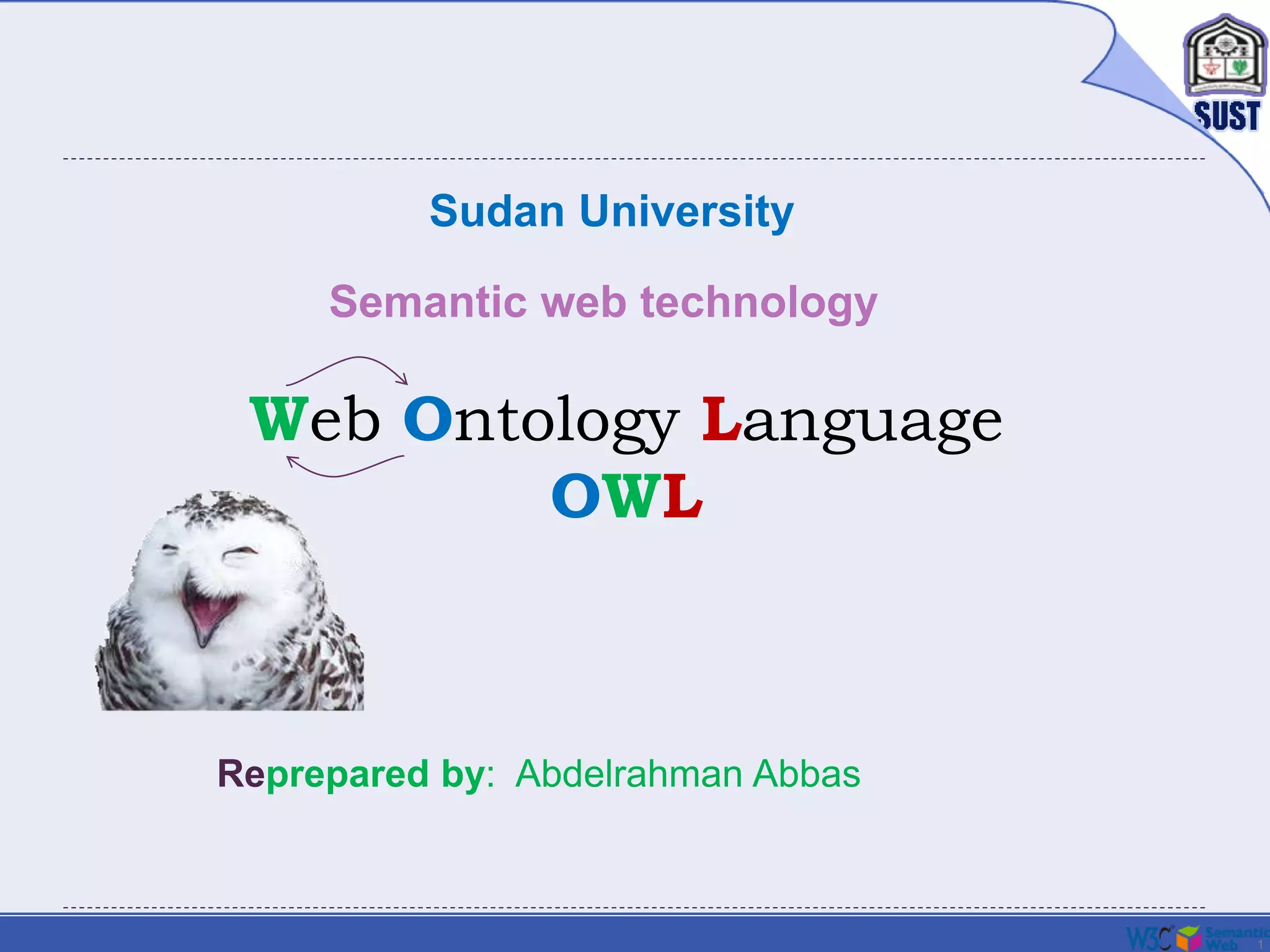
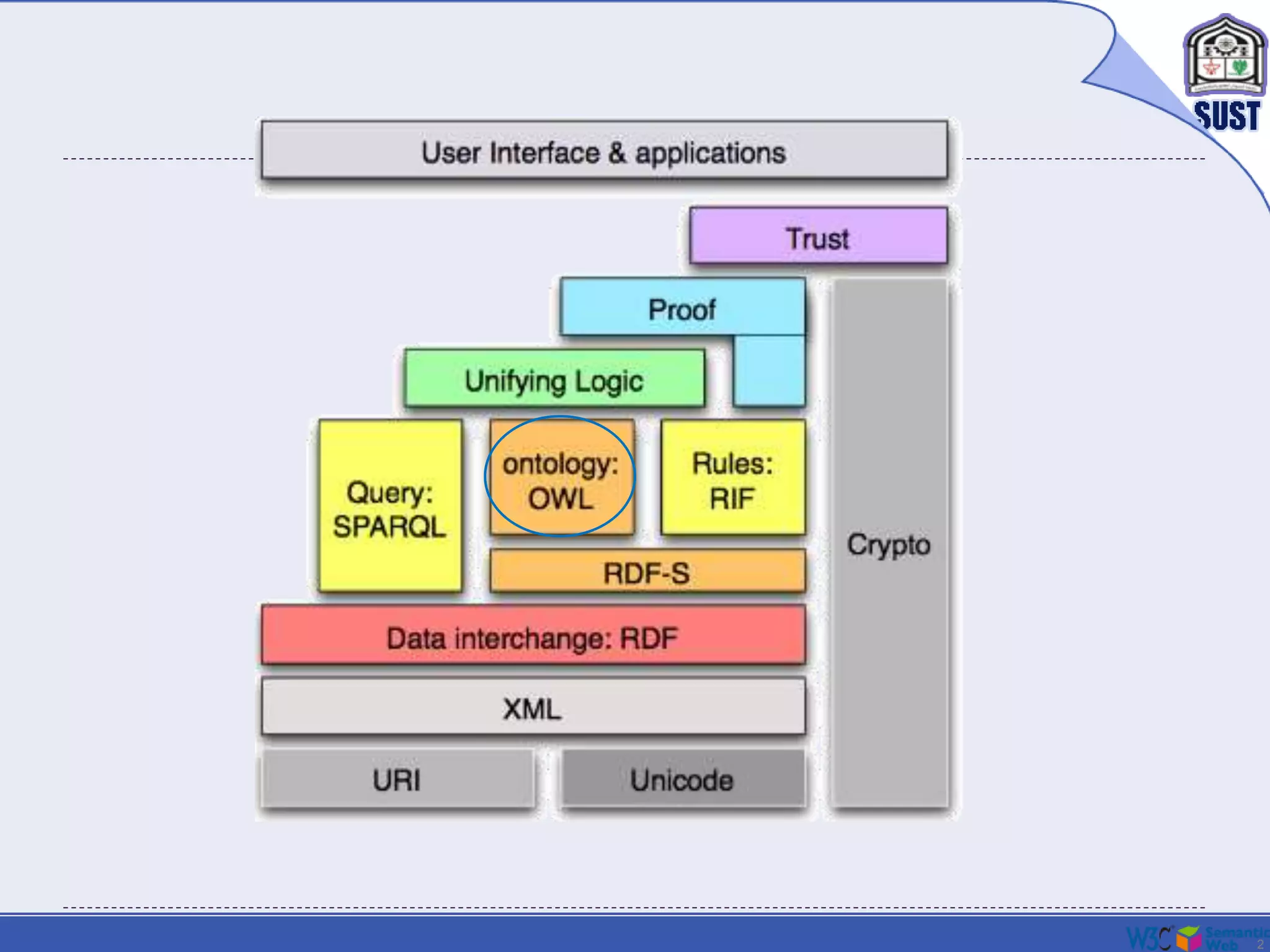

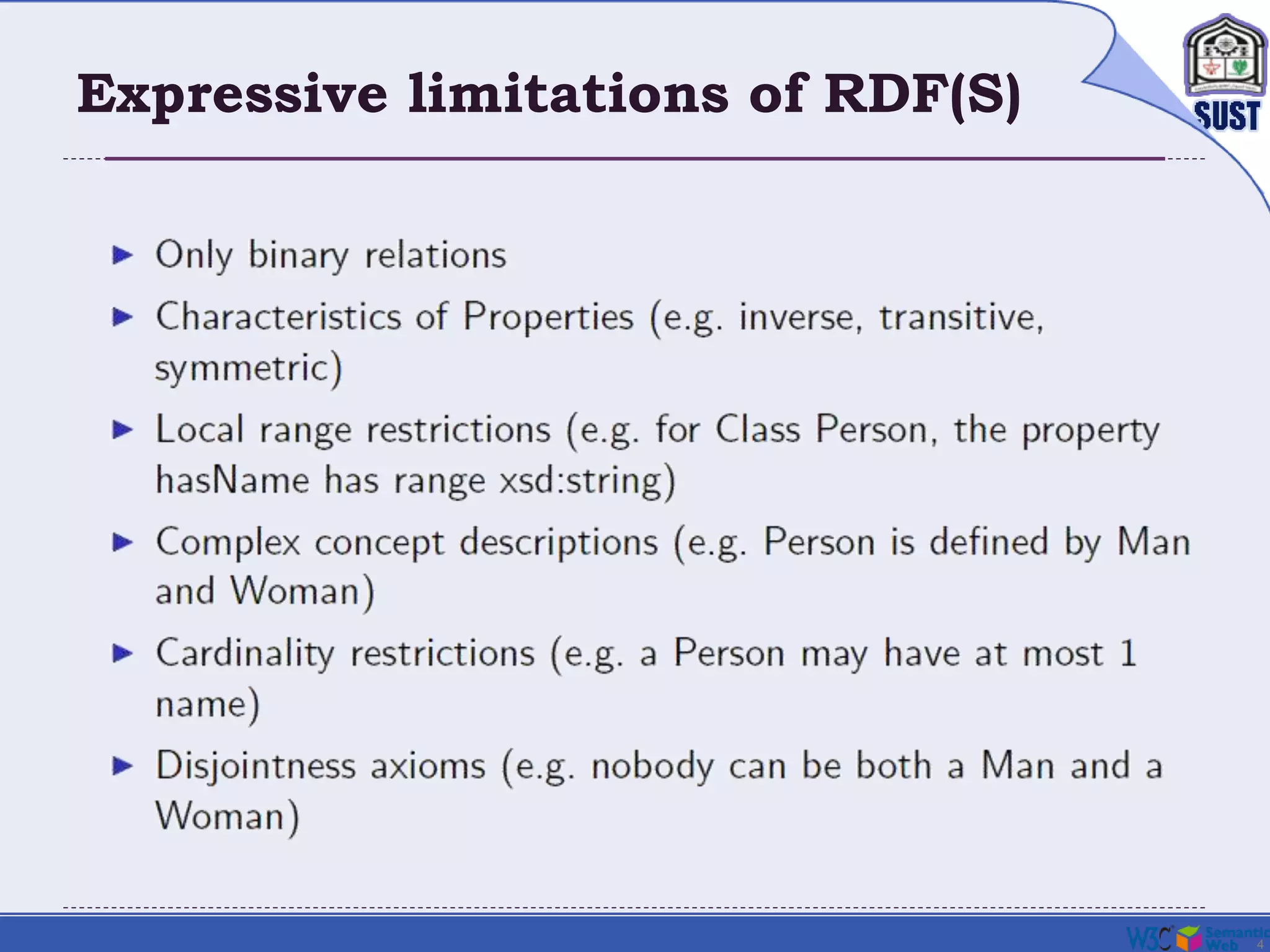
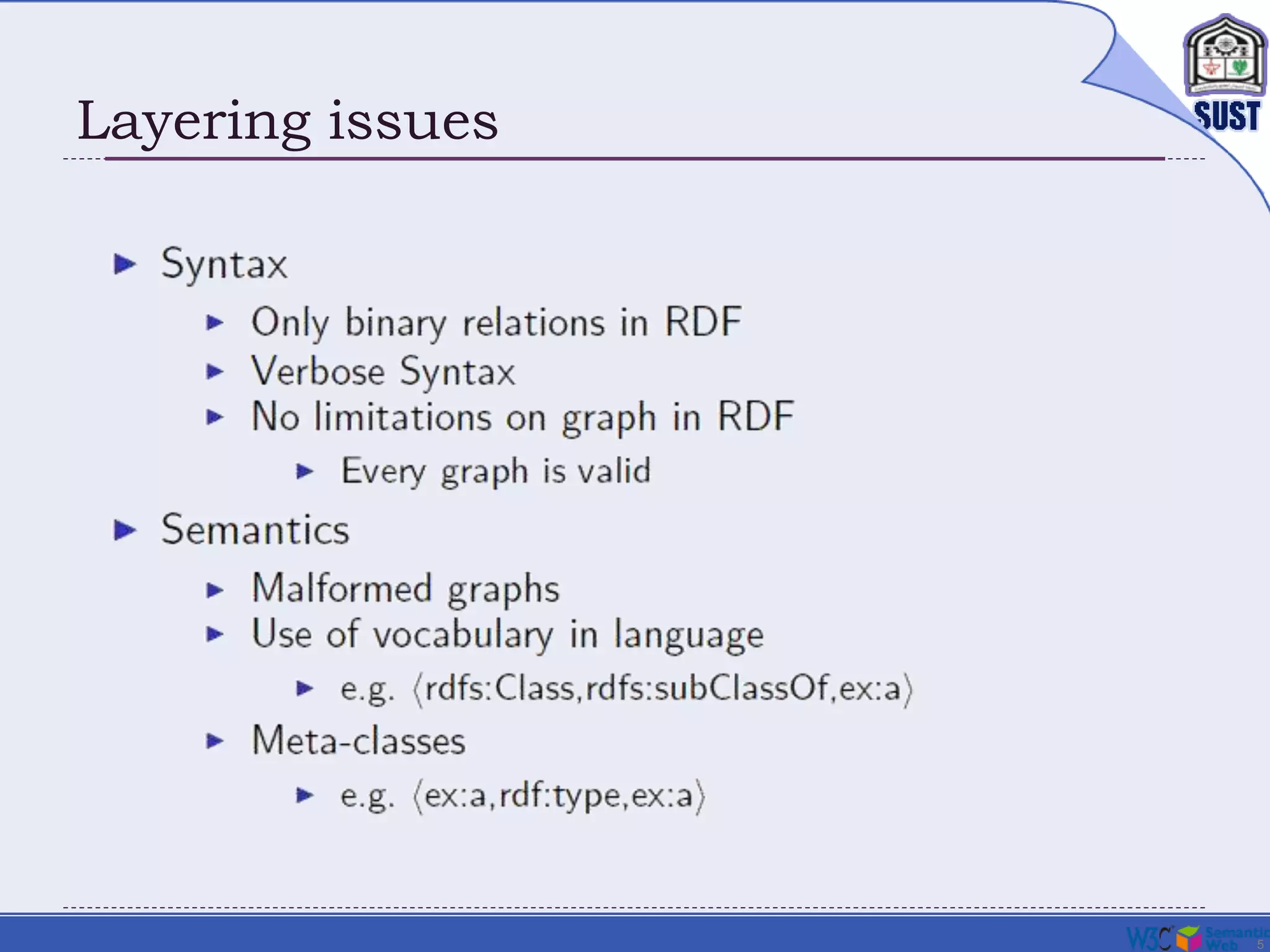
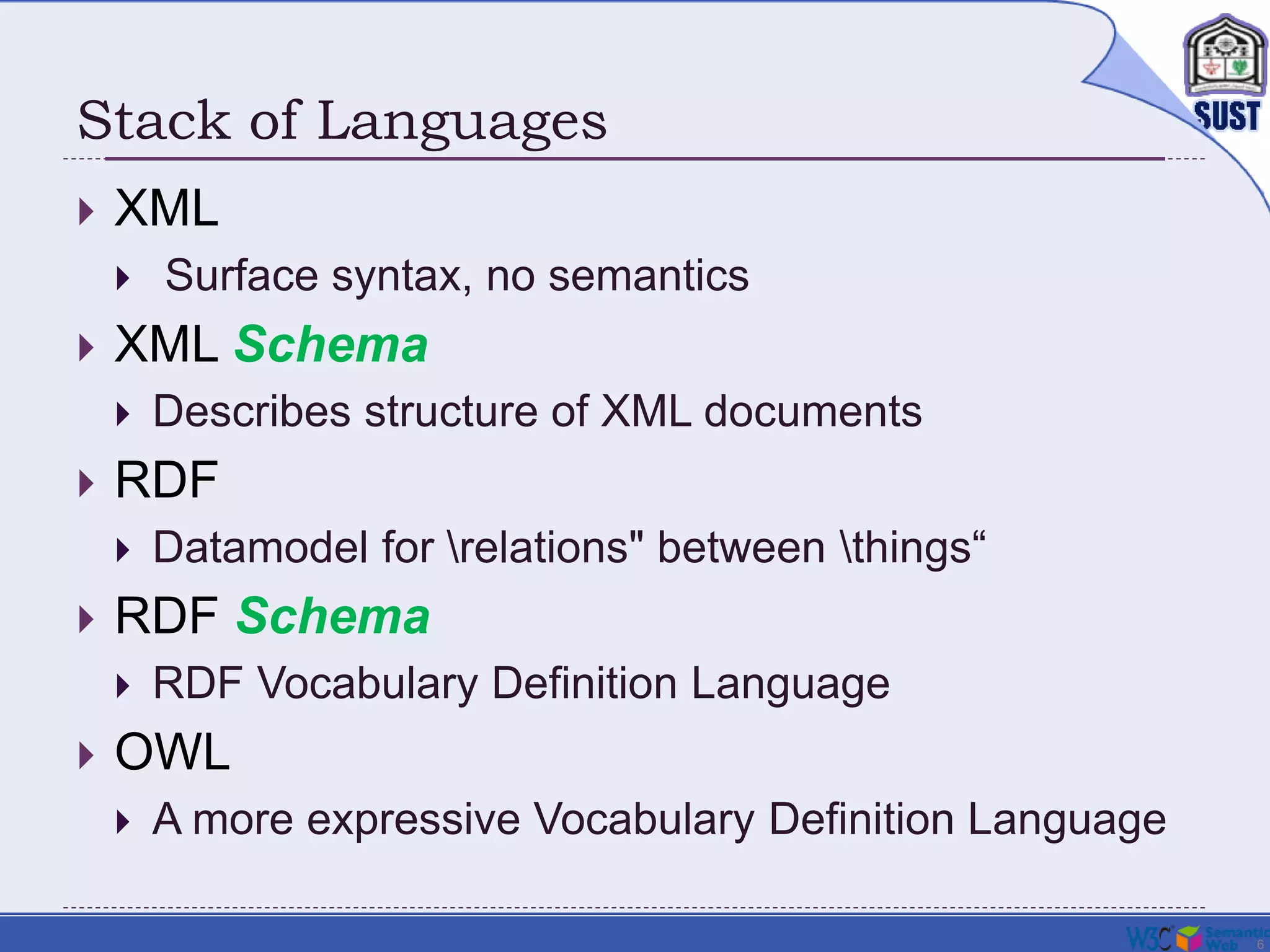
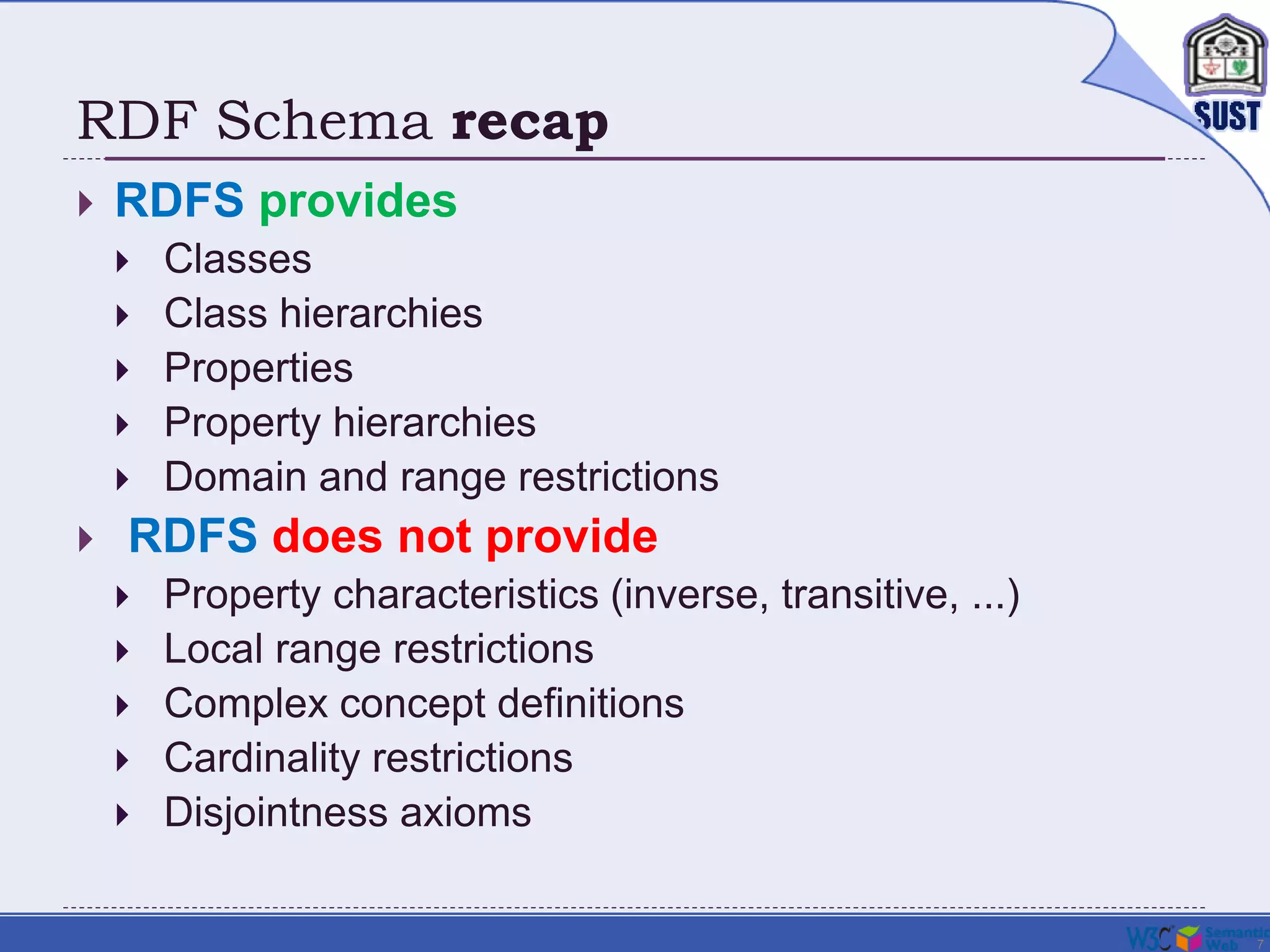
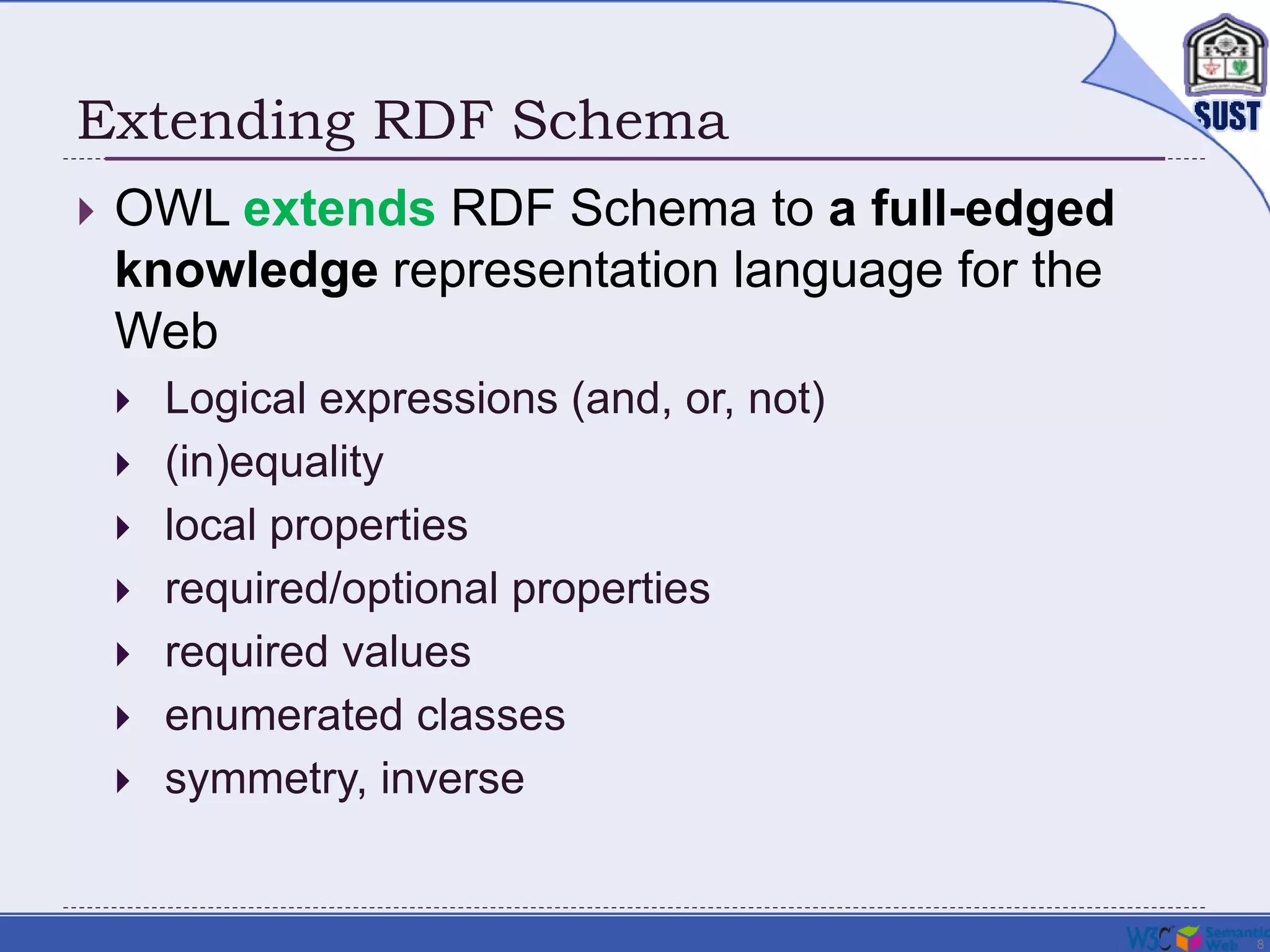
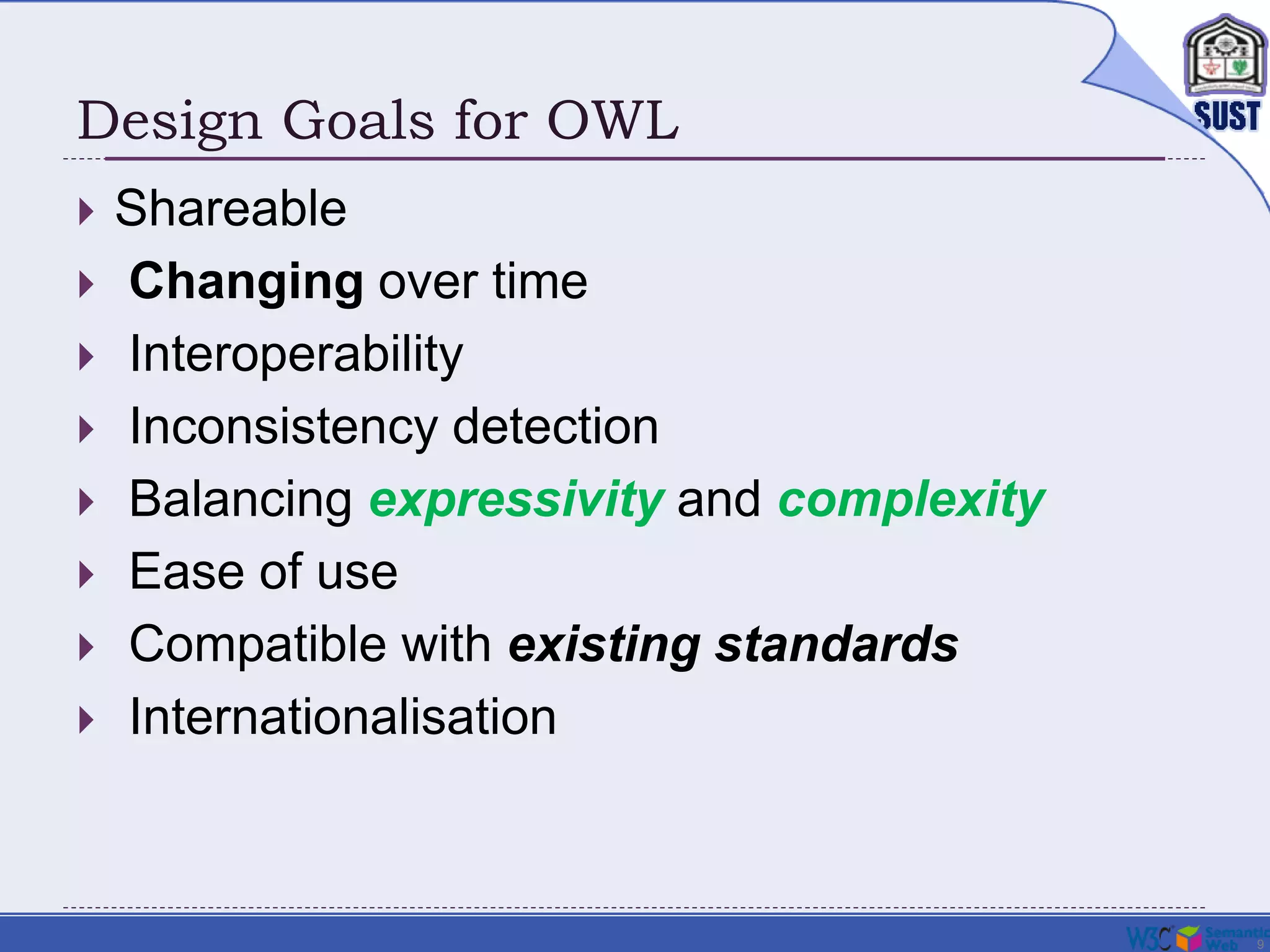

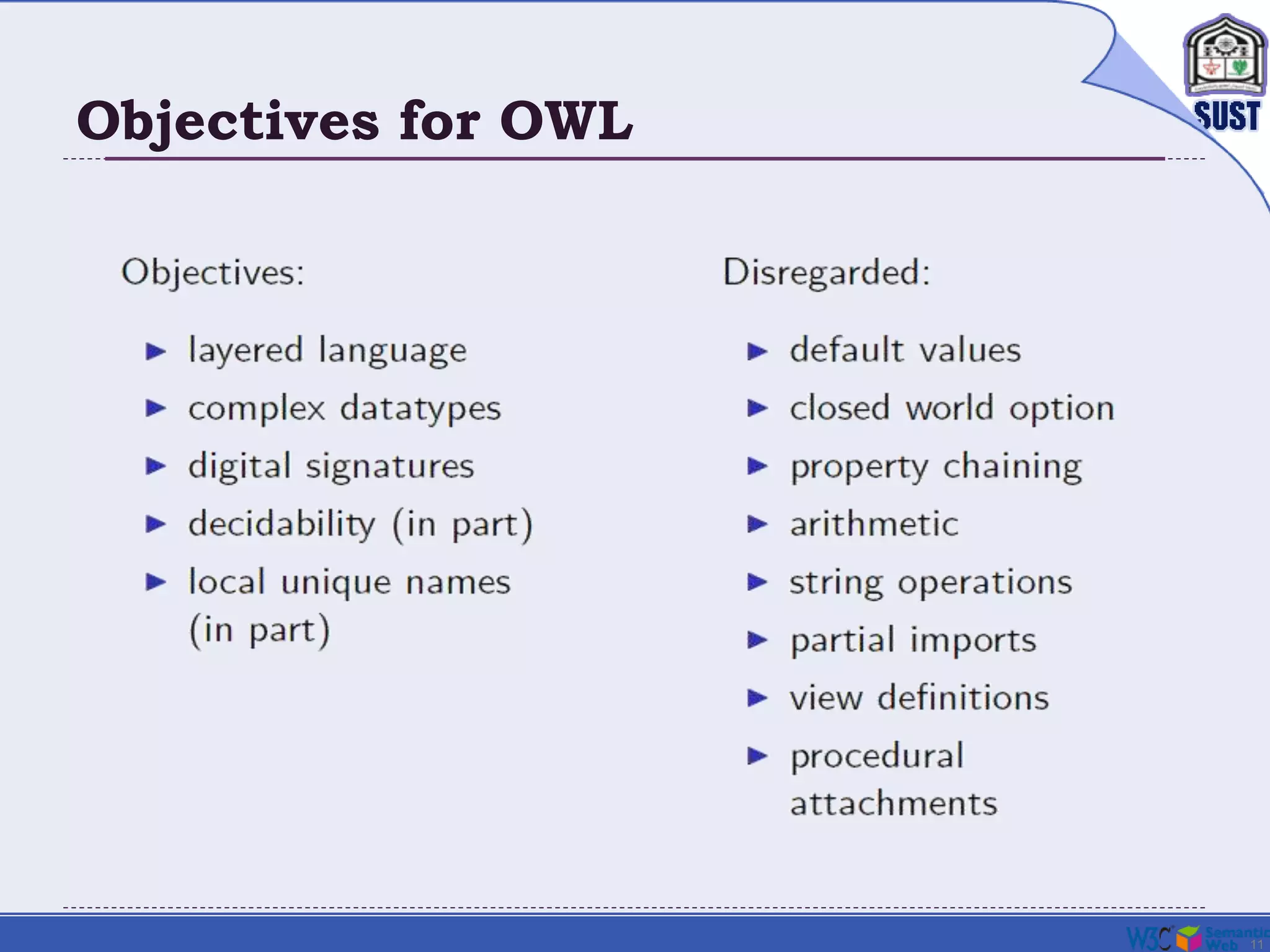
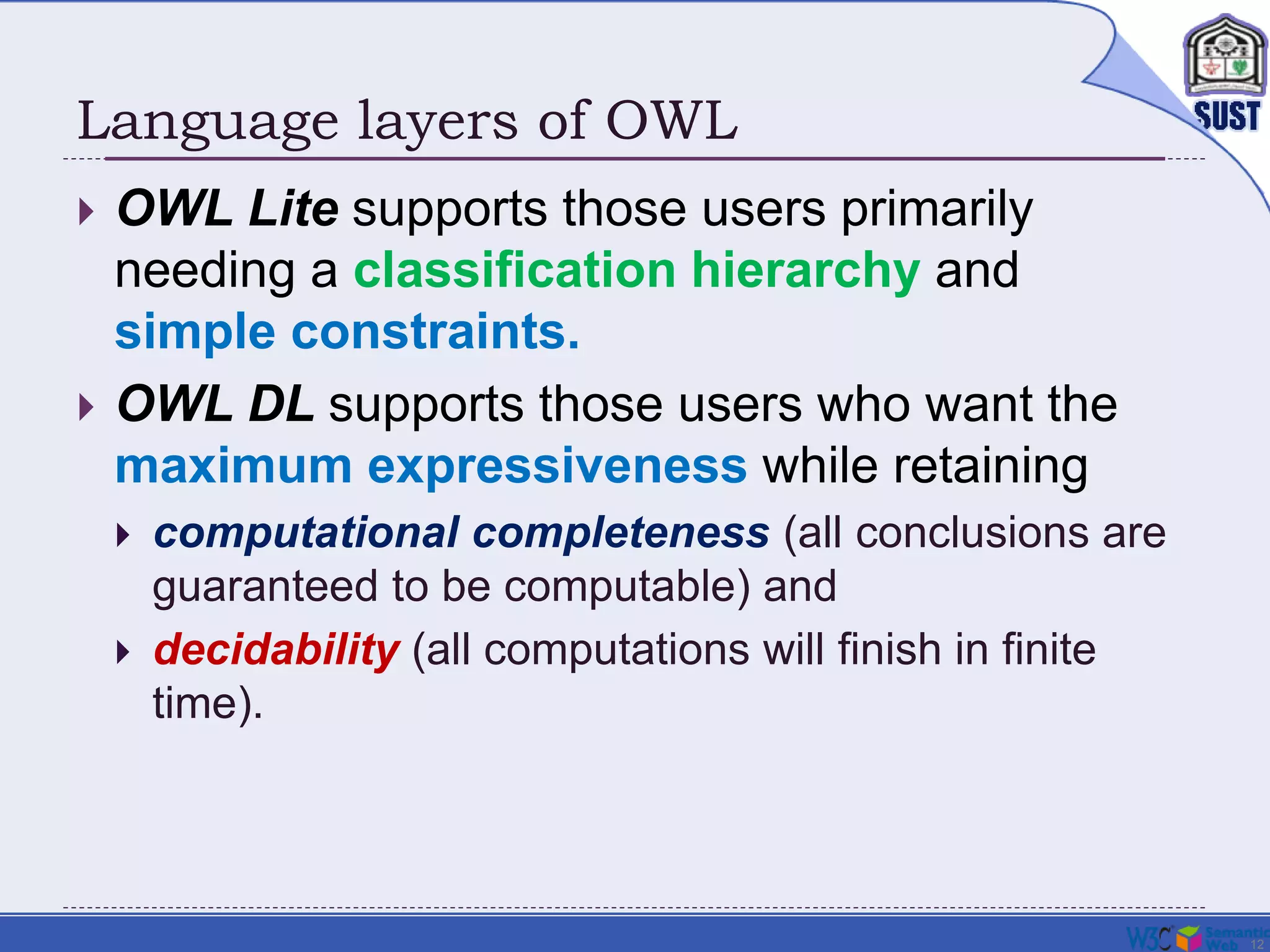
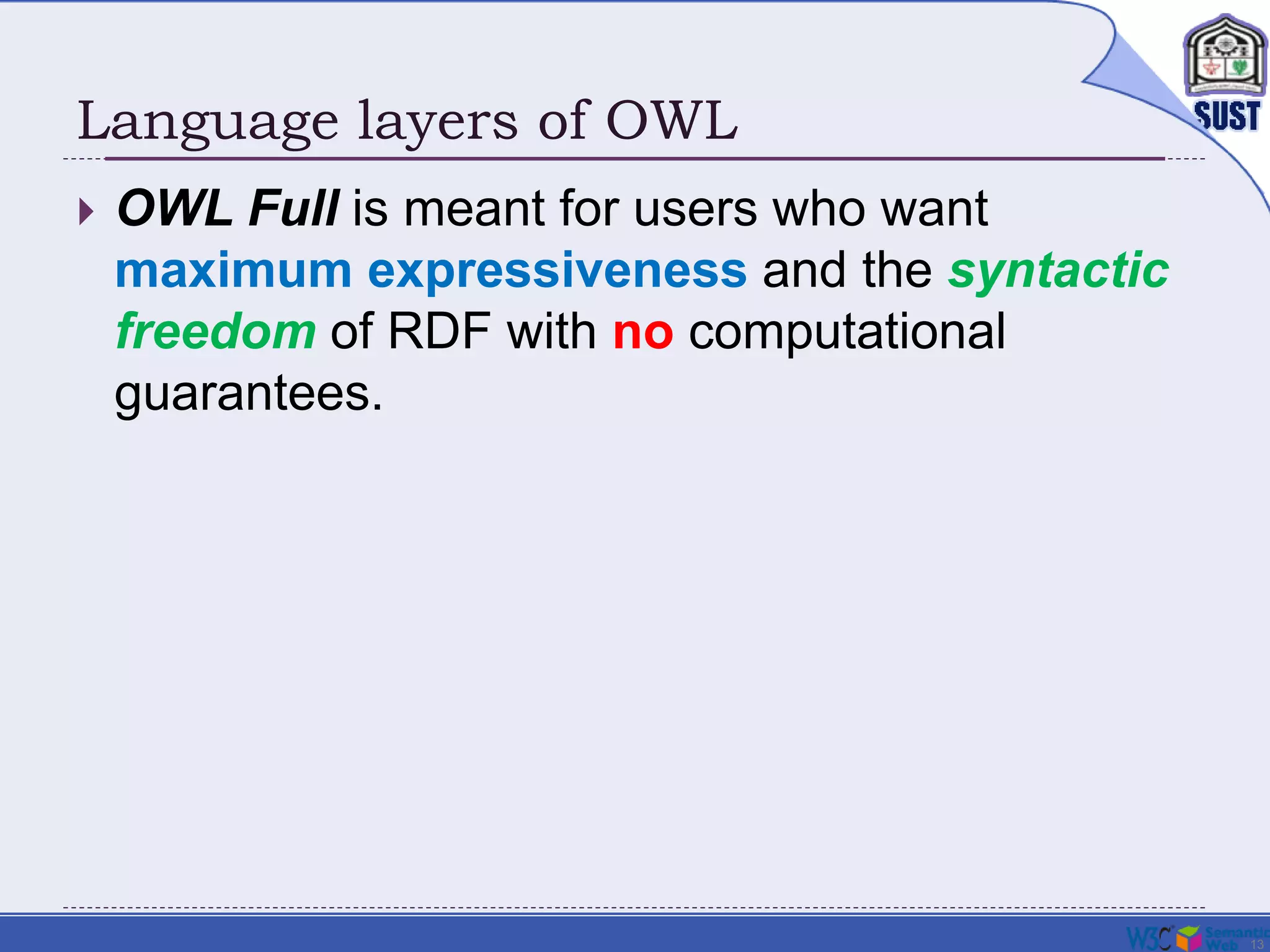
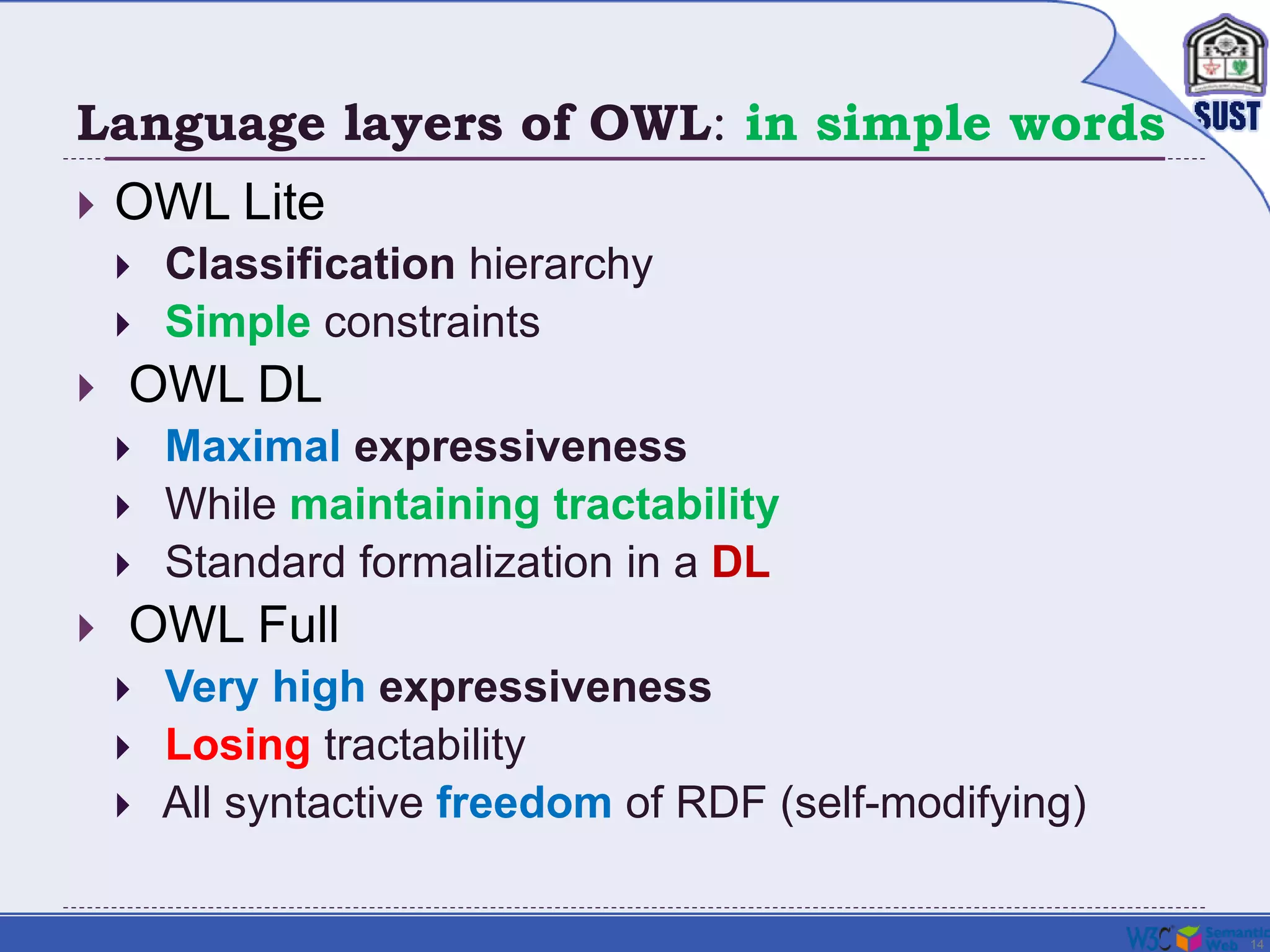
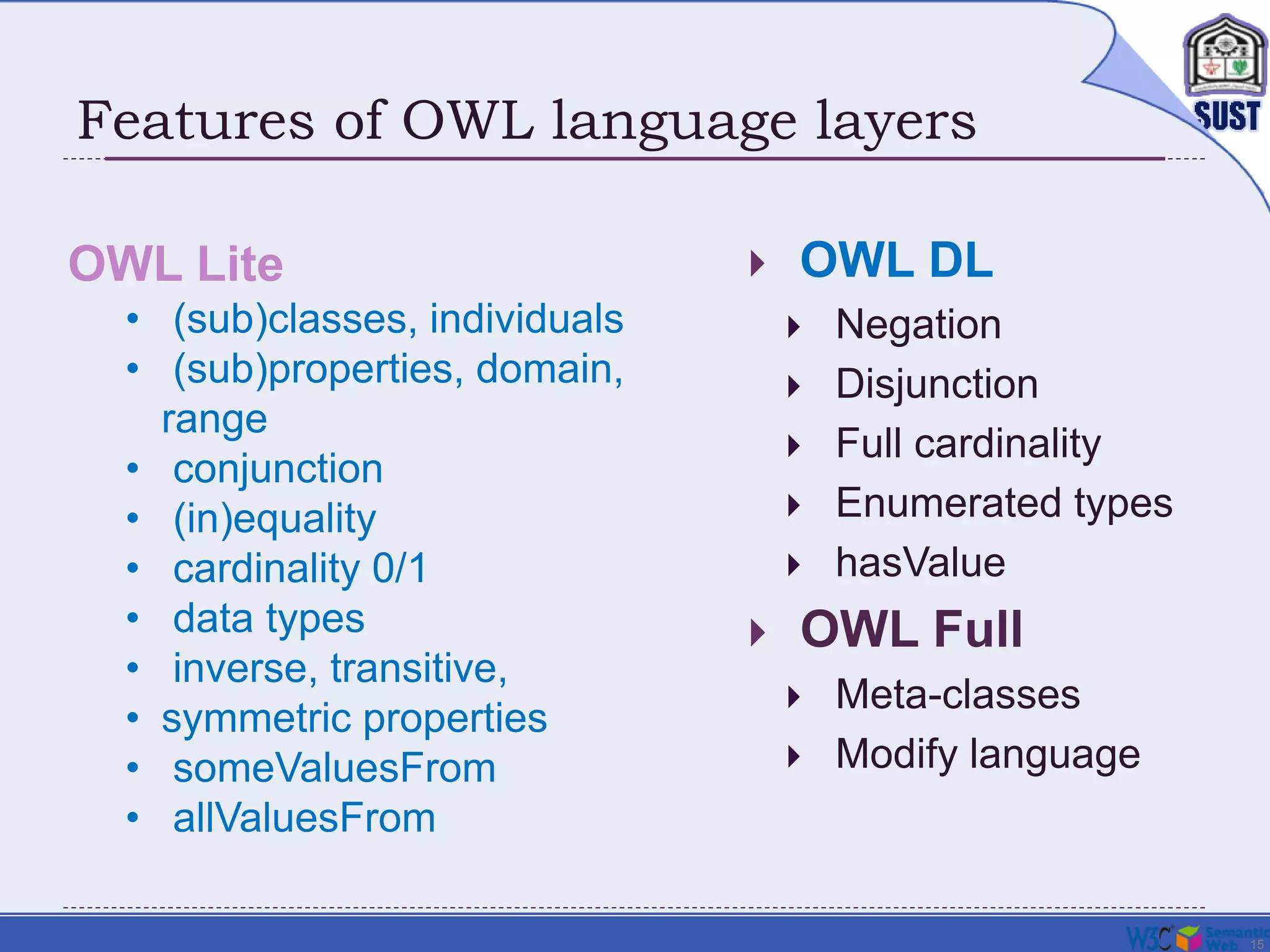
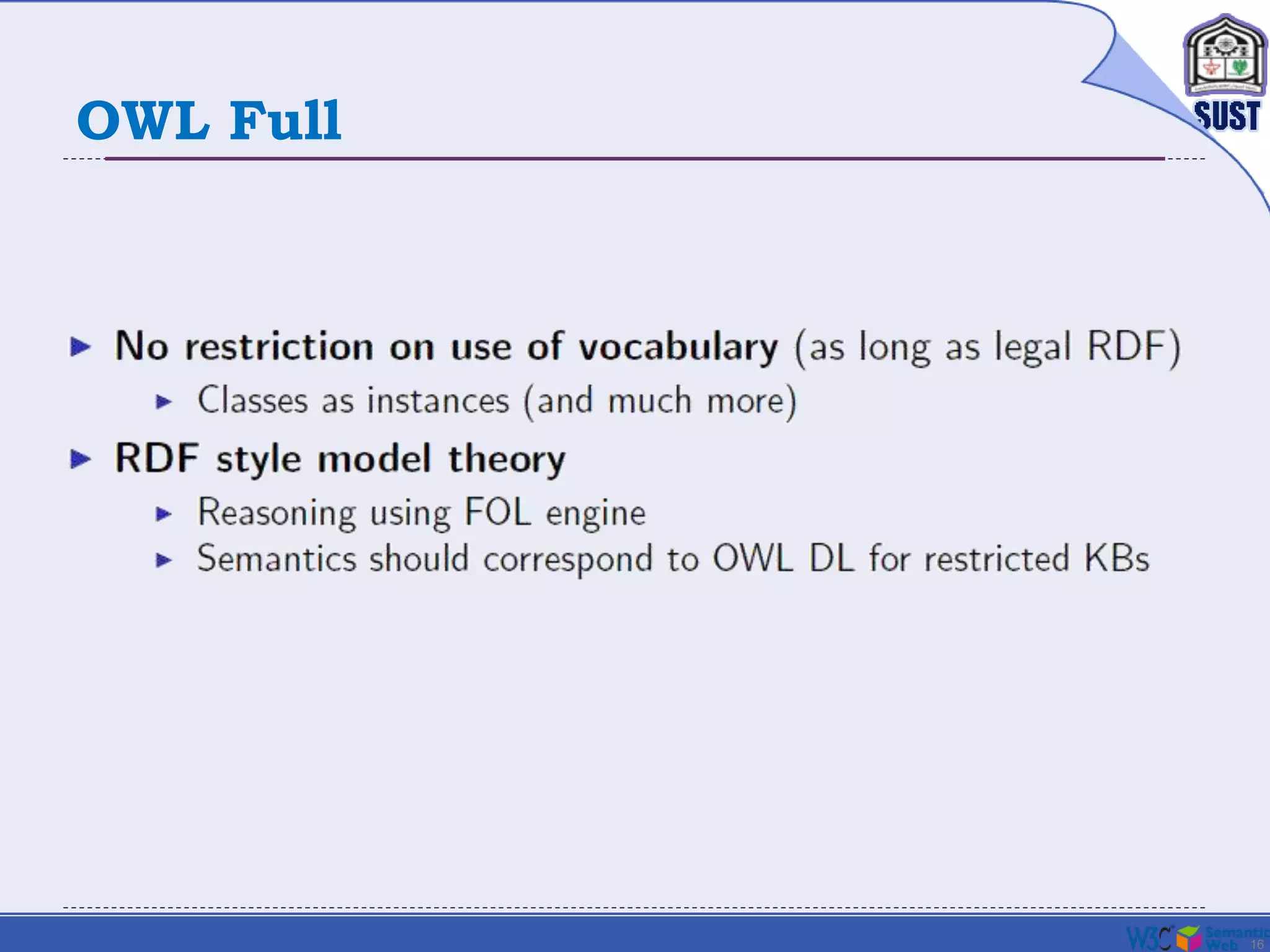
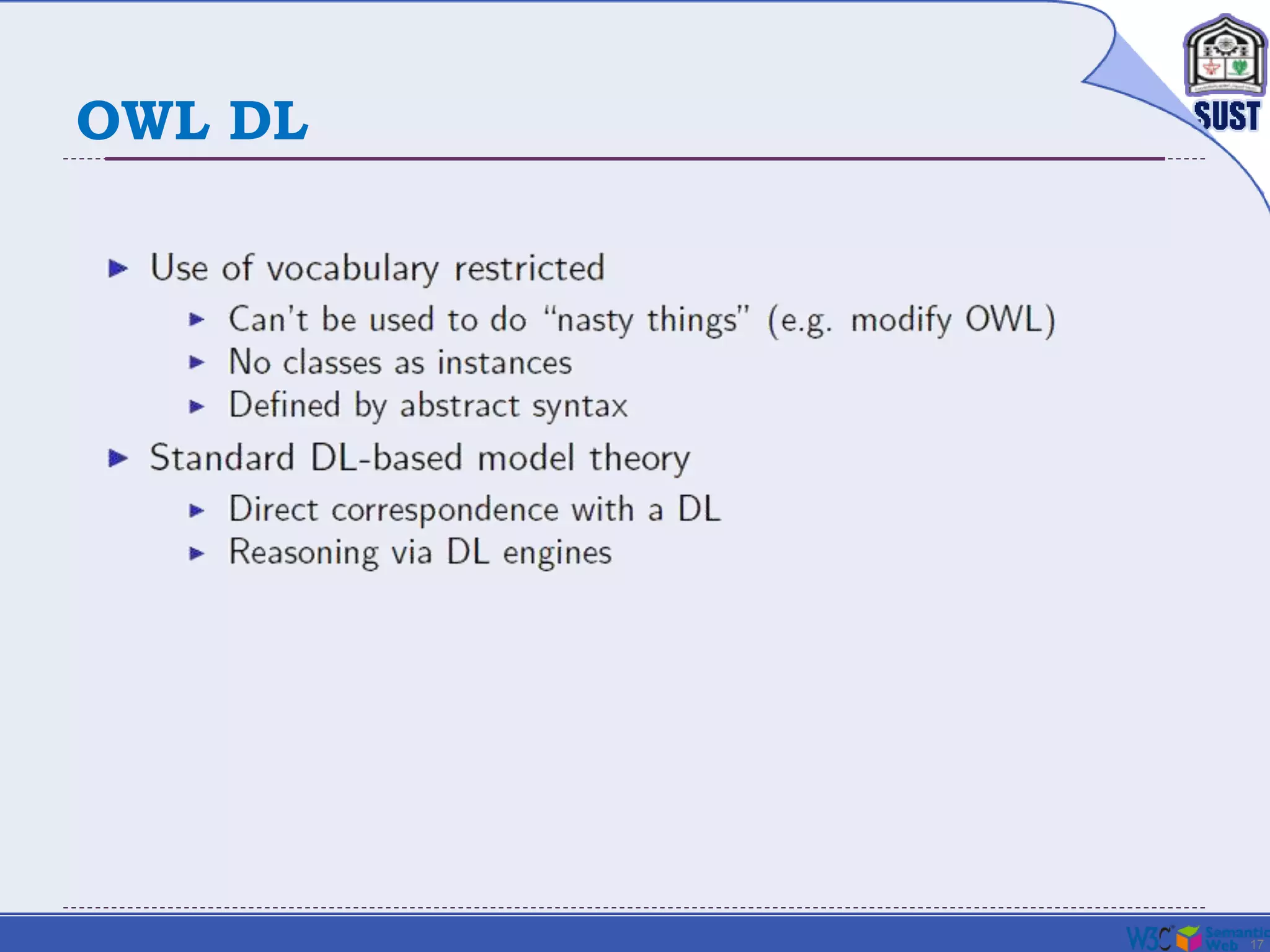
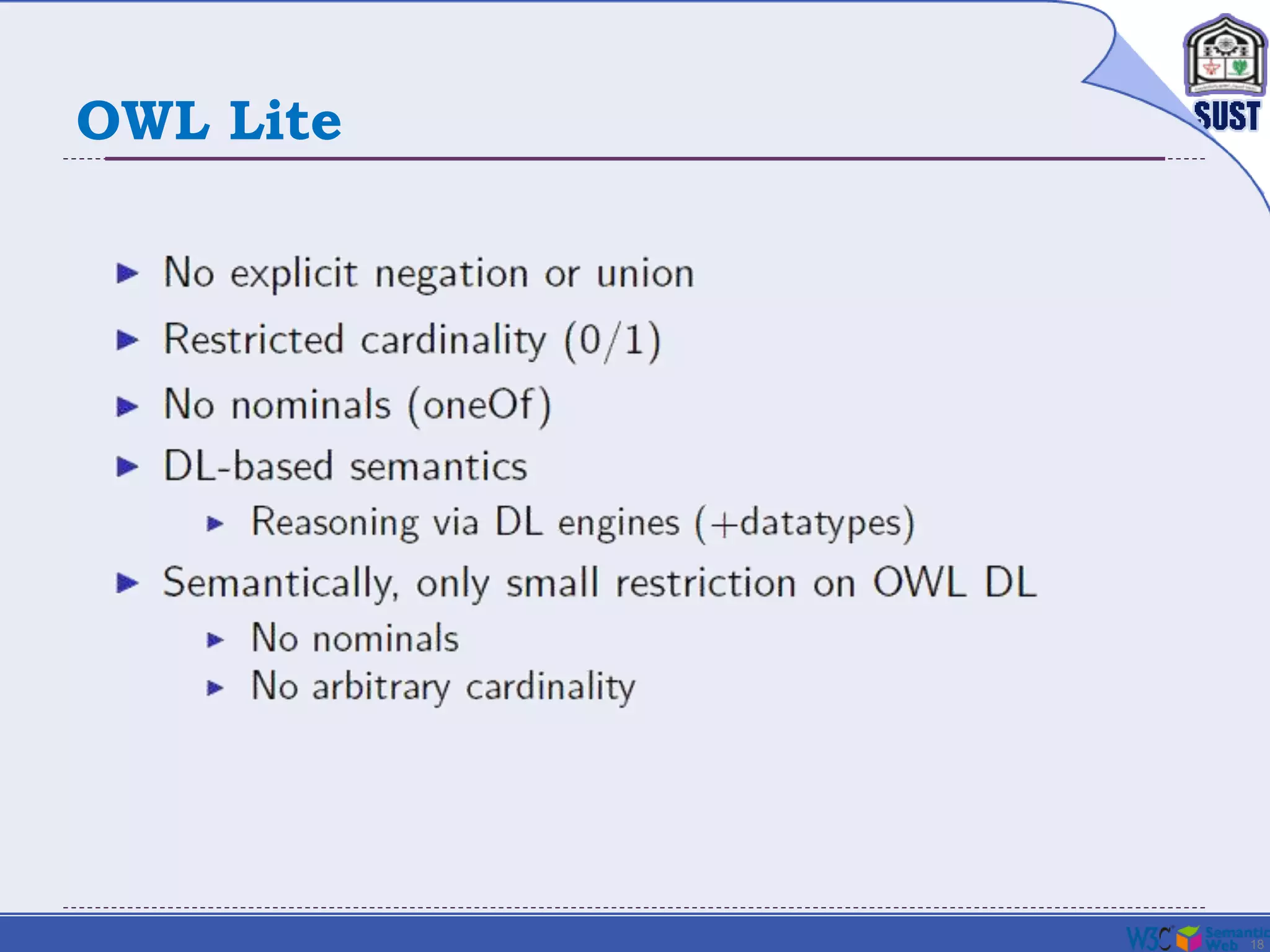

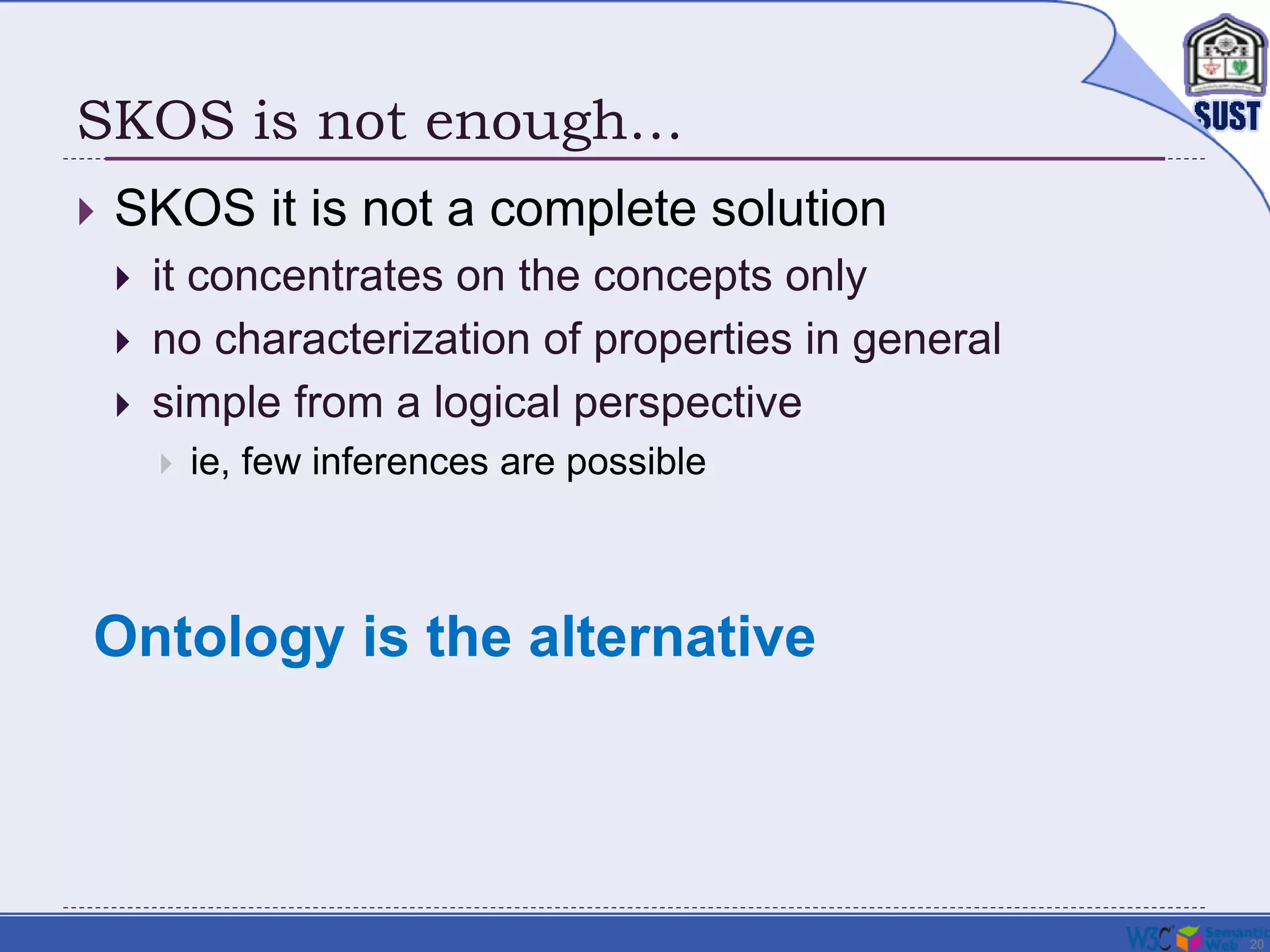
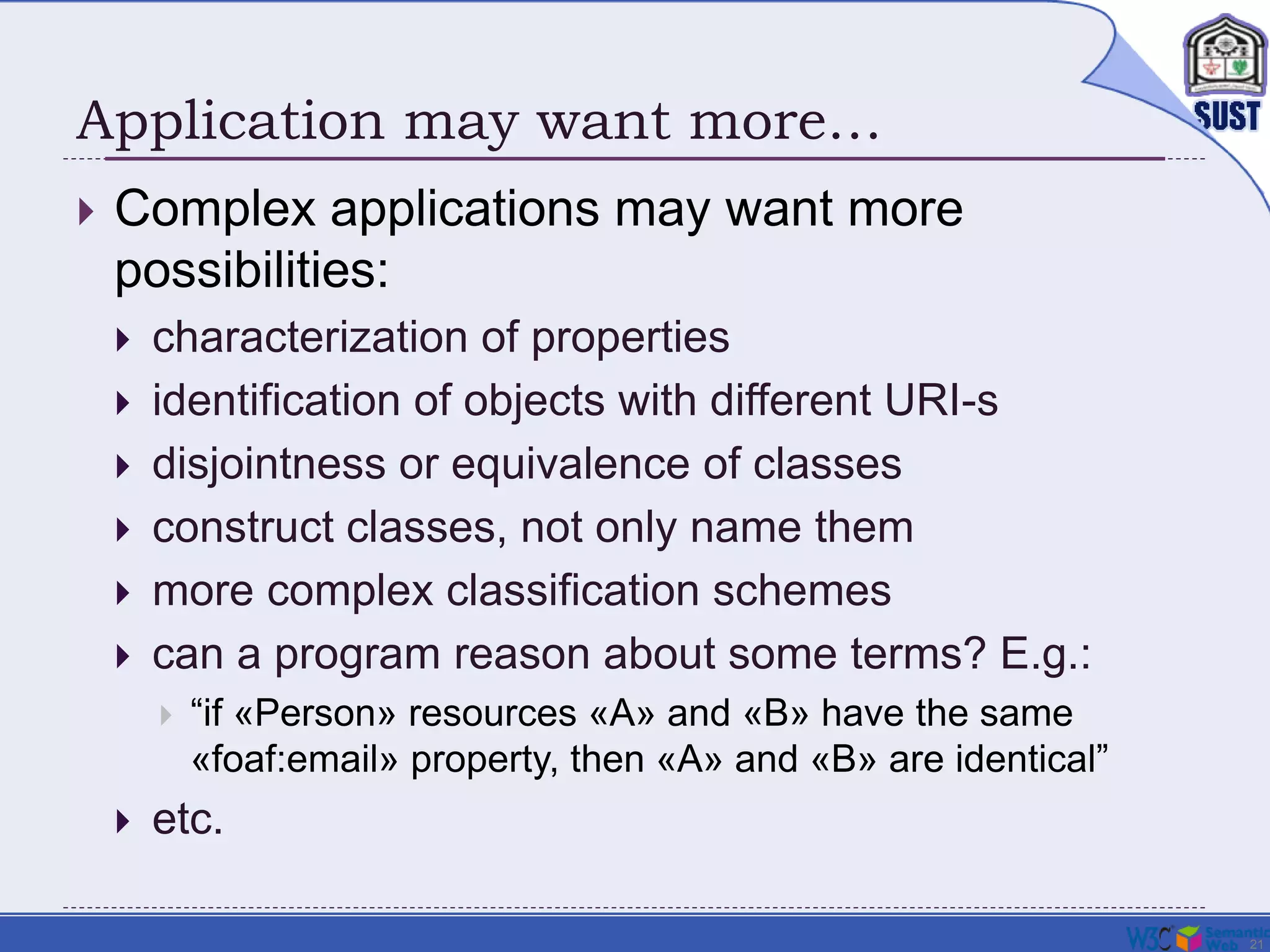
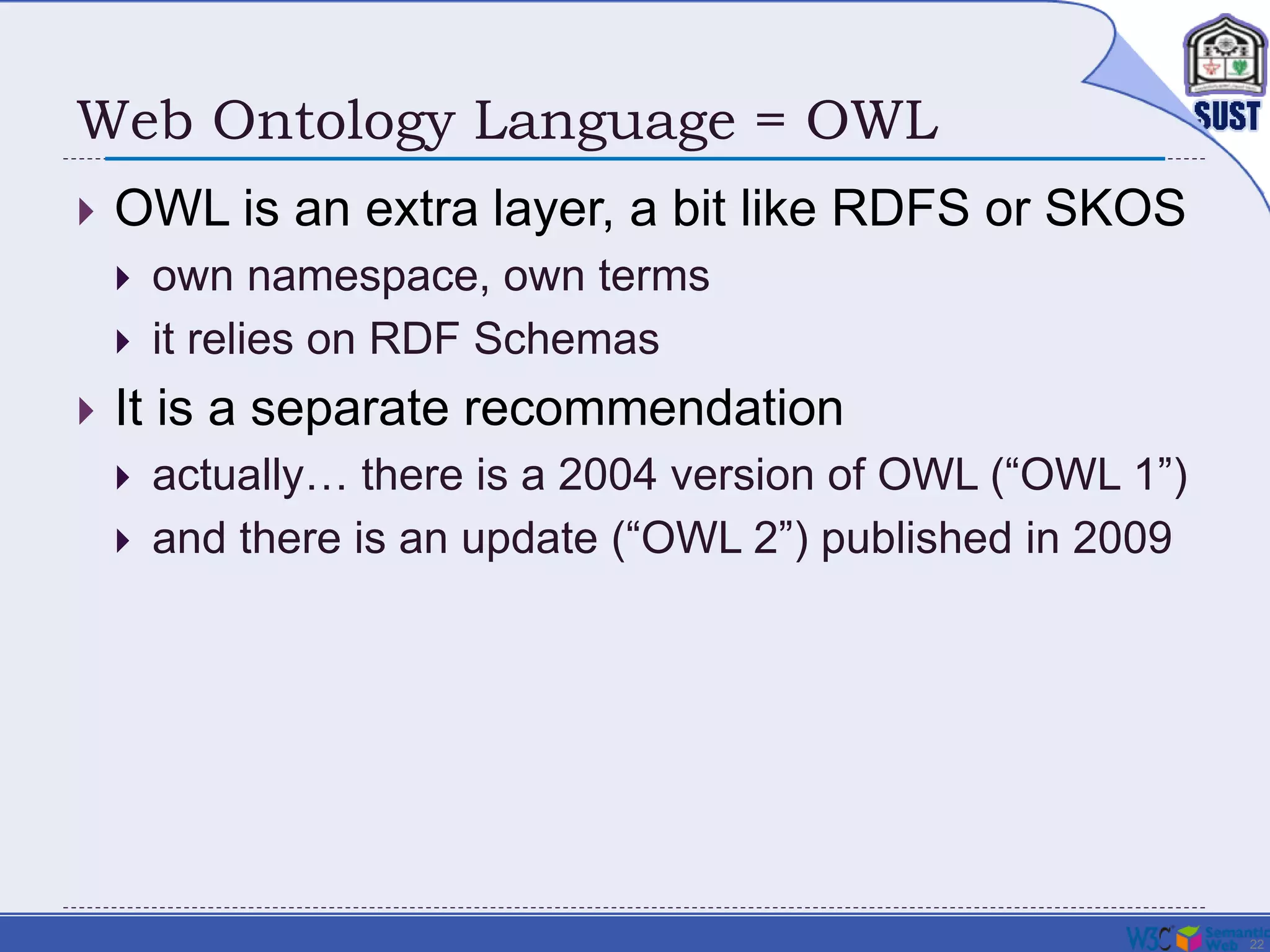
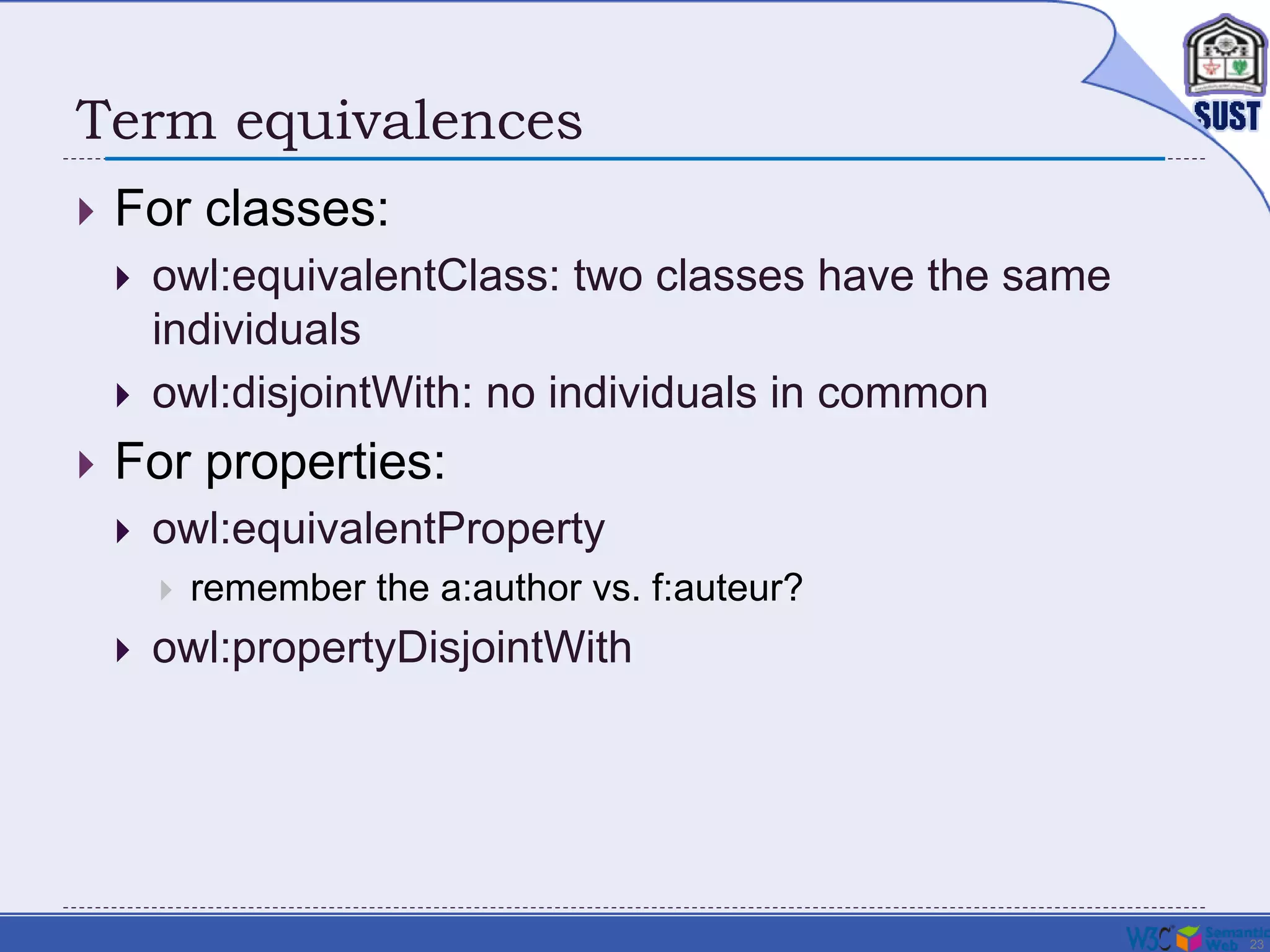
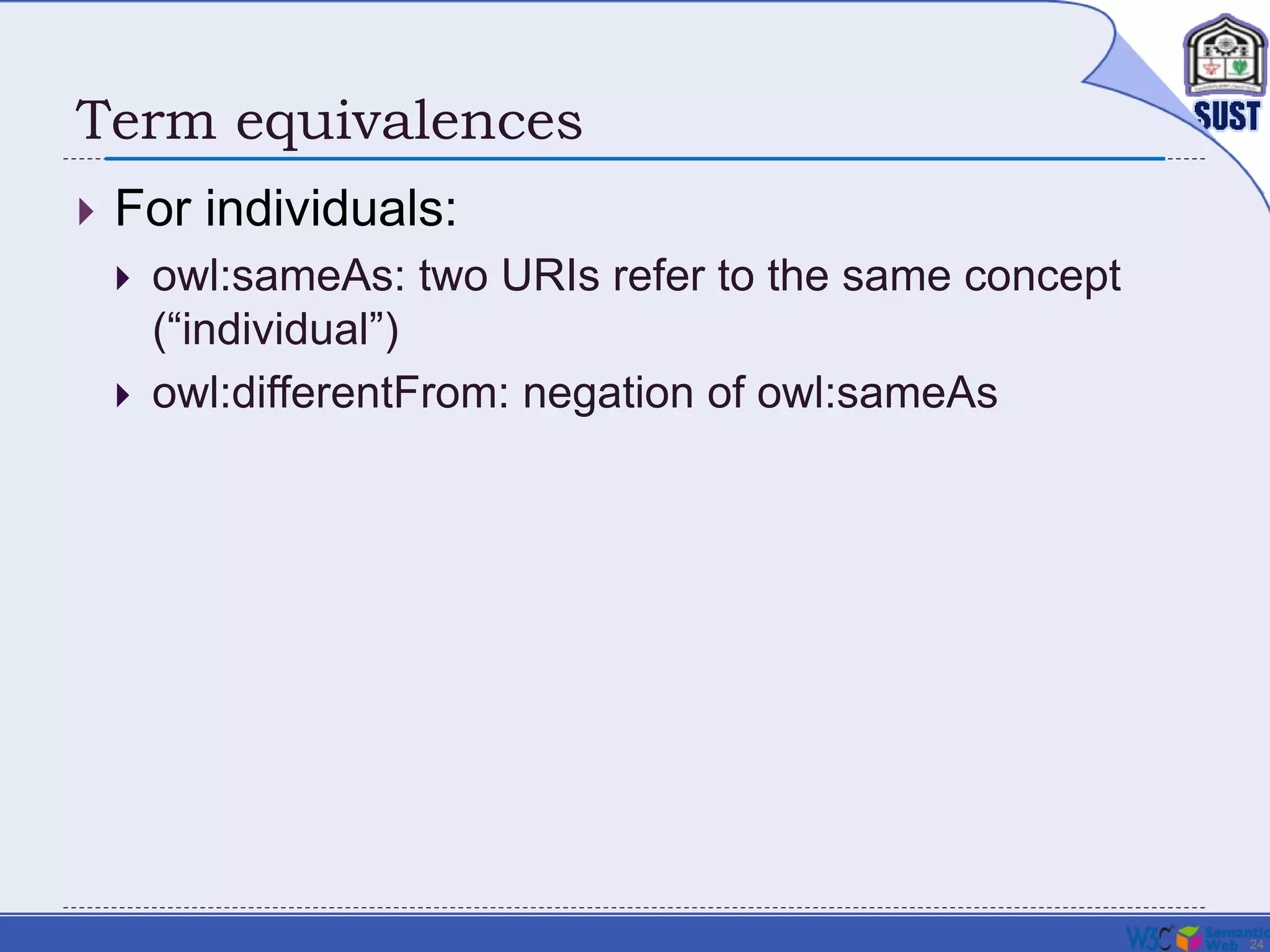
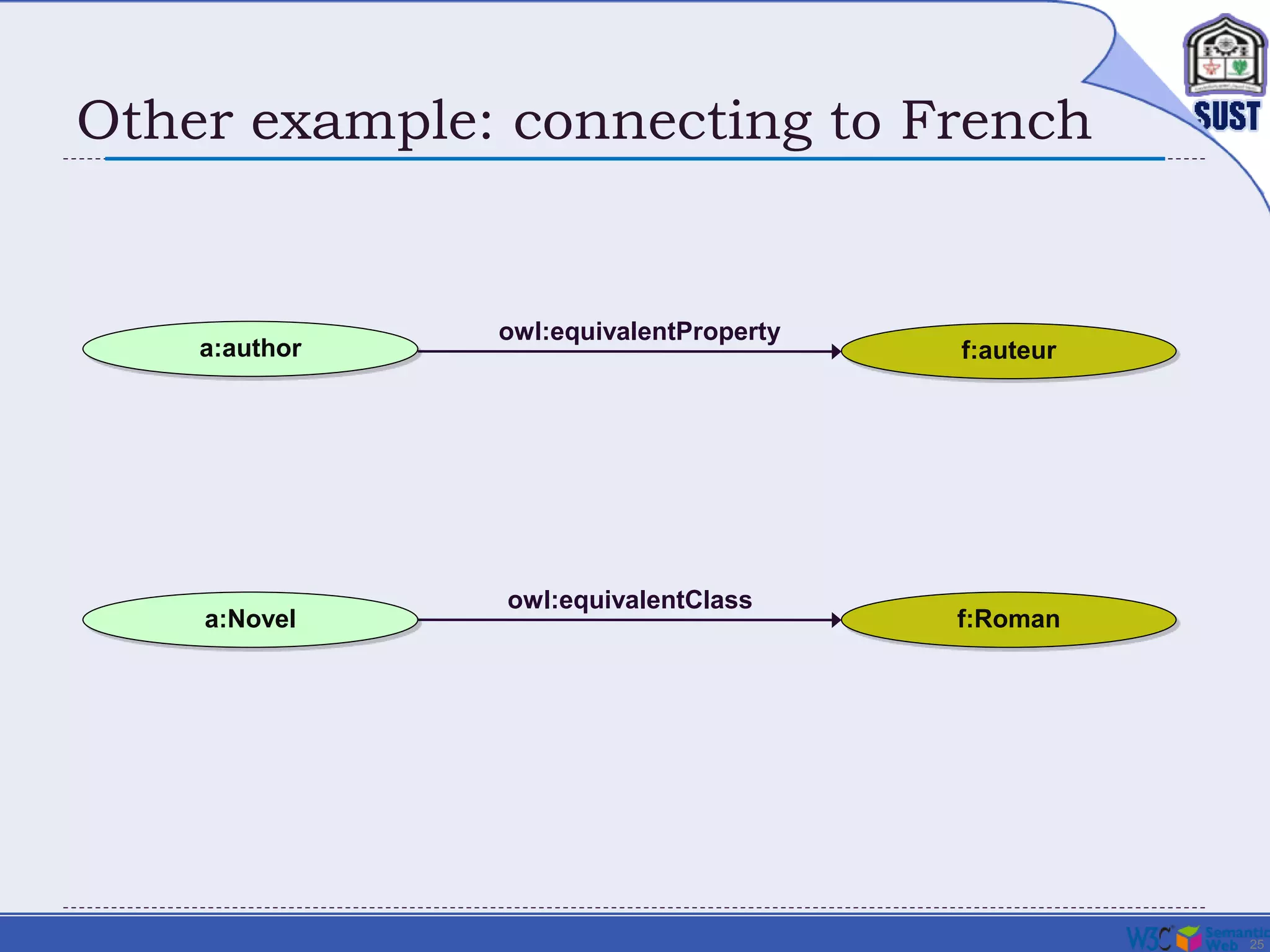
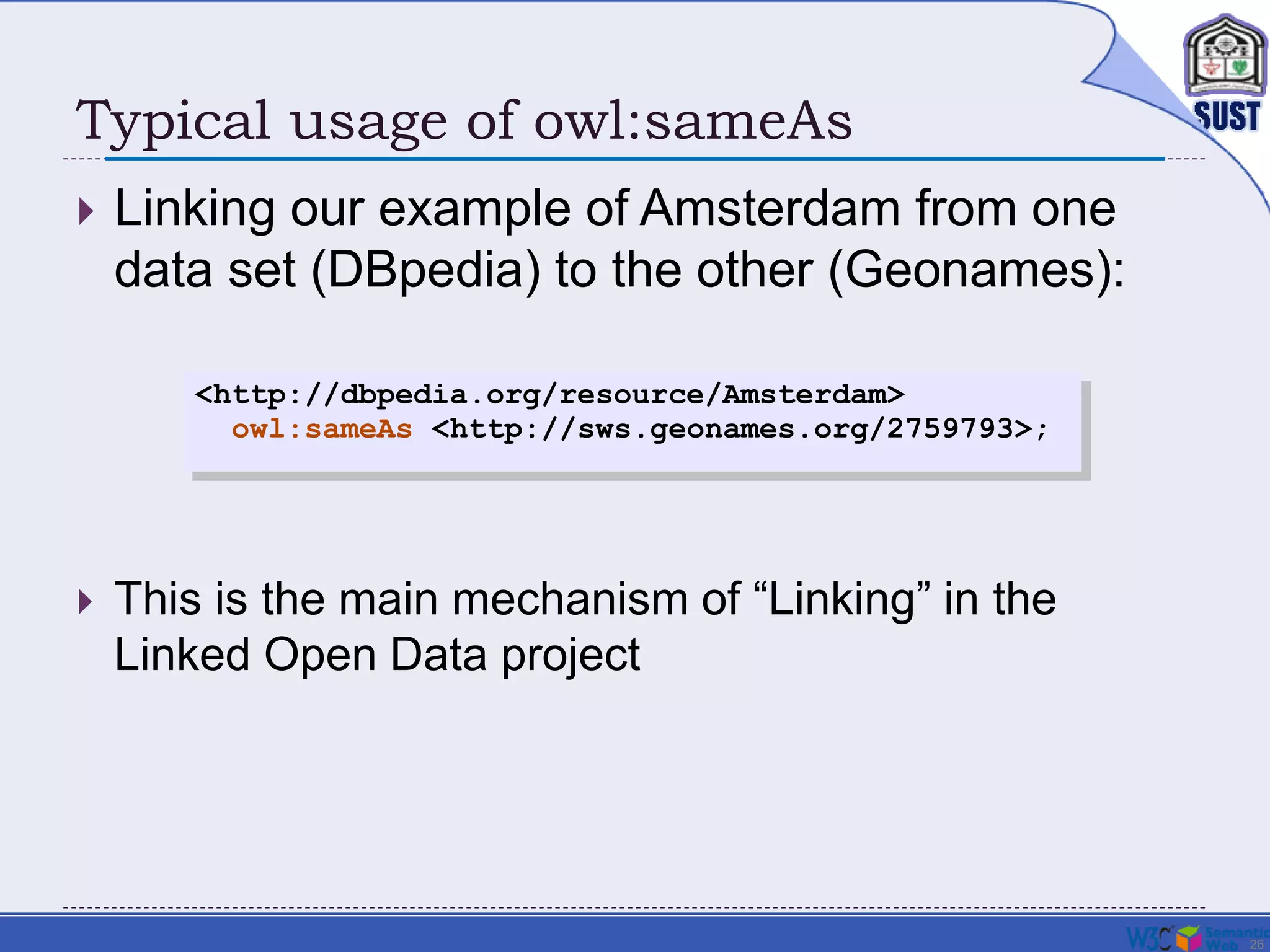
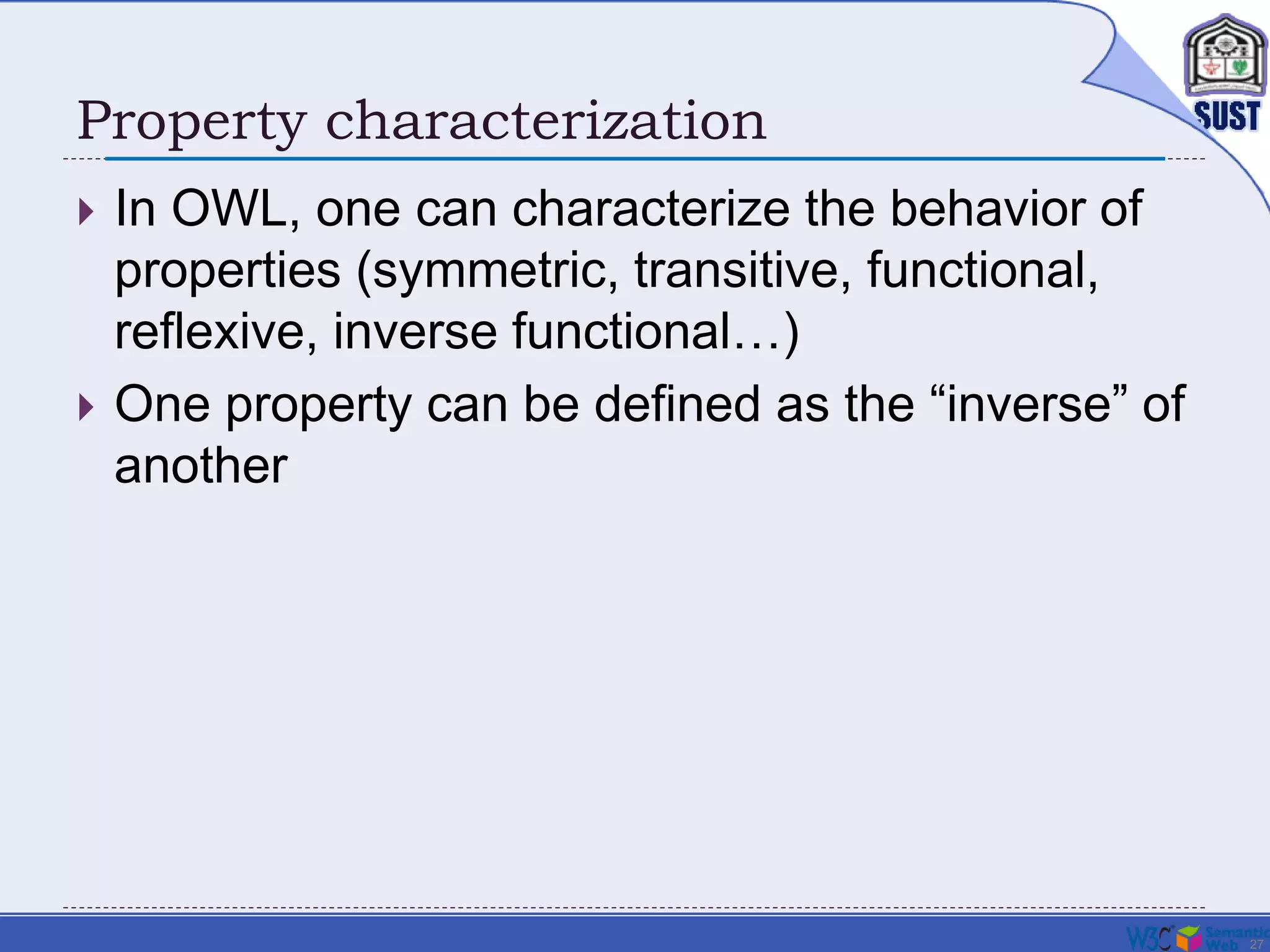
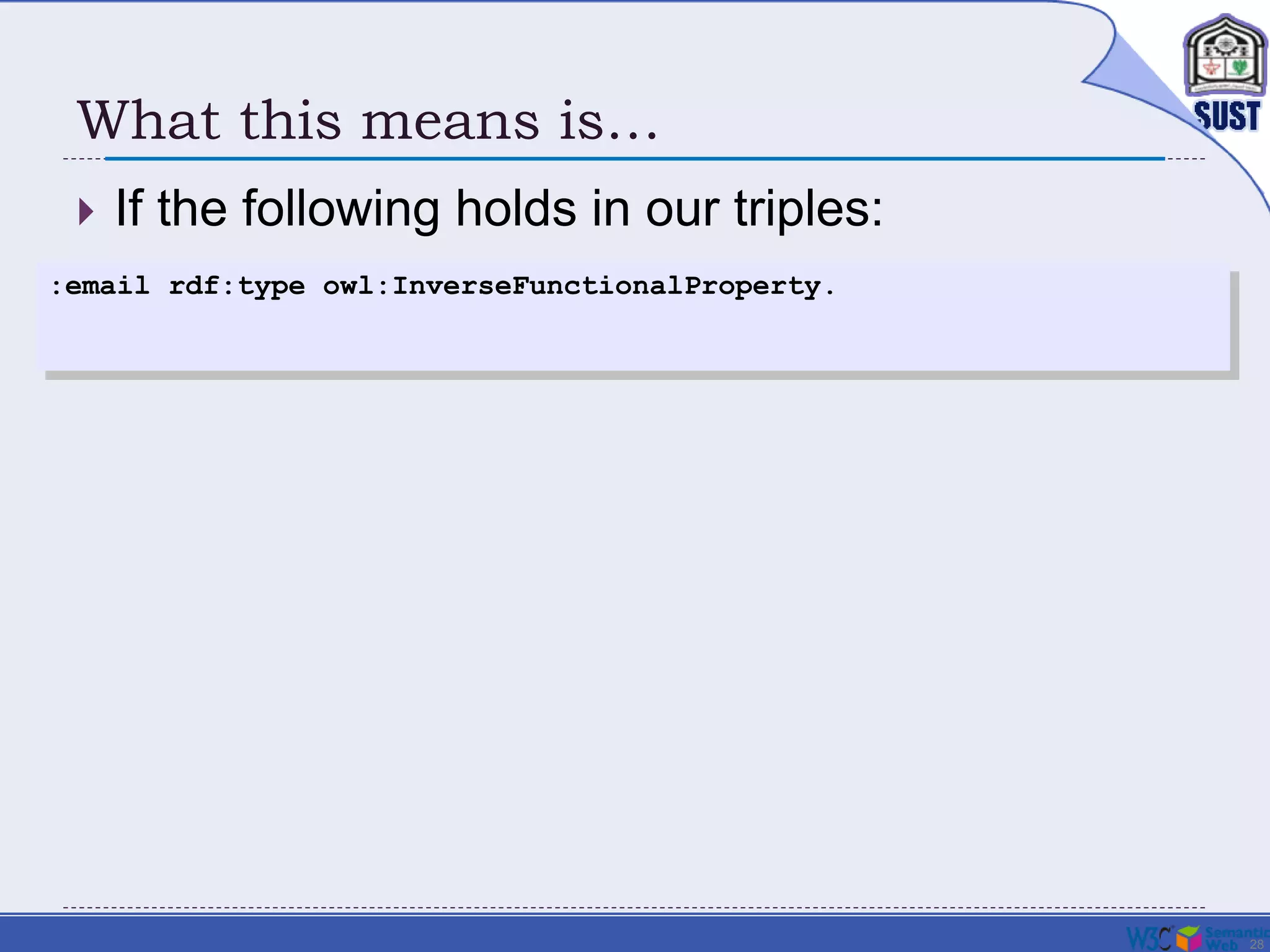


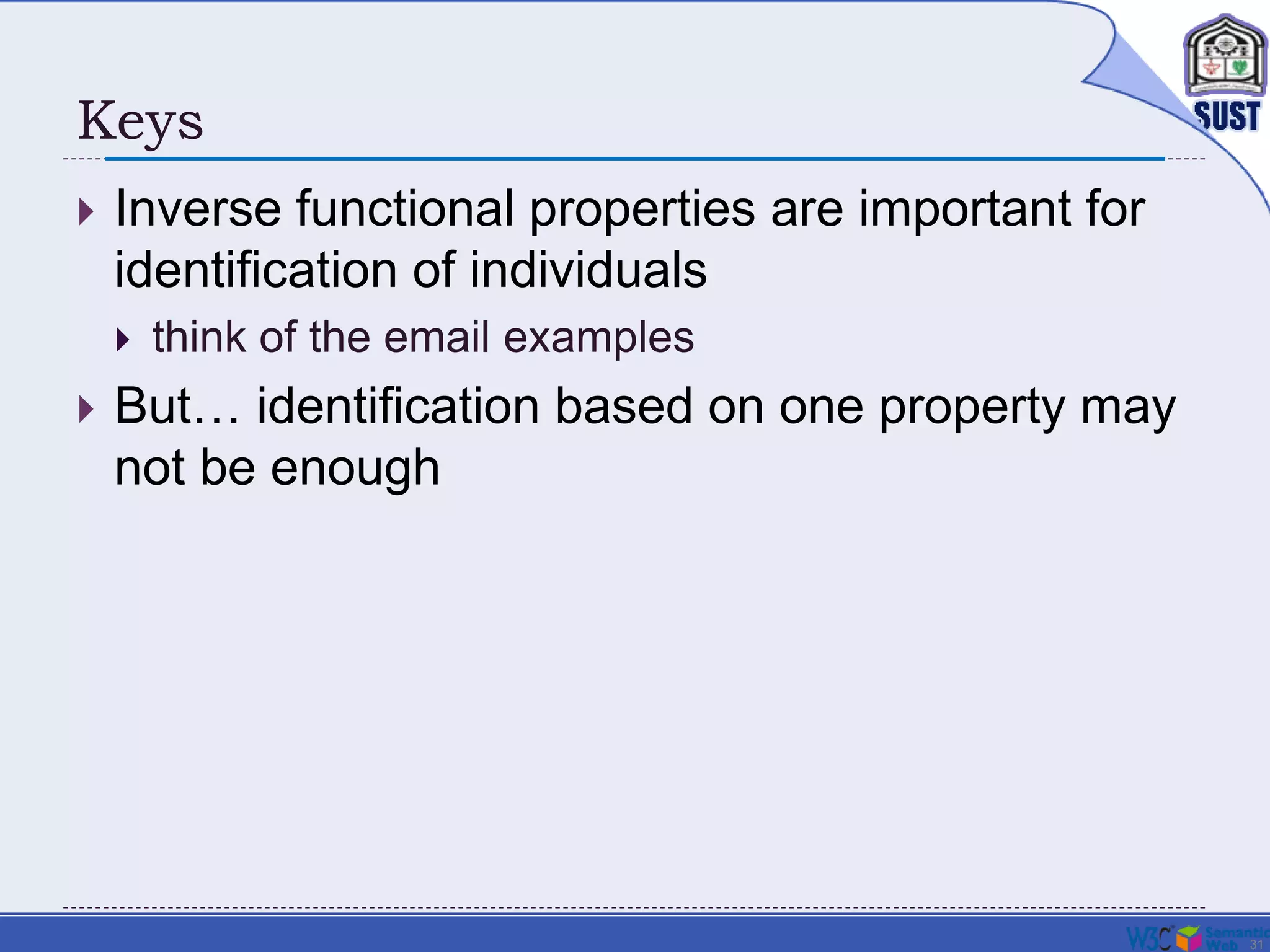
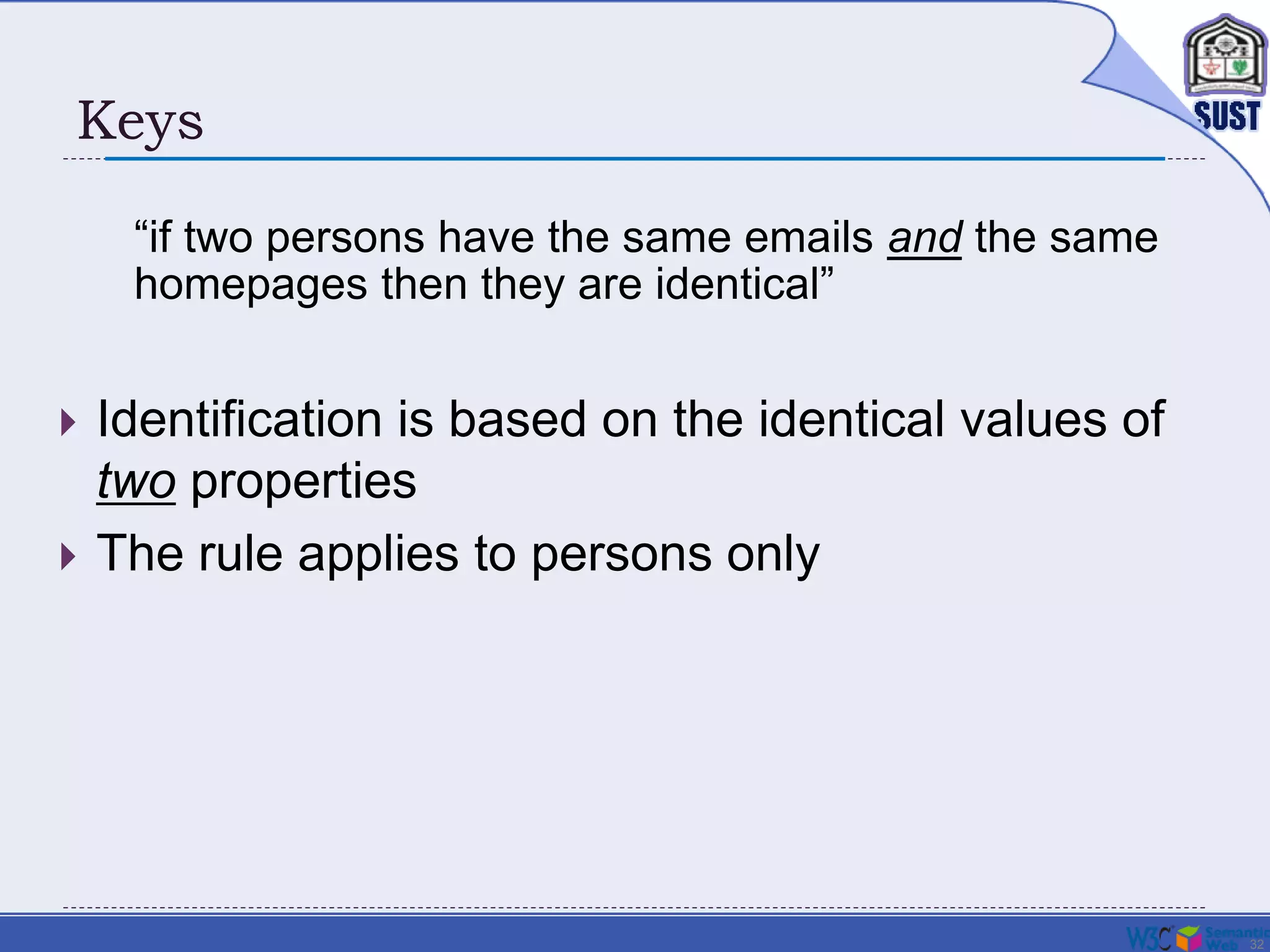
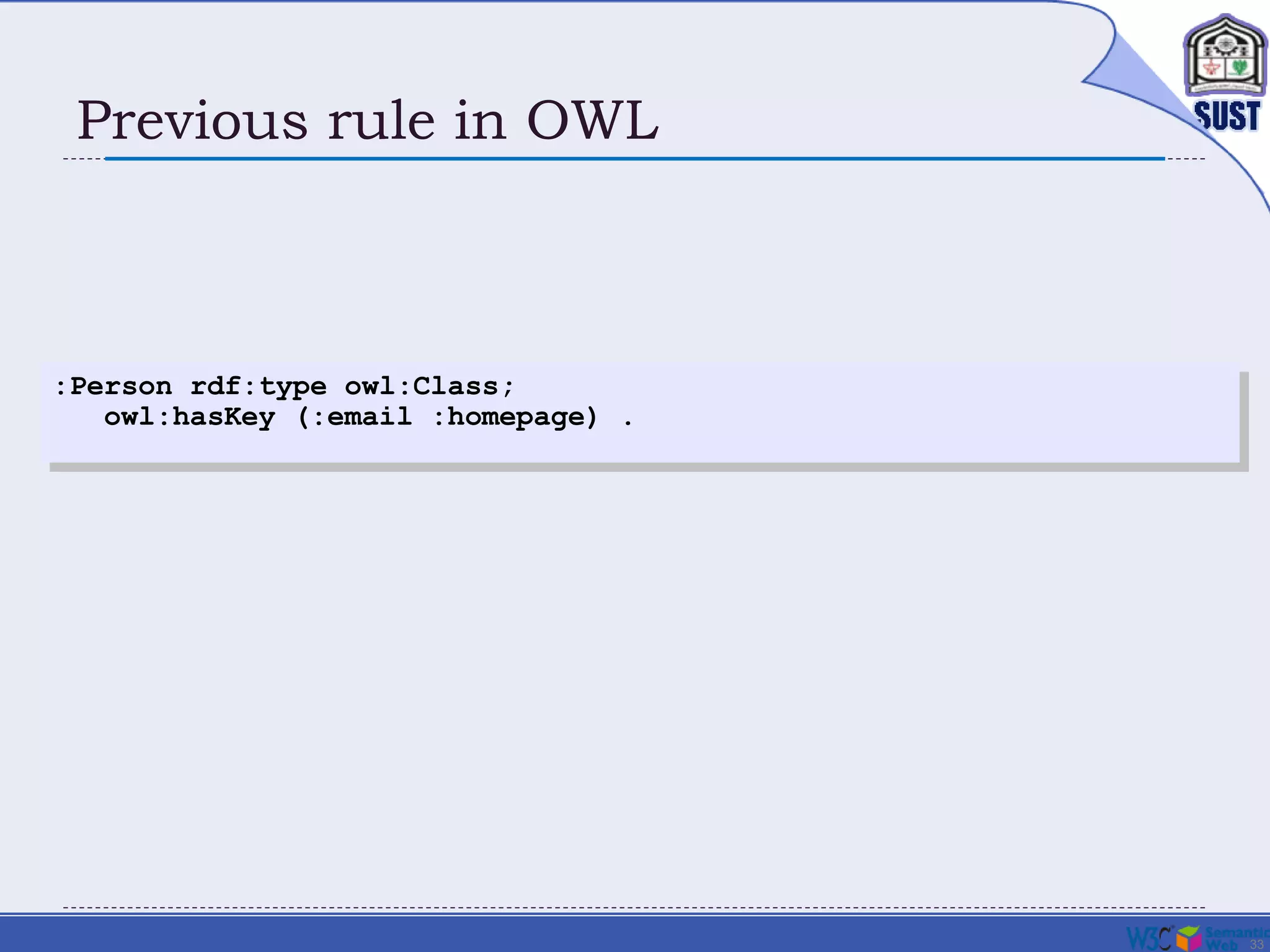
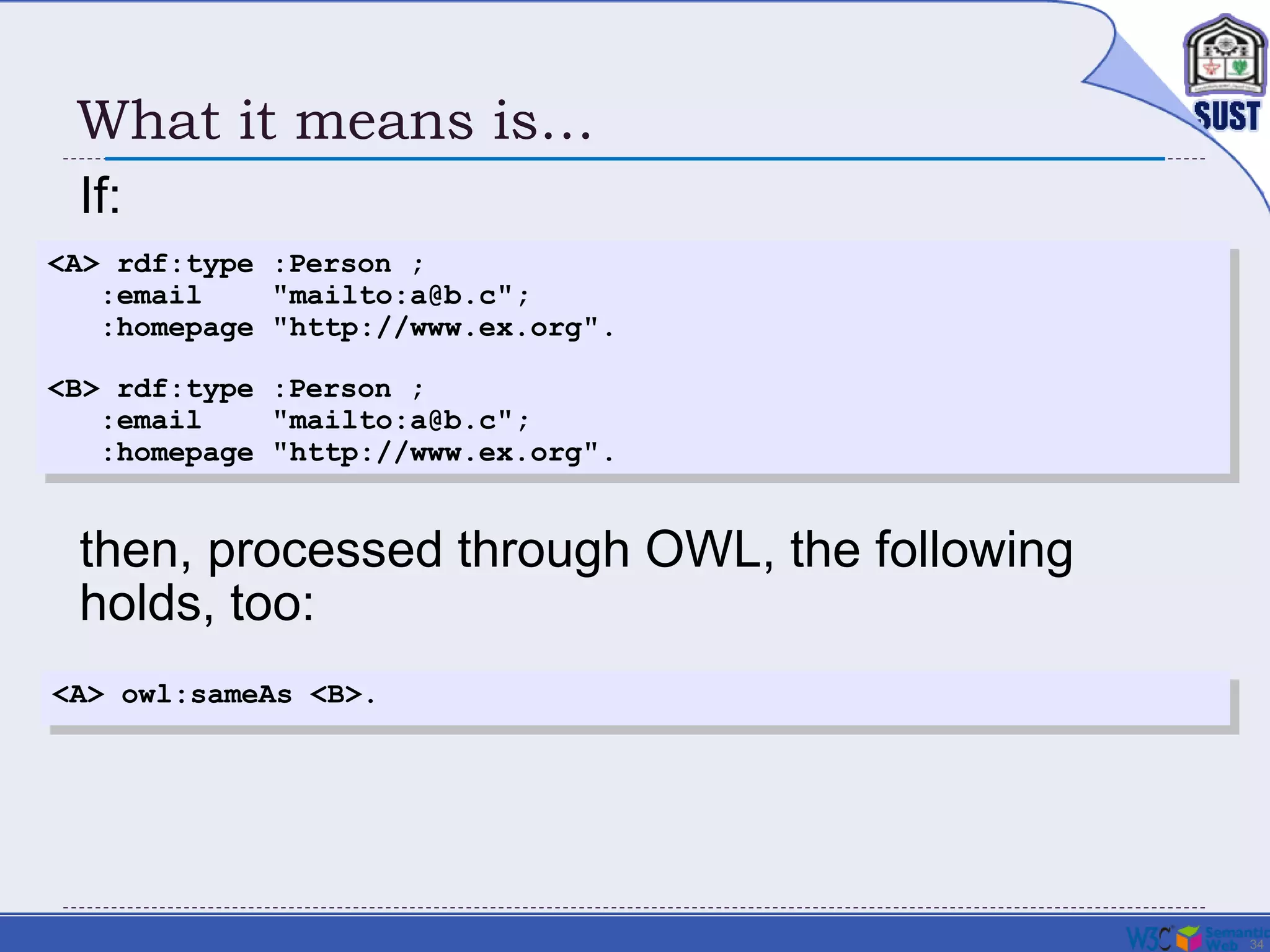
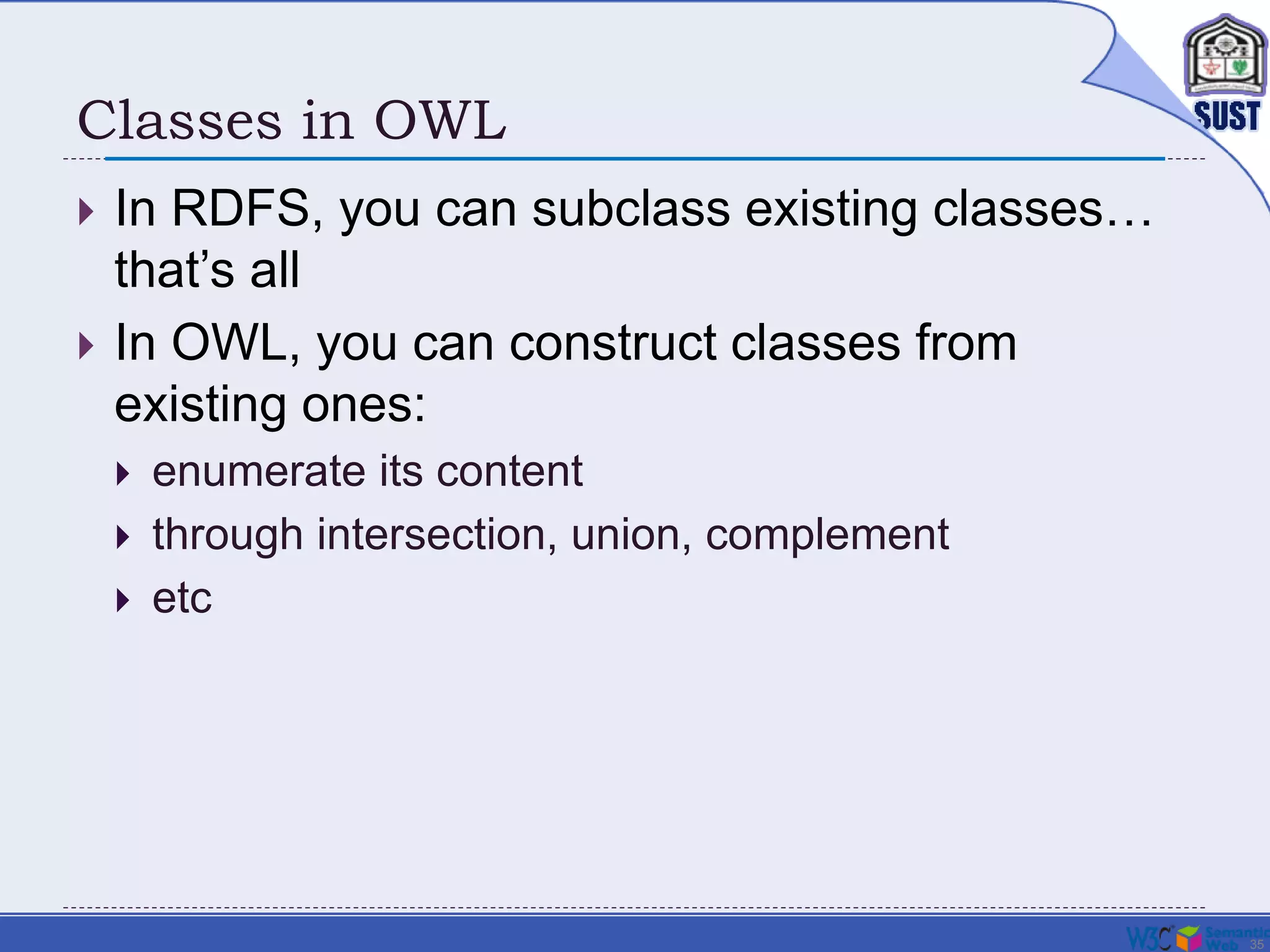
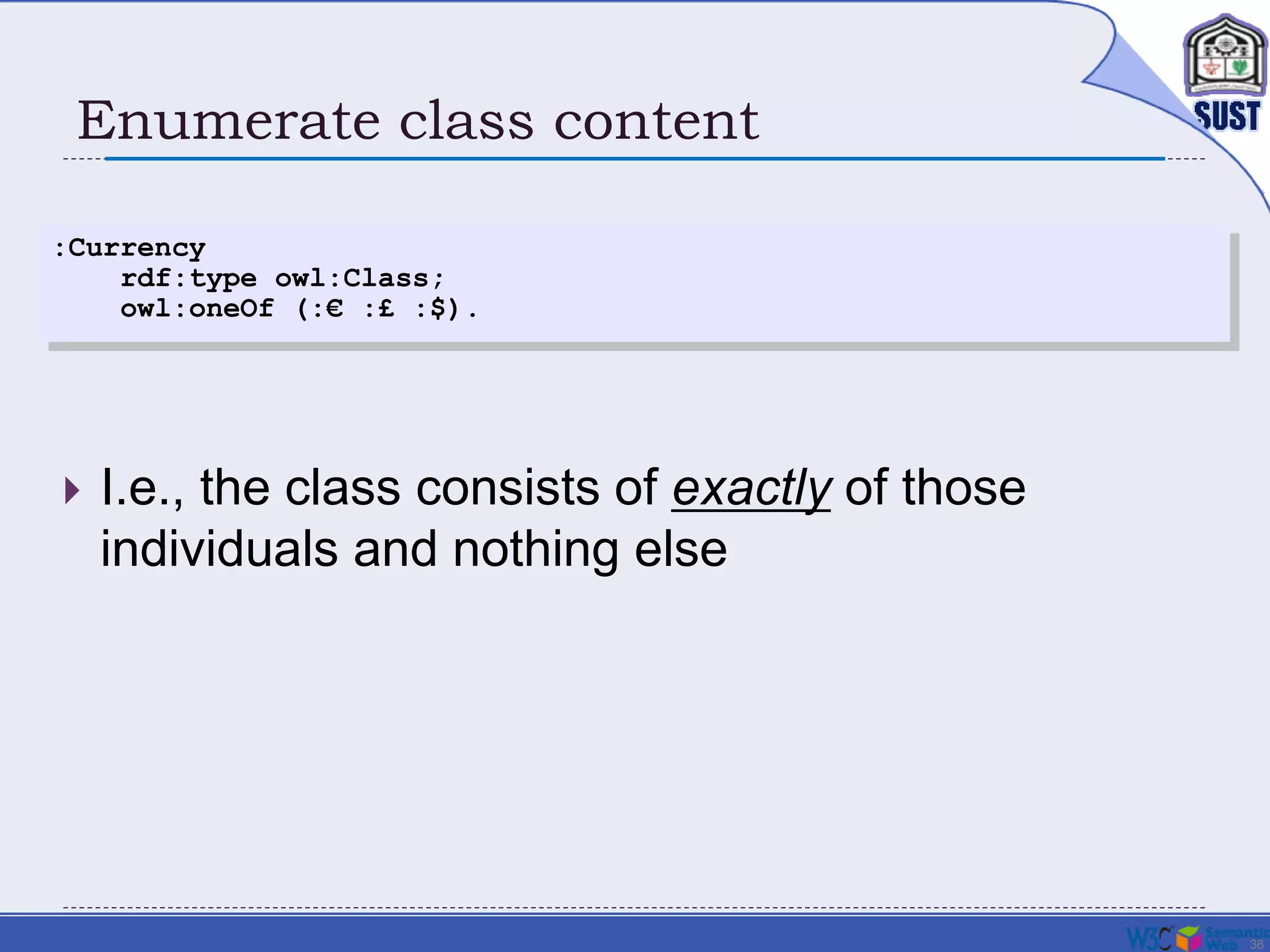
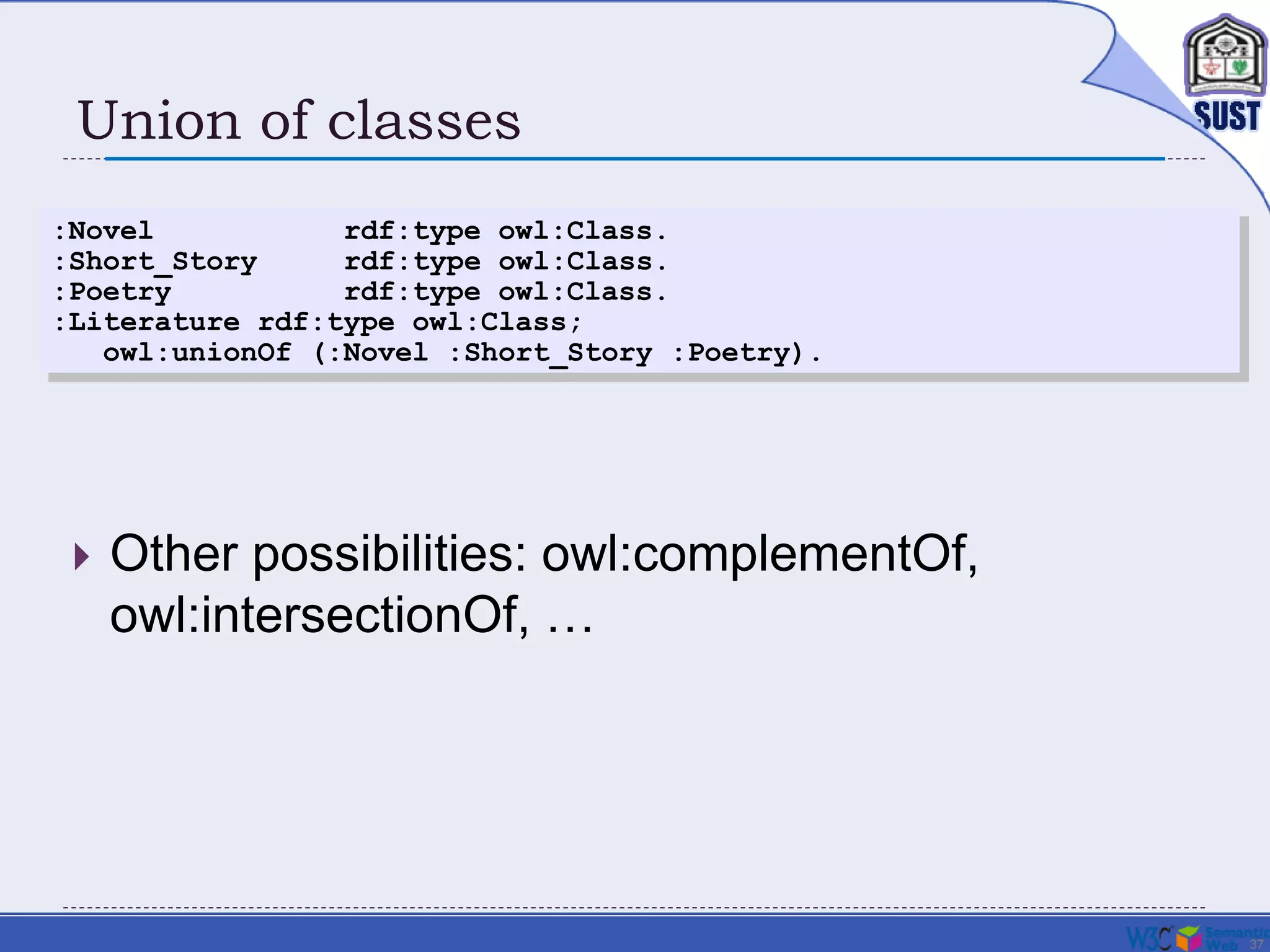
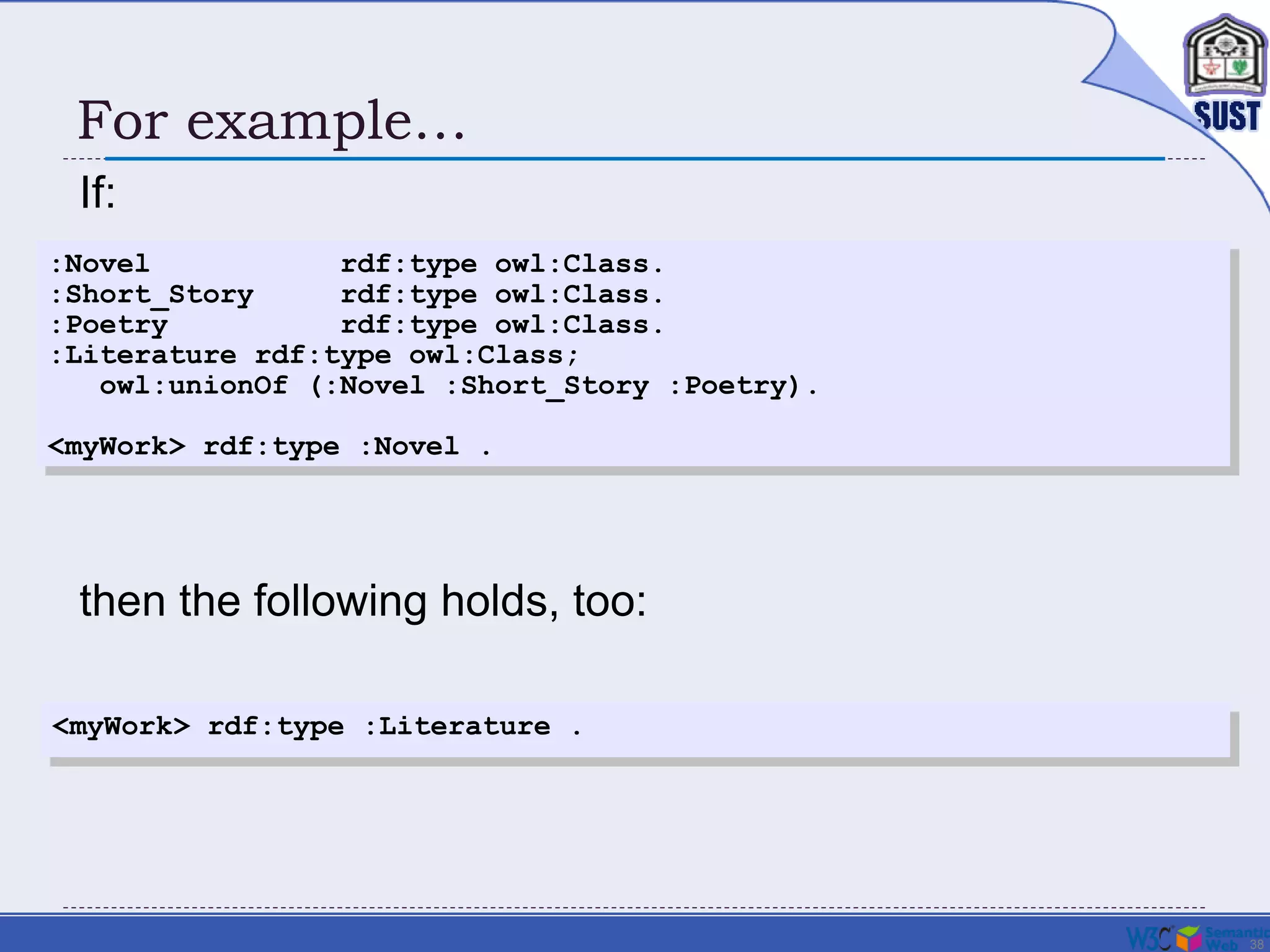
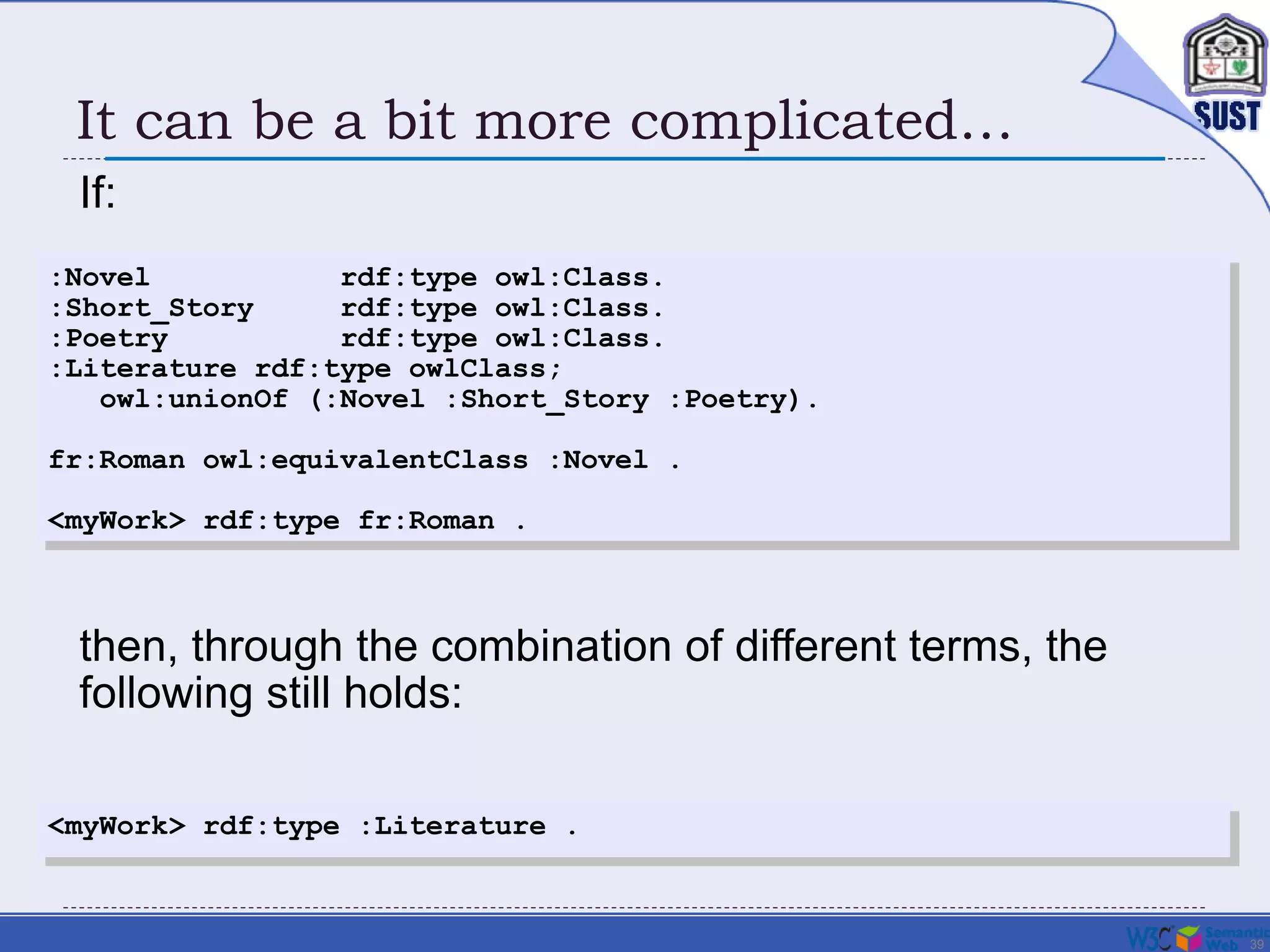
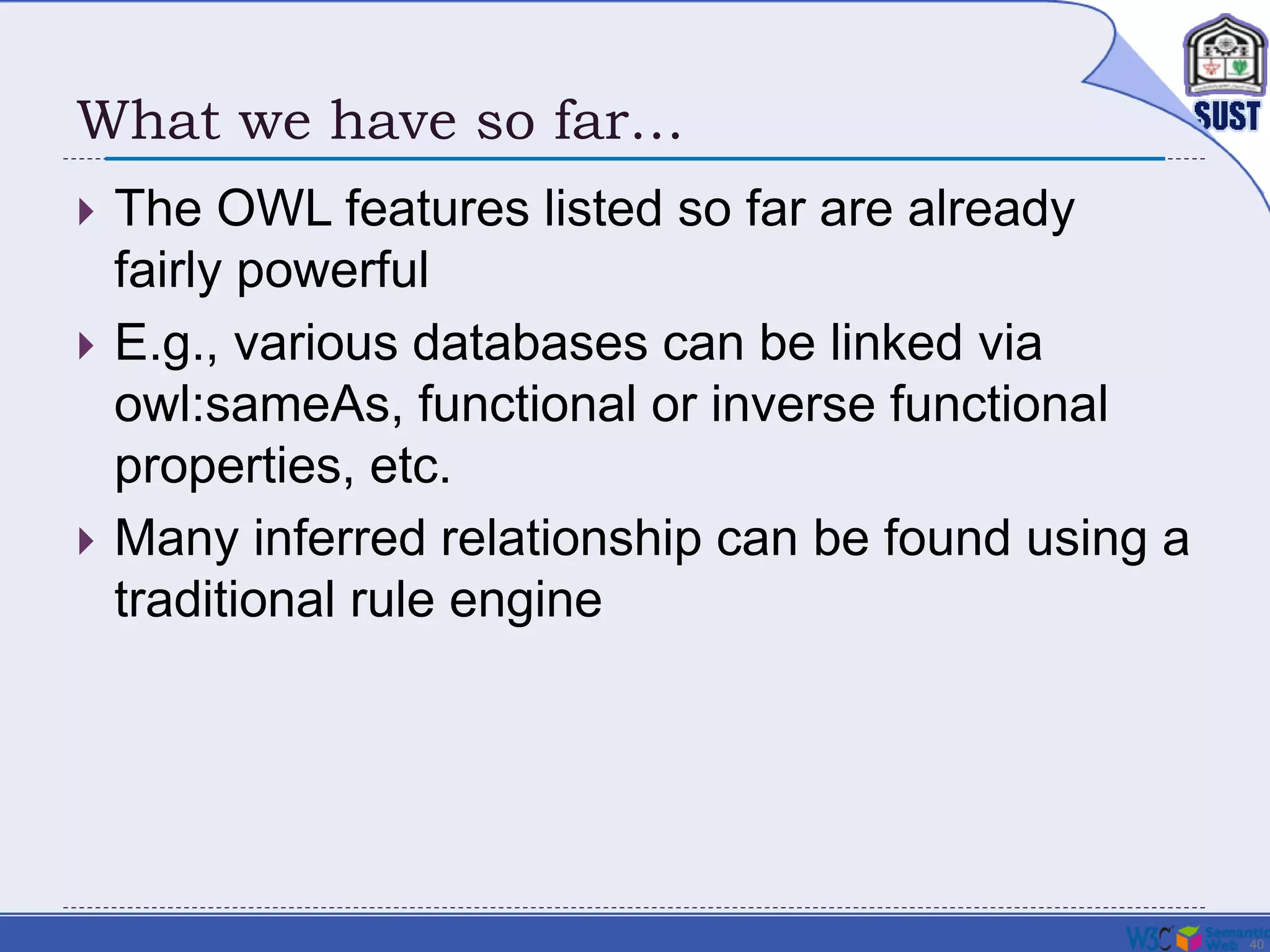

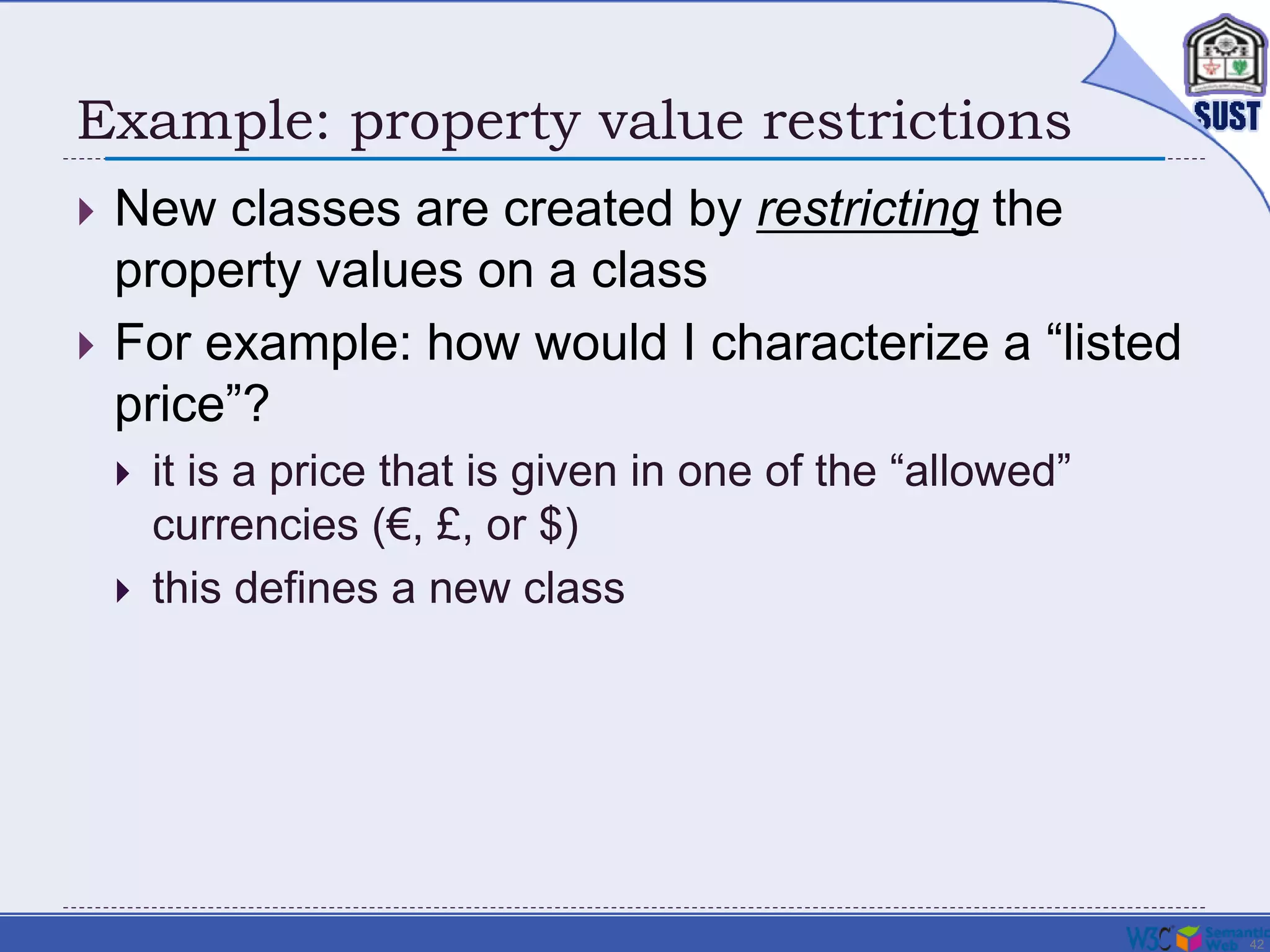
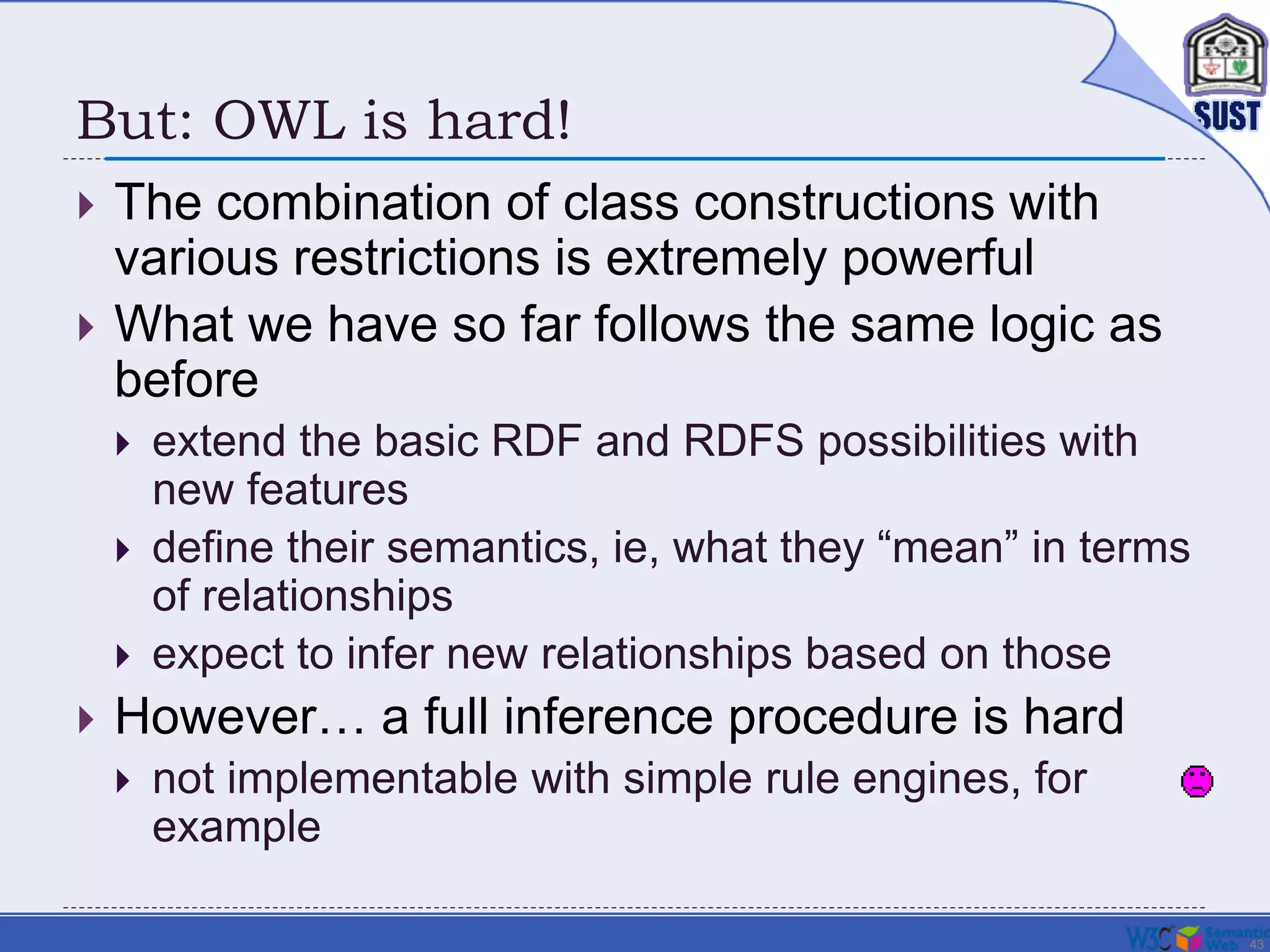
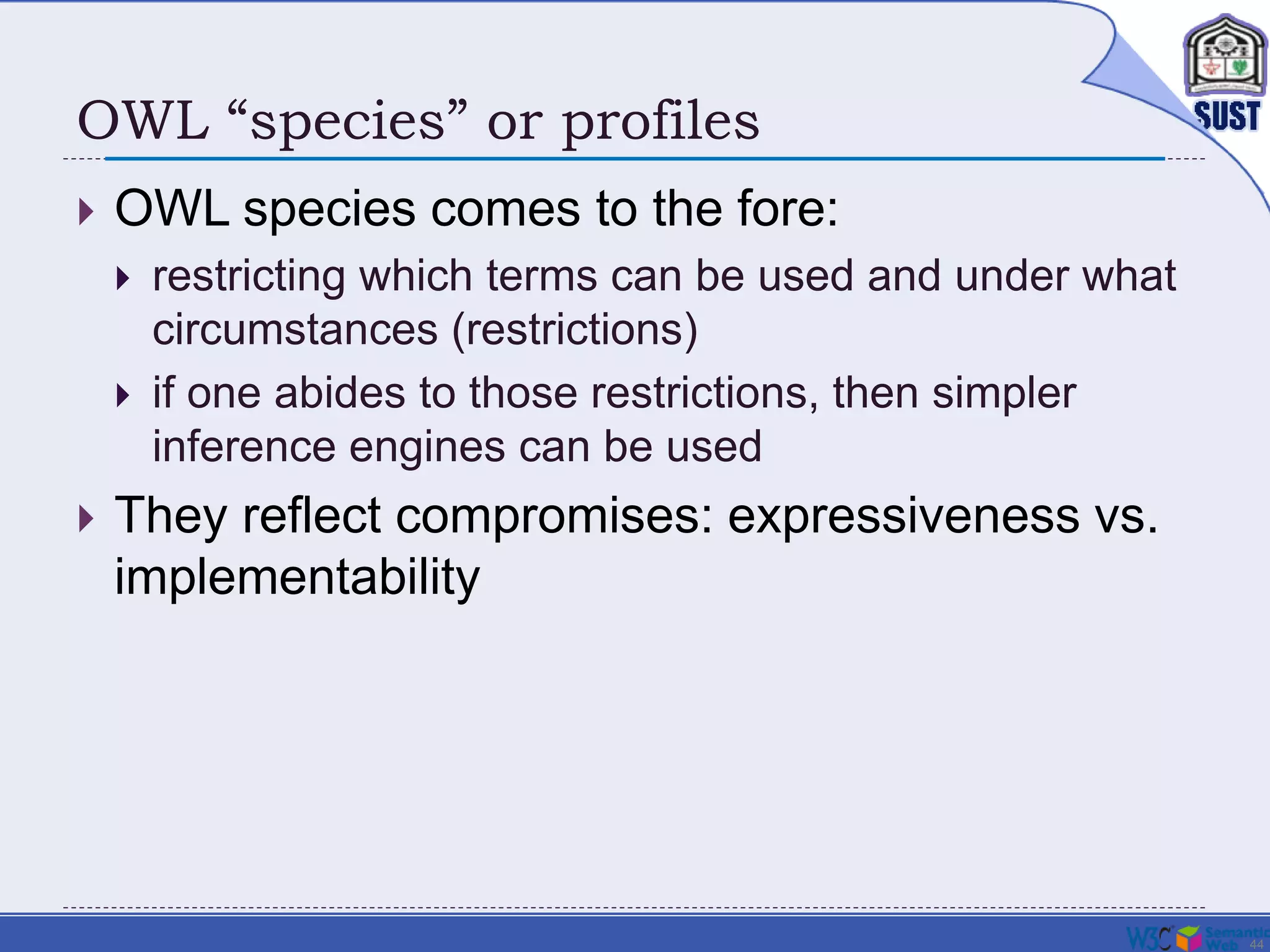
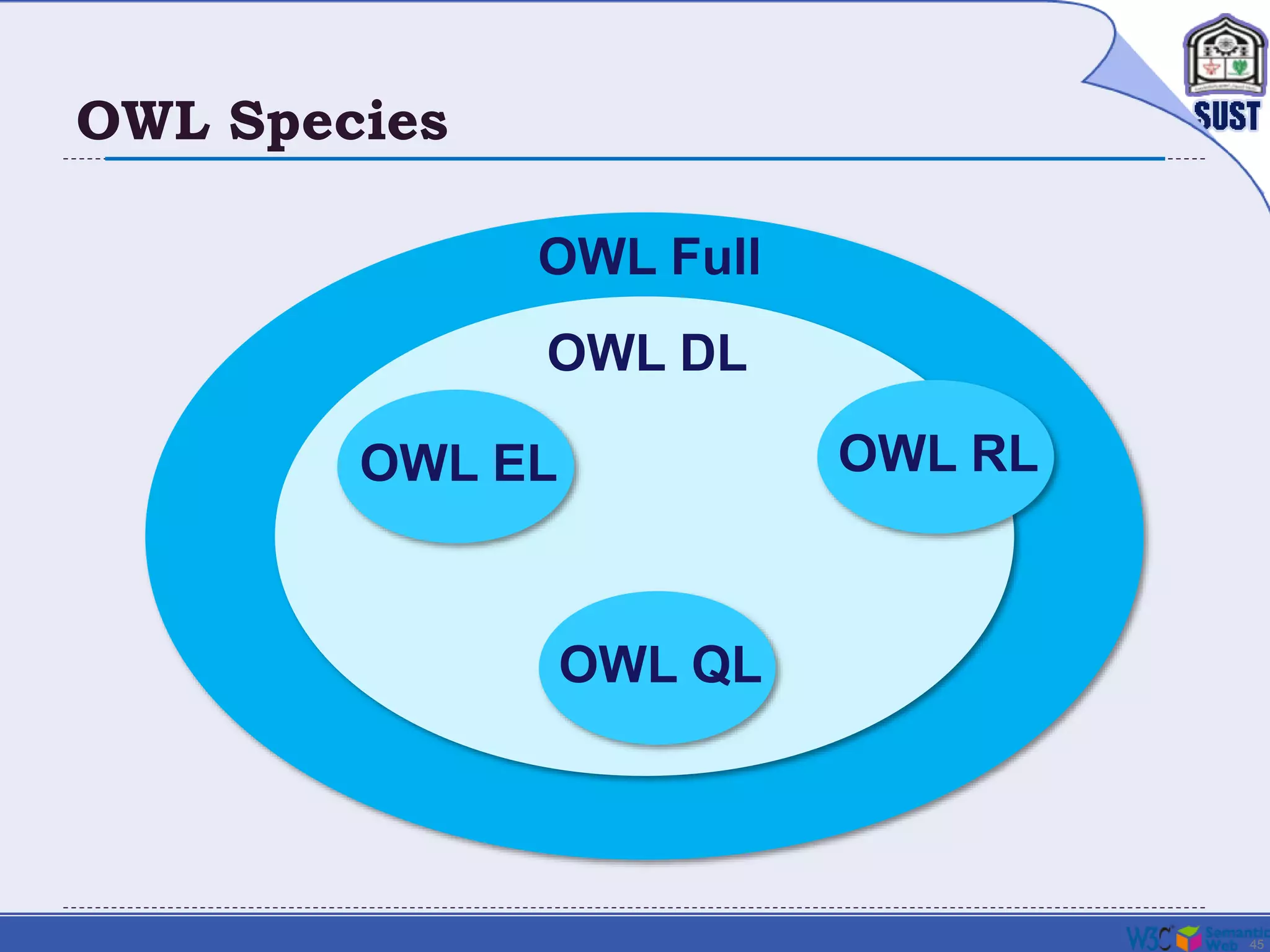

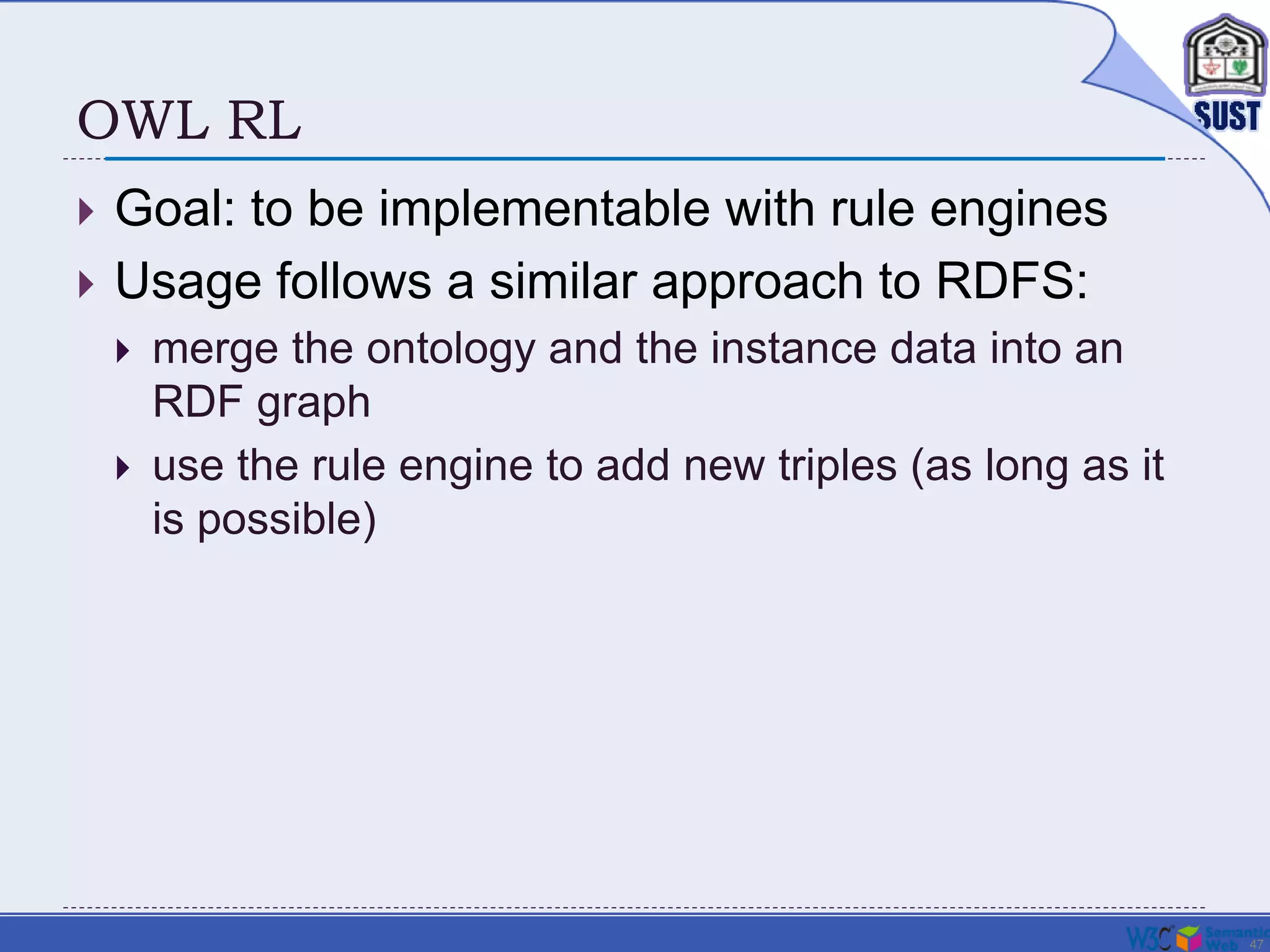
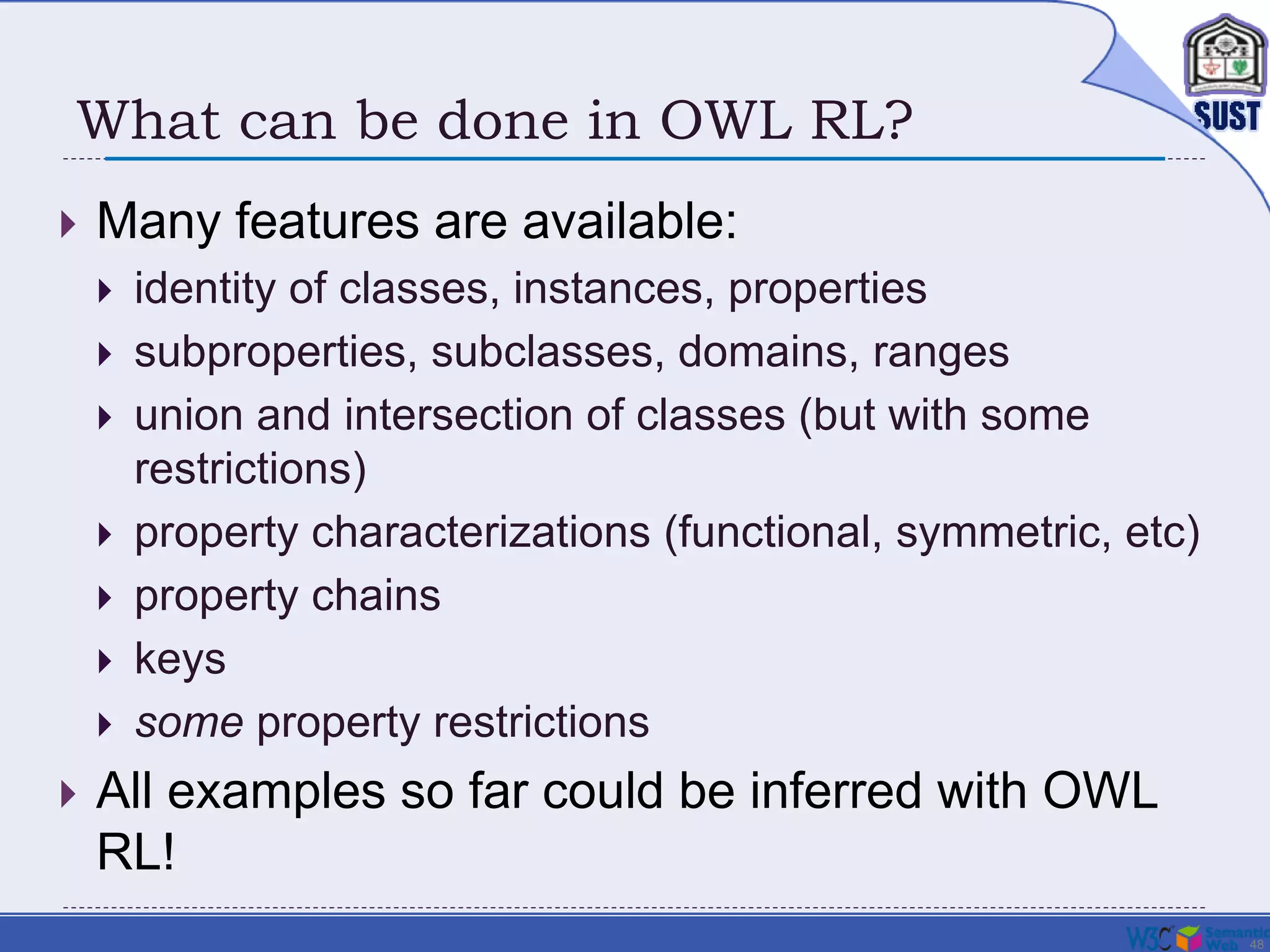
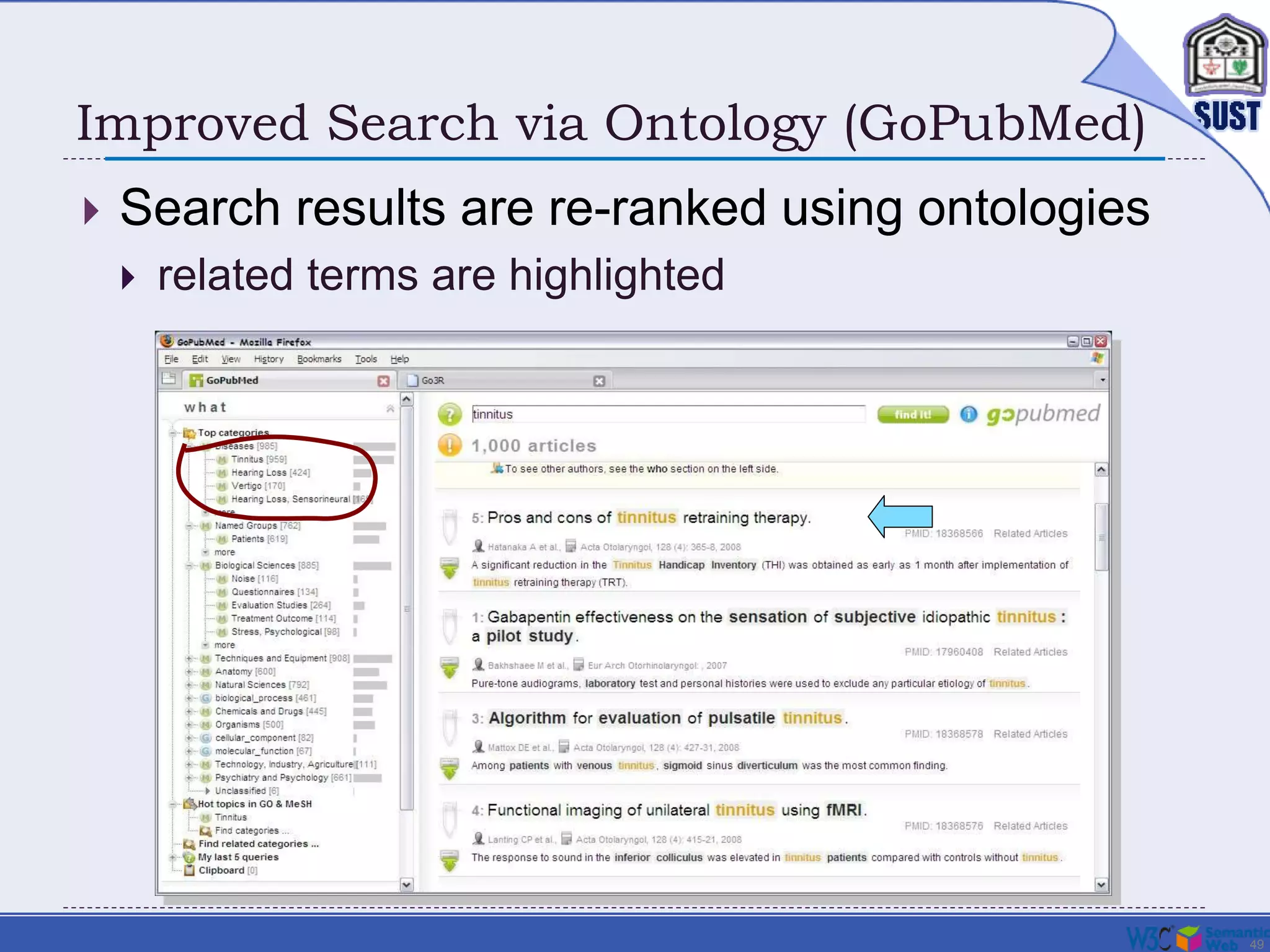
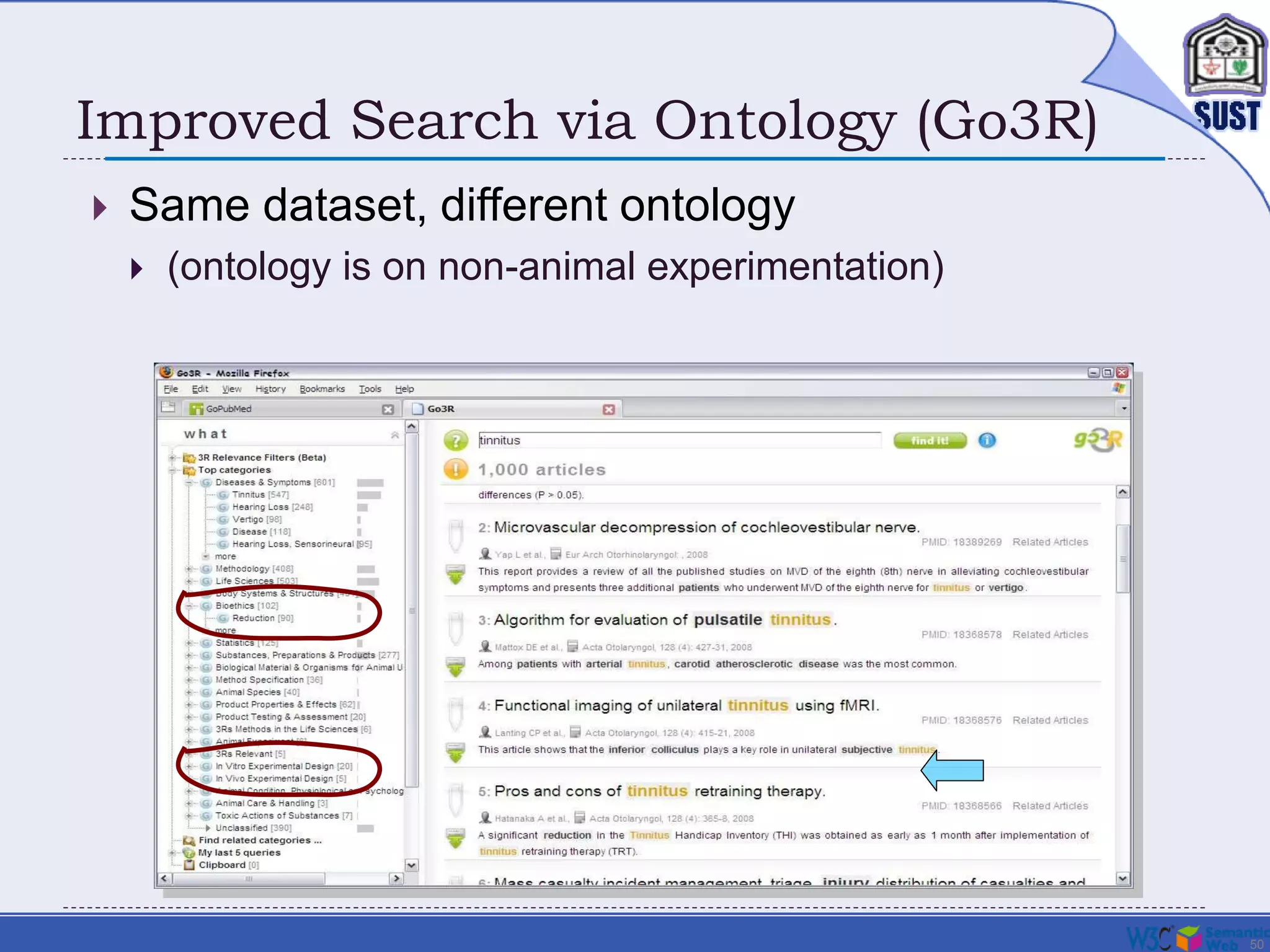

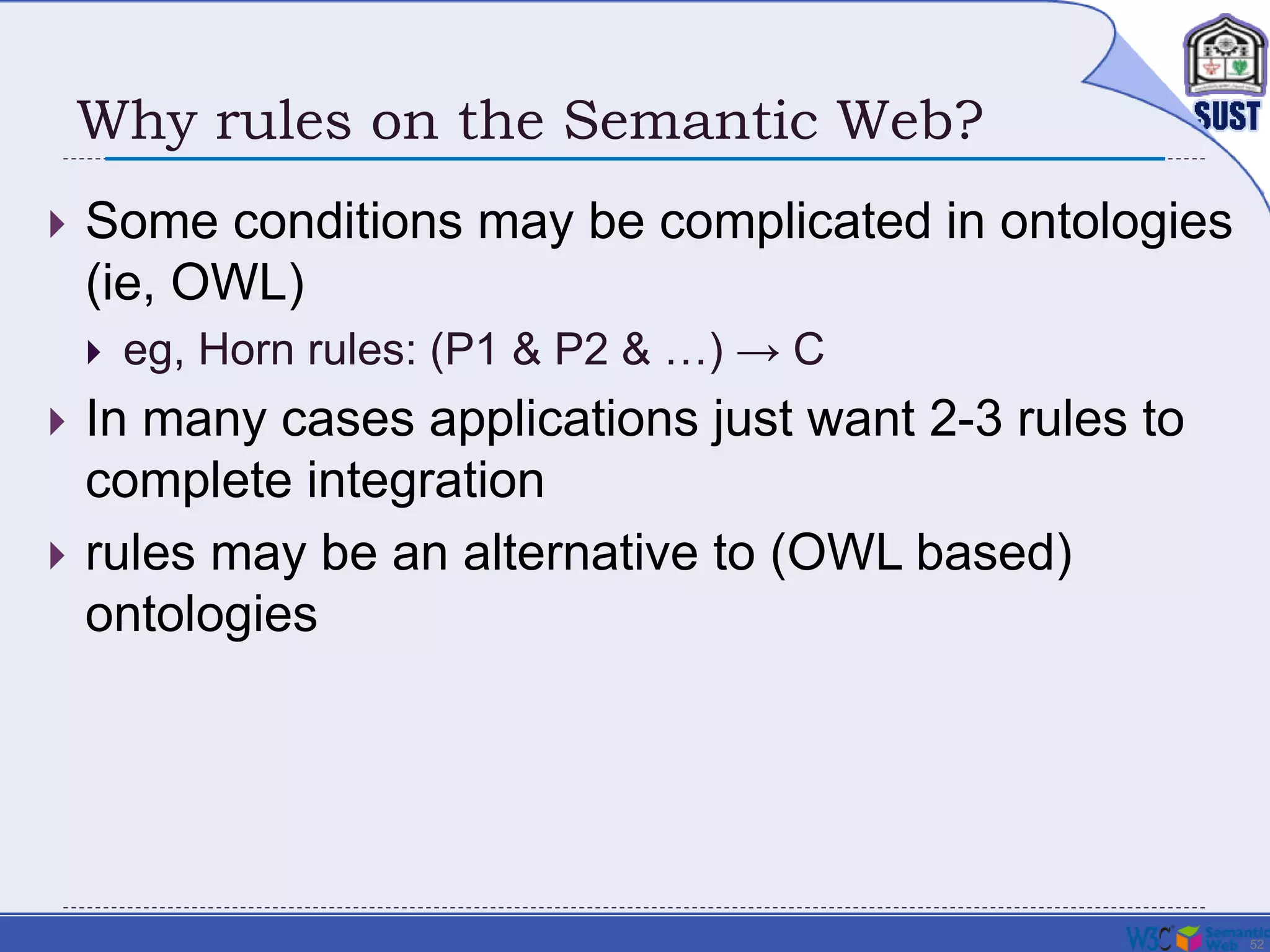
![53
Things you may want to express
An example from our bookshop integration:
“I buy a novel with over 500 pages if it costs less
than €20”
something like (in an ad-hoc syntax):
{
?x rdf:type p:Novel;
p:page_number ?n;
p:price [
p:currency :€;
rdf:value ?z
].
?n > "500"^^xsd:integer.
?z < "20.0"^^xsd:double.
}
=>
{ <me> p:buys ?x }](https://image.slidesharecdn.com/ontov2-150615120348-lva1-app6891/75/Semantic-web-Technology-53-2048.jpg)
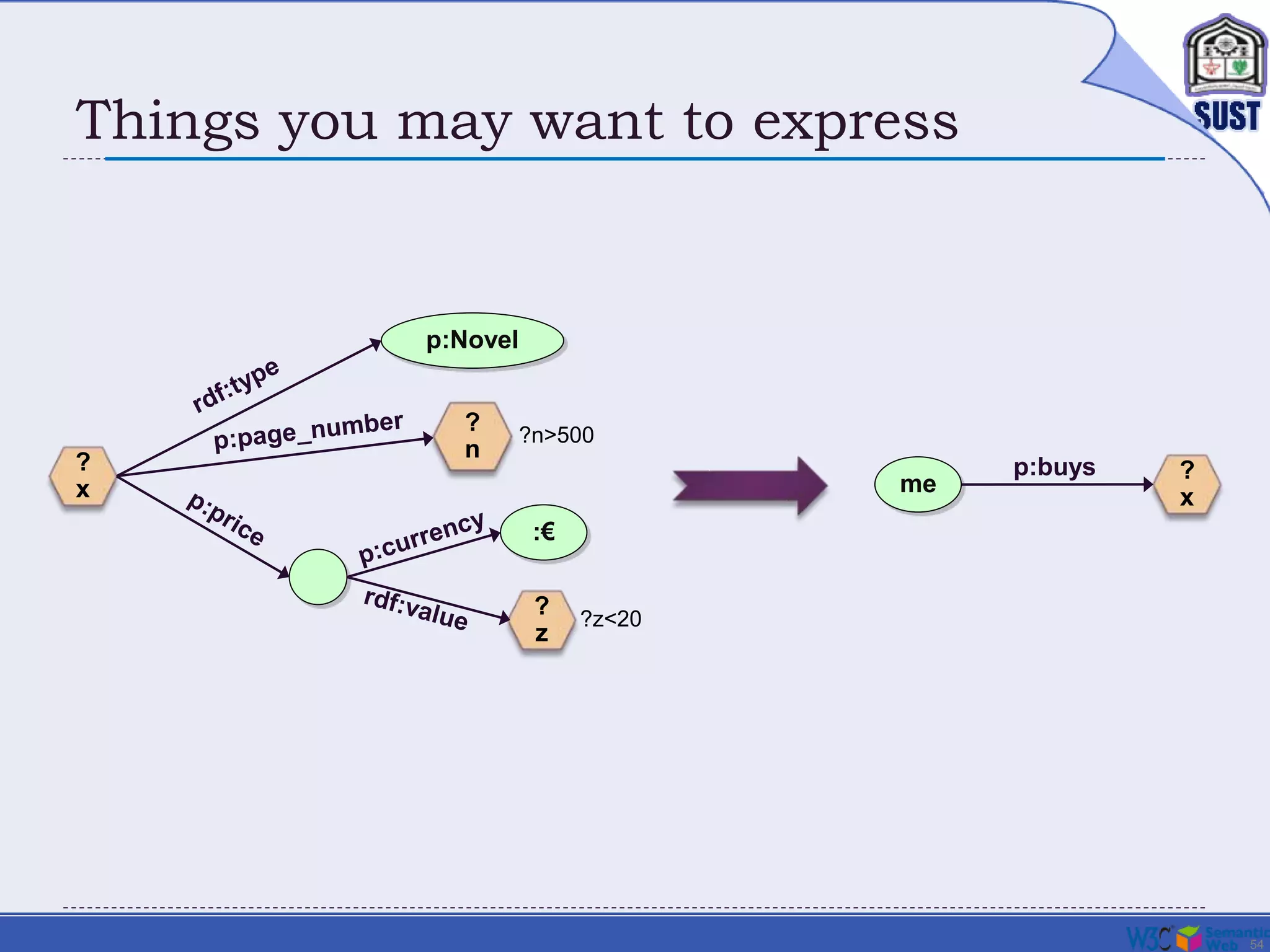

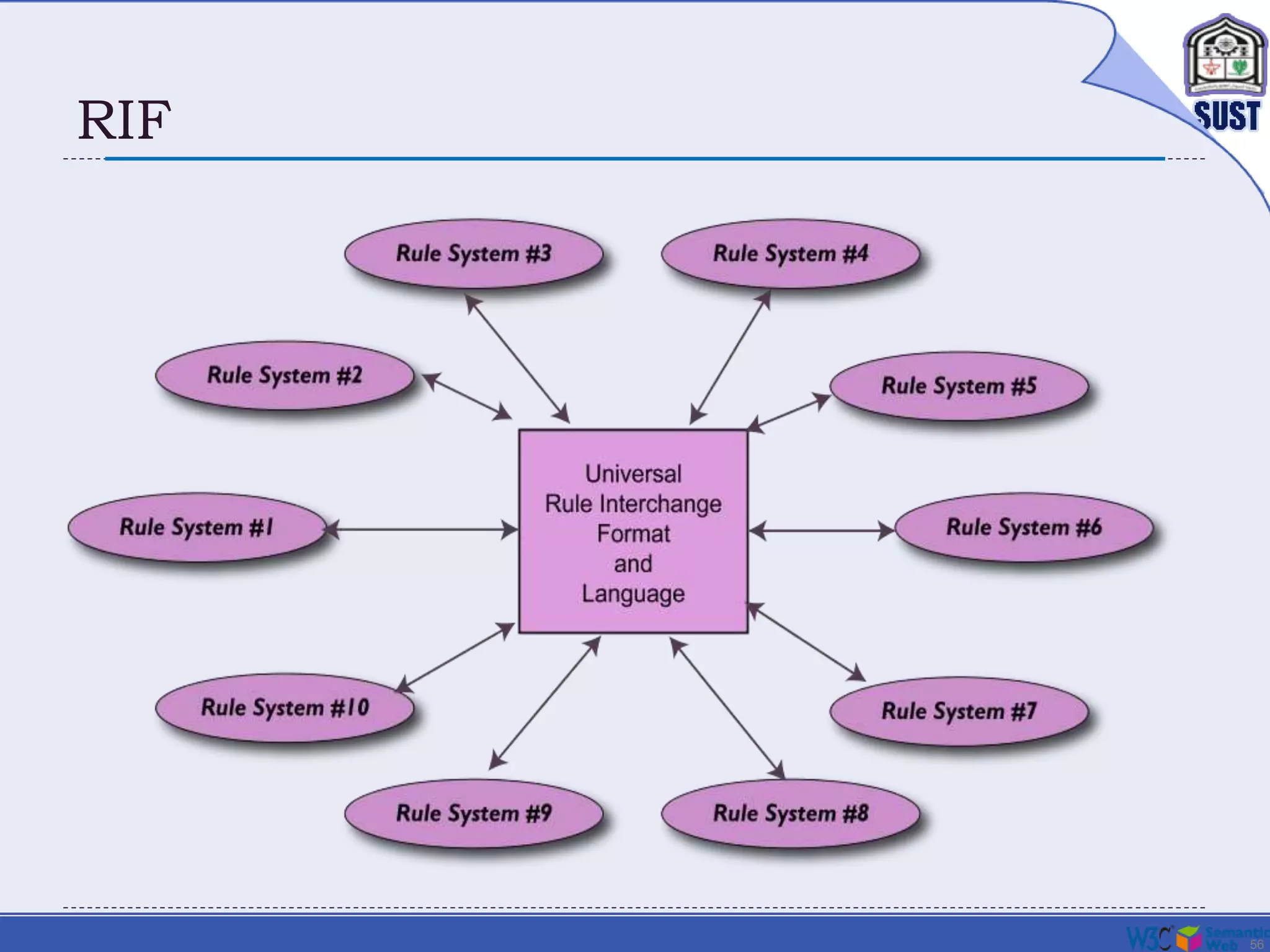
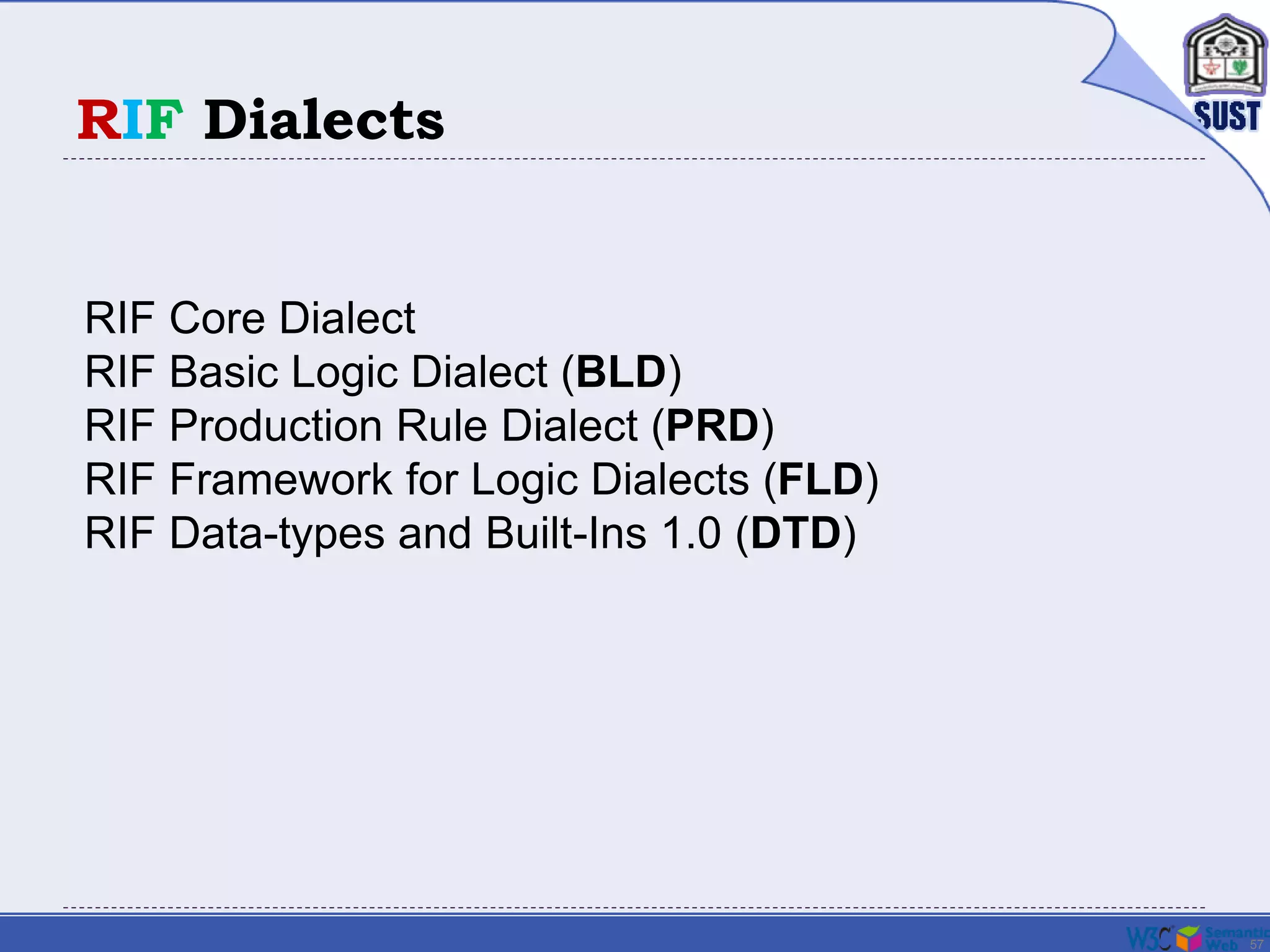
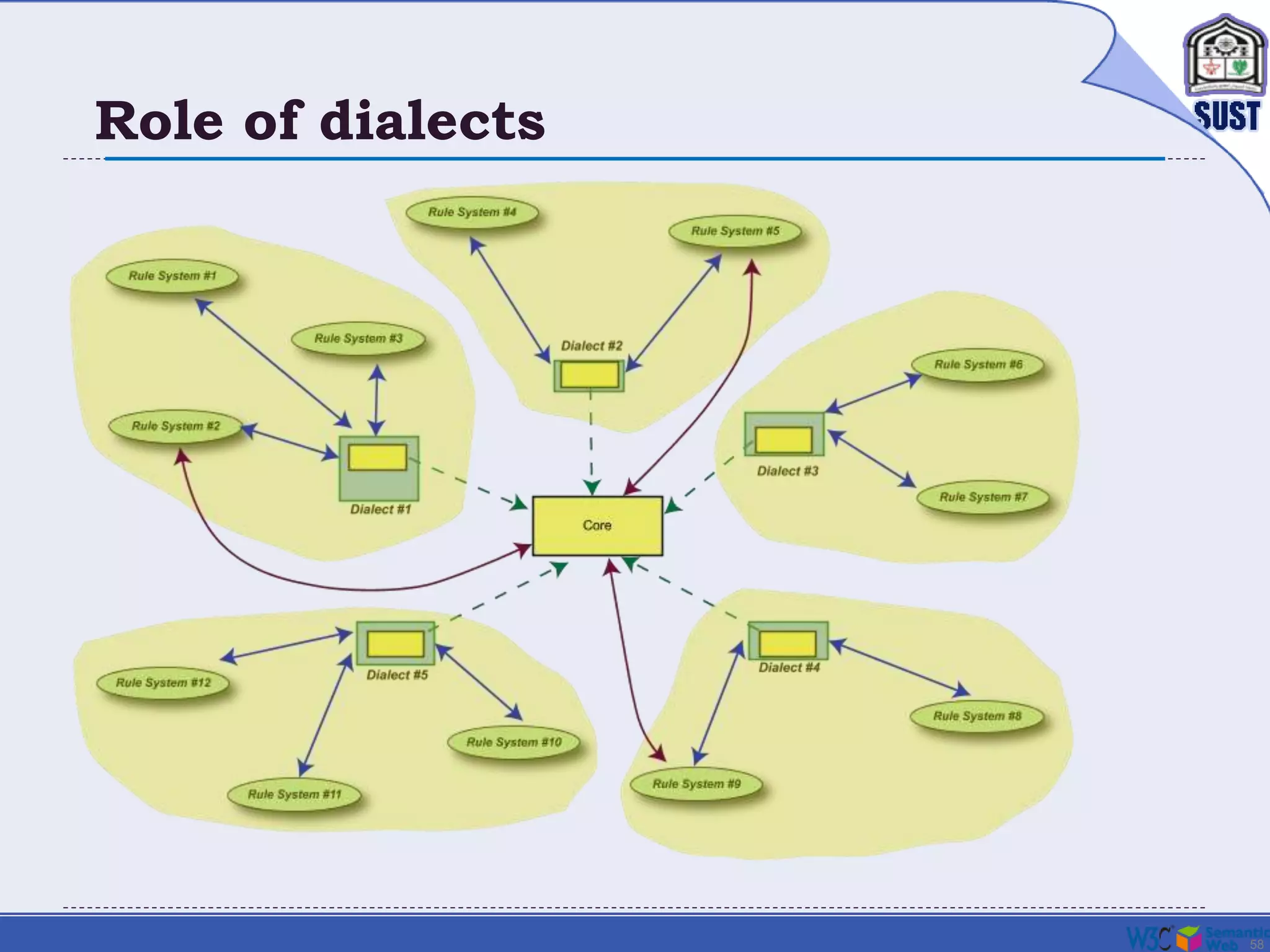
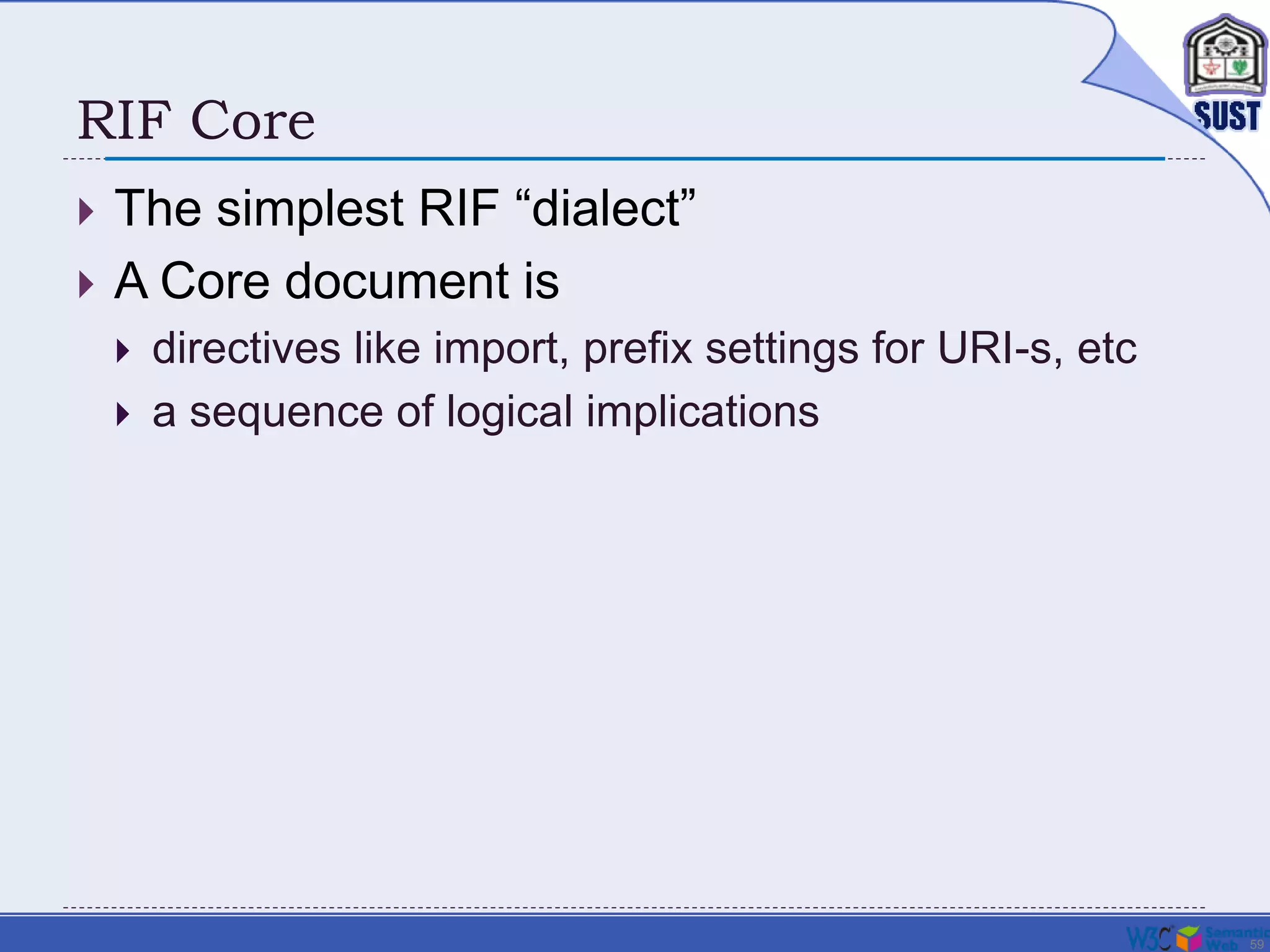
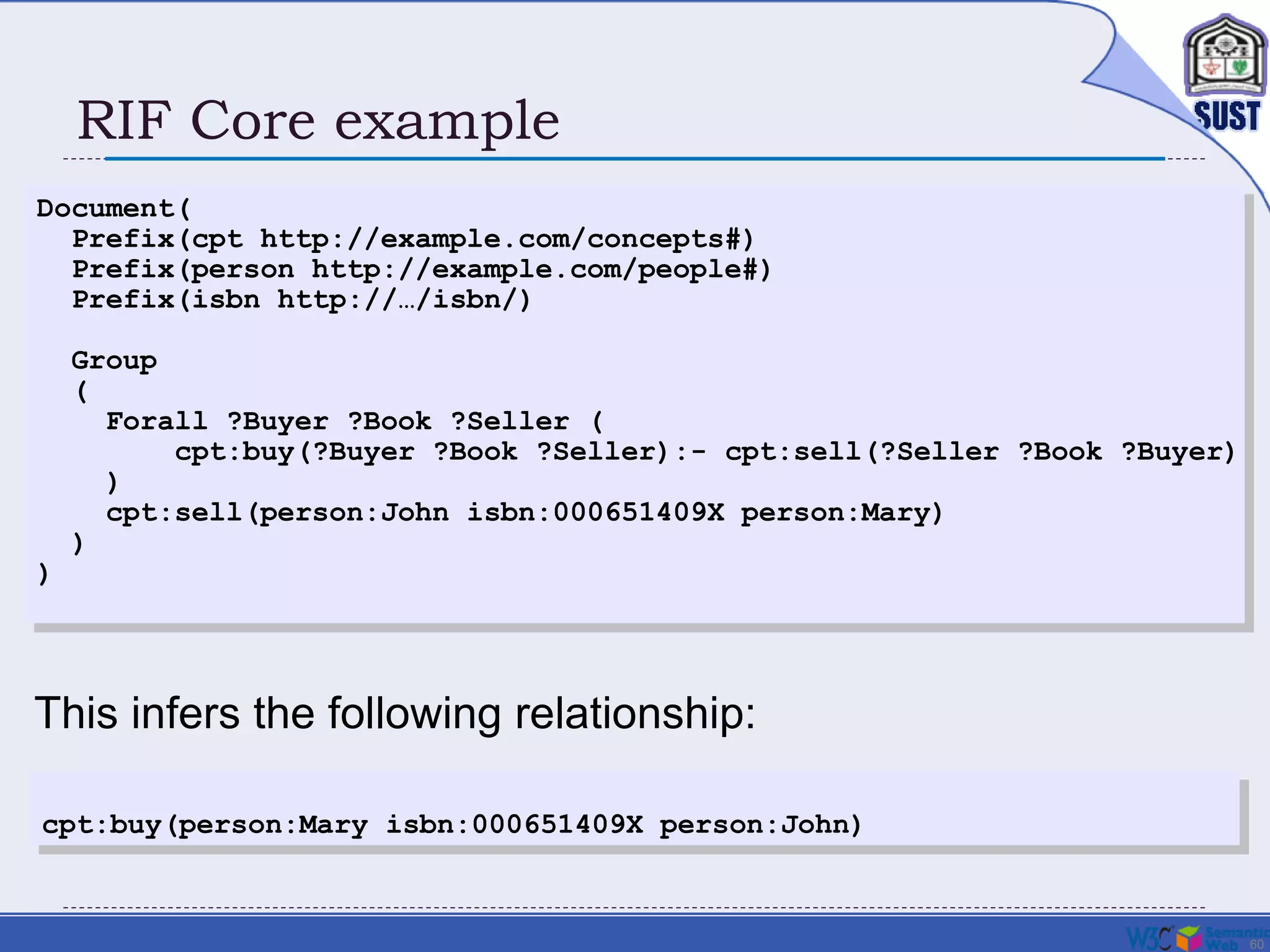
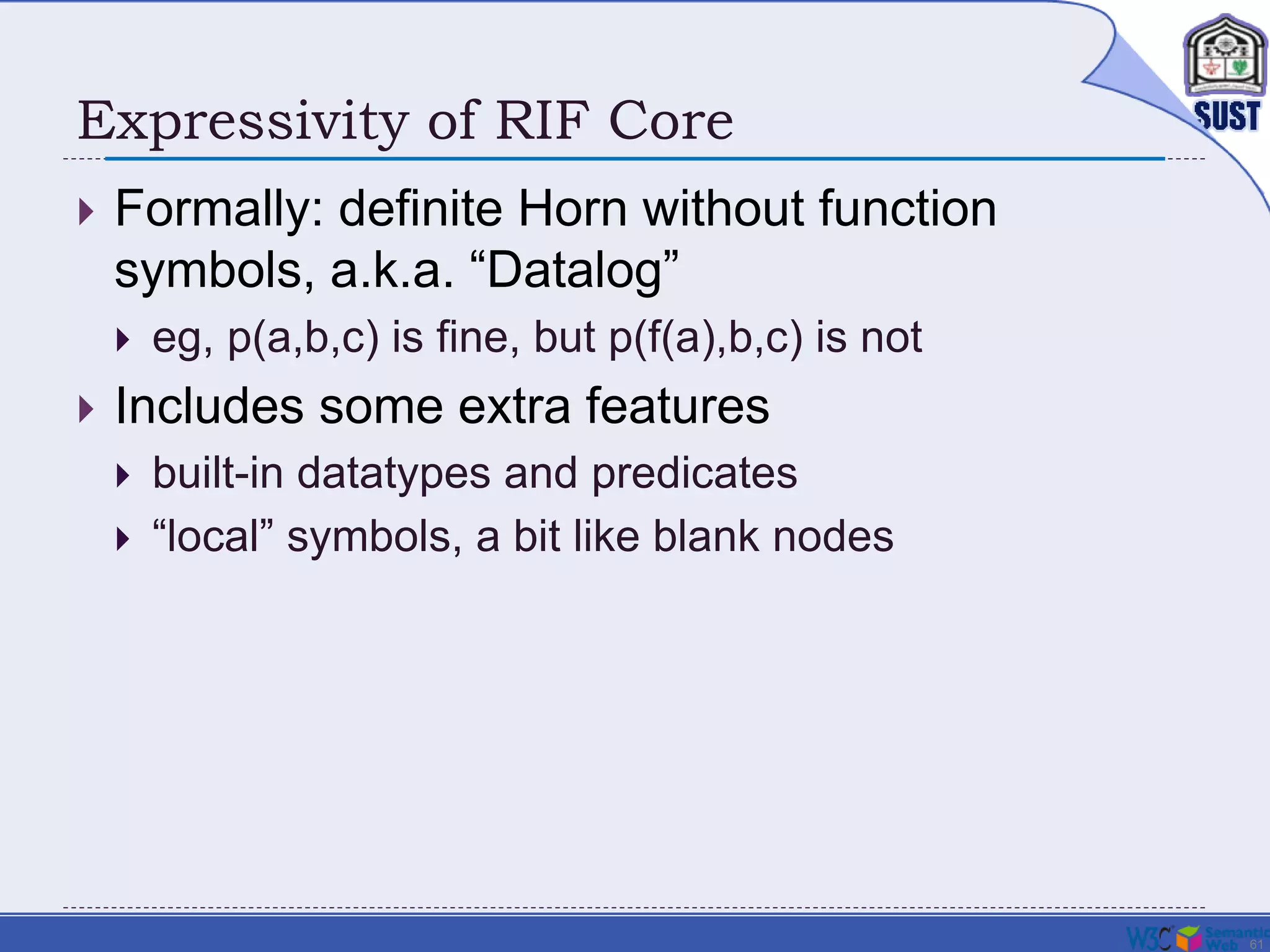


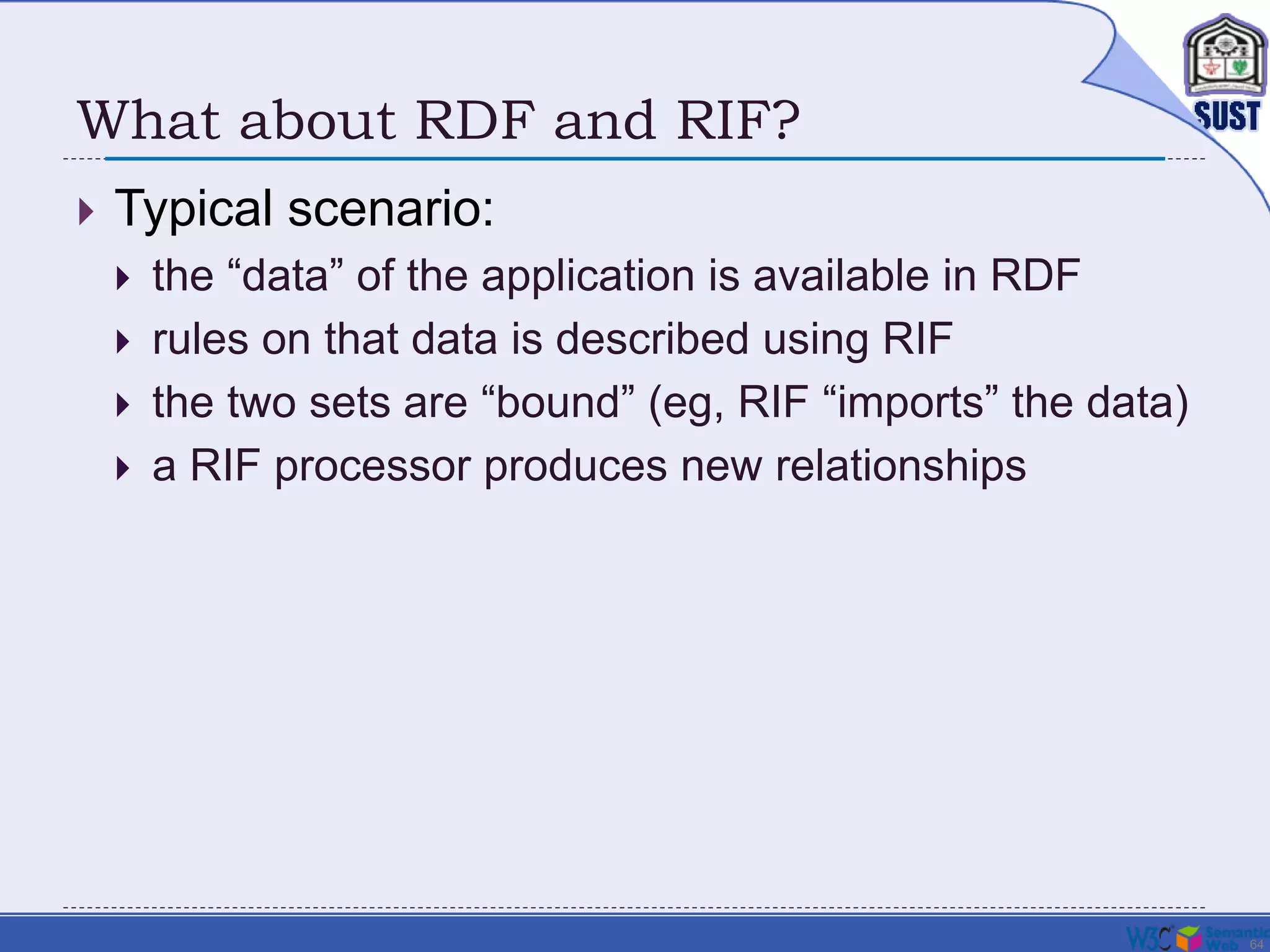
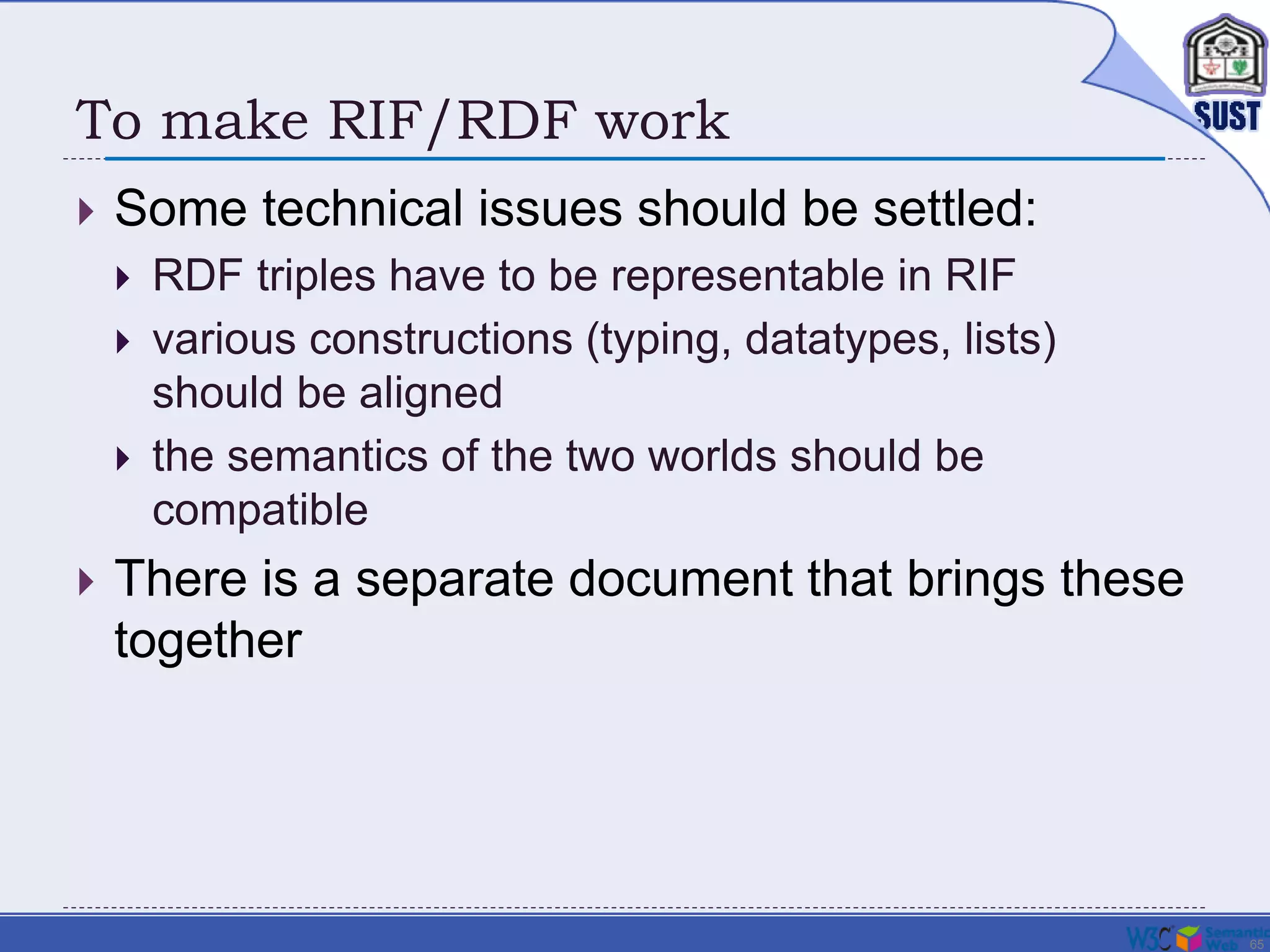
![66
Remember the what we wanted from Rules?
{
?x rdf:type p:Novel;
p:page_number ?n;
p:price [
p:currency :€;
rdf:value ?z
].
?n > "500"^^xsd:integer.
?z < "20.0"^^xsd:double.
}
=>
{ <me> p:buys ?x }](https://image.slidesharecdn.com/ontov2-150615120348-lva1-app6891/75/Semantic-web-Technology-66-2048.jpg)
![67
The same with RIF Presentation syntax
Document (
Prefix …
Group (
Forall ?x ?n ?z (
<me>[p:buys->?x] :-
And(
?x rdf:type p:Novel
?x[p:page_number->?n p:price->_abc]
_abc[p:currency->:€ rdf:value->?z]
External( pred:numeric-greater-than(?n "500"^^xsd:integer) )
External( pred:numeric-less-than(?z "20.0"^^xsd:double) )
)
)
)
)](https://image.slidesharecdn.com/ontov2-150615120348-lva1-app6891/75/Semantic-web-Technology-67-2048.jpg)
![68
Discovering new relationships…
Forall ?x ?n ?z (
<me>[p:buys->?x] :-
And(
?x # p:Novel
?x[p:page_number->?n p:price->_abc]
_abc[p:currency->:€ rdf:value->?z]
External( pred:numeric-greater-than(?n "500"^^xsd:integer) )
External( pred:numeric-less-than(?z "20.0"^^xsd:double) )
)
)](https://image.slidesharecdn.com/ontov2-150615120348-lva1-app6891/75/Semantic-web-Technology-68-2048.jpg)
![69
Discovering new relationships…
Forall ?x ?n ?z (
<me>[p:buys->?x] :-
And(
?x # p:Novel
?x[p:page_number->?n p:price->_abc]
_abc[p:currency->:€ rdf:value->?z]
External( pred:numeric-greater-than(?n "500"^^xsd:integer) )
External( pred:numeric-less-than(?z "20.0"^^xsd:double) )
)
)
<http://…/isbn/…> a p:Novel;
p:page_number "600"^^xsd:integer ;
p:price [ rdf:value "15.0"^^xsd:double ; p:currency :€ ] .
combined with:](https://image.slidesharecdn.com/ontov2-150615120348-lva1-app6891/75/Semantic-web-Technology-69-2048.jpg)
![70
Discovering new relationships…
Forall ?x ?n ?z (
<me>[p:buys->?x] :-
And(
?x # p:Novel
?x[p:page_number->?n p:price->_abc]
_abc[p:currency->:€ rdf:value->?z]
External( pred:numeric-greater-than(?n "500"^^xsd:integer) )
External( pred:numeric-less-than(?z "20.0"^^xsd:double) )
)
)
<http://…/isbn/…> a p:Novel;
p:page_number "600"^^xsd:integer ;
p:price [ rdf:value "15.0"^^xsd:double ; p:currency :€ ] .
combined with:
<me> p:buys <http://…/isbn/…> .
yields:](https://image.slidesharecdn.com/ontov2-150615120348-lva1-app6891/75/Semantic-web-Technology-70-2048.jpg)
